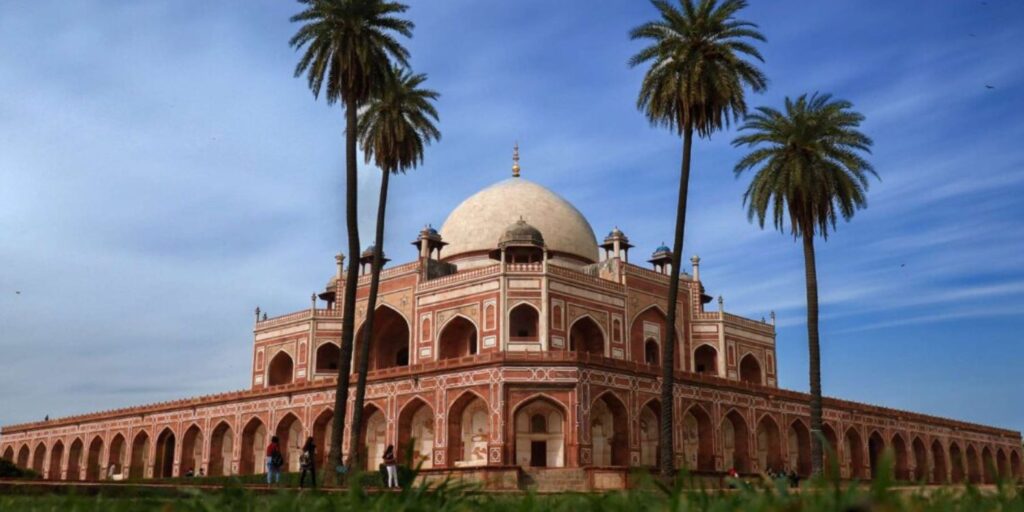In the heart of India, where history whispers through ancient walls, culture dances in vibrant bazaars, and modernity thrives in bustling streets, lies the places to visit in Delhi.
However, this city that embraces you with its rich tapestry of 90 places to visit in Delhi, each telling its own story.
This is not just a guide; it’s an odyssey through the soul-stirring experiences that define Delhi, a metropolis that seamlessly blends tradition and contemporary allure.
Delhi unfolds like a vivid painting with its timeless monuments, bustling markets, and diverse neighborhoods.
Further, from the grandeur of India Gate to the tranquillity of Lodhi Gardens, the historical depth of Qutub Minar to the eclectic charm of Hauz Khas Village, every place in this curated list invites you to explore, discover, and experience the essence of the city.
Initially, in “Soulful Capital: 90 Places to Visit in Delhi,” we embark on a journey through time, where the imposing structures of Red Fort and Humayun’s Tomb stand testament to the city’s Mughal legacy.
We wander through the narrow lanes of Chandni Chowk, where the aroma of street food mingles with the echoes of centuries-old traditions.
1. India Gate

A national symbol and war memorial exuding grandeur.
India Gate, a timeless icon in New Delhi, stands proudly as a tribute to the courage of Indian soldiers who sacrificed during World War I.
However, completed in 1931, this architectural masterpiece by Sir Edwin Lutyens serves as a solemn memorial with an eternal flame, the Amar Jawan Jyoti, symbolizing the indomitable spirit of the Nation’s defenders.
Surrounded by lush lawns, it invites reflection and remembrance. Illuminated in the evenings, India Gate symbolizes unity and pride, welcoming people from all walks of life.
Moreover, with no entry fee, it is a democratic monument, a poignant reminder of sacrifice, and a cultural landmark representing India’s rich heritage.
a) Built-in: India Gate, the iconic war memorial in New Delhi, was constructed in 1931.
b) Purpose: Initially, it commemorates the Indian soldiers who sacrificed their lives during World War I.
c) Architectural Marvel: Designed by Sir Edwin Lutyens, the monument is a testament to his architectural brilliance.
d) Accessibility: Moreover, entry to India Gate is free of charge, making it an inclusive destination for all.
e) Visiting Hours: While no specific opening hours exist, many prefer to visit during the early morning or late evening for a serene experience.
2. Qutub Minar

An iconic UNESCO World Heritage Site standing tall in Mehrauli. Qutub Minar, a UNESCO World Heritage Site, rises majestically in Places to Visit in Delhi, embodying India’s rich history.
However, this iconic tower was commissioned by Qutub-ud-din Aibak in 1199 and stands as the world’s tallest brick minaret at 73 meters. Its intricate carvings and architectural brilliance showcase Indo-Islamic artistry.
The Qutub Minar complex includes ancient structures like the Quwwat-ul-Islam Mosque and the Iron Pillar, known for their corrosion resistance.
Moreover, visiting this historical marvel reveals a fascinating narrative of Delhi’s evolution. Open to the public, the site is a testament to India’s cultural diversity and architectural prowess, attracting visitors with its timeless allure.
With nominal entry fees, Qutub Minar invites all to explore its historical grandeur and unravel the layers of Delhi’s past.
a) Built-in: Qutub Minar, a UNESCO World Heritage Site, was constructed in the early 13th century.
b) Architectural Gem: Moreover, designed in Indo-Islamic style, it is a splendid example of medieval Indian architecture.
c) Height: Soaring to a height of 73 meters, Qutub Minar is the world’s tallest brick minaret.
d) Purpose: Initially built to celebrate Muslim dominance in Delhi, it later served as a call to prayer.
e) Fees: Free for children beneath 15, 10 for Indians, and 250 for foreigners
3. Red Fort

The Red Fort, an architectural gem in Old Delhi, is a testament to Mughal grandeur and India’s historical must Places to Visit in Delhi.
Additionally, authorized by Emperor Shah Jahan in the mid-17th century, it served as the main residence for Mughal emperors for nearly two centuries.
Constructed with red sandstone, the fort’s intricate design includes opulent palaces, lush gardens, and majestic gates, such as the Lahore Gate and the Delhi Gate.
The fort witnessed significant historical events, including the hoisting of the Indian National Flag on August 15, 1947.
Moreover, open to the public, it allows exploration of India’s regal past, making it a cultural and historical treasure.
a) Built-in: The Red Fort, also known as Lal Qila, was built in the mid-17th century.
b) Architectural Marvel: A masterpiece of Mughal architecture, it was constructed by Emperor Shah Jahan.
c) Significance: However, the fort was the main home of the Mughal rulers for almost 200 years.
d) Fees: Free for children under 15, INR 10 for Indians, and INR 250 for foreigners
e) Visiting Hours: Open to the public from sunrise to sunset, the fort offers a glimpse into India’s rich history and cultural heritage.
f) You can also explore the best tourist spots in Delhi here
4. Humayun’s Tomb

Humayun’s Tomb, a UNESCO World Heritage Site, graces the landscape of Delhi with its enchanting Mughal architecture.
However, commissioned by Empress Bega Begum in the mid-16th century, this garden tomb symbolizes love and grief dedicated to Emperor Humayun.
Its design, reminiscent of the Taj Mahal, features red sandstone and white marble, creating an awe-inspiring visual spectacle.
Surrounded by Char Bagh gardens, the tomb complex offers a tranquil retreat. Intricate latticework, delicate carvings, and a stunning central dome adorn the structure.
Additionally, a testament to the architectural finesse of the Mughals, Humayun’s Tomb influences various historical monuments in India.
Moreover, open to visitors, it is a timeless masterpiece, narrating tales of an era characterized by art, culture, and enduring love, and one of a must Places to Visit in Delhi.
a) Built-in: Humayun’s Tomb, a UNESCO World Heritage Site, was built in the mid-16th century.
b) Architectural Grandeur: A jewel of Mughal architecture, the Tomb is a predecessor to the Taj Mahal.
c) Commissioned By: However, the Tomb was commissioned by Empress Bega Begum, Humayun’s widow, showcasing the love and grief of a wife for her husband.
d) Entry Fees: INR 10 for domestic and SAARC Visitors, INR 250 for others
5. Lotus Temple

However, the Bahá’í House of Worship, an architectural marvel. The Lotus Temple, a current architectural phenomenon in Places to Visit in Delhi, symbolizes unity, peace, and the Bahá’í Faith.
Completed in 1986, this lotus-shaped temple was designed by Iranian architect Fariborz Sahba. As a Bahá’í House of Worship, it accepts people of all faiths to pray and meditate.
The temple’s design represents the lotus, a universal symbol of purity and enlightenment, creating a visually striking and spiritually uplifting atmosphere.
Further, surrounded by lush gardens and reflective pools, the Lotus Temple offers a serene retreat from the city’s hustle and bustle.
With no entry fee, it promotes inclusivity and is a testament to the Bahá’í principles of unity and oneness of humanity.
Moreover, recognized for its architectural excellence, the Lotus Temple attracts visitors worldwide, fostering a sense of harmony and spiritual contemplation.
a) Built-in: The Lotus Temple, completed in 1986, is a contemporary architectural marvel in Delhi.
b) Architectural Uniqueness: Designed by Iranian architect Fariborz Sahba, it is renowned for its lotus flower-inspired structure.
c) Bahá’í House of Worship: The temple is a Bahá’í House of Worship, welcoming people of all faiths to pray and meditate.
d)Symbolism: Further, the lotus symbolizes purity and unity across various cultures, making it a powerful symbol of peace.
e) Entry fee: Free
f) Opening hours: Tuesday – Sunday, 9:30 am – 5 pm (winters) & 9:30 am – 7 pm (summers)
6. Akshardham Temple

Additionally, a modern complex showcasing traditional craftsmanship. Akshardham Temple, a contemporary masterpiece places to Visit in Delhi, is a testament to India’s rich cultural and spiritual heritage.
Inaugurated in 2005, the temple is a part of the larger Akshardham Complex, dedicated to Bhagwan Swaminarayan.
Initially, inspired by ancient Vedic principles, its architectural splendour captivates visitors with intricate carvings and artistic details.
The main mandir, the Abhishek mandap, and the Yagnapurush Kund, the world’s largest stepwell, are central features.
Moreover, the Sahaj Anand Water Show narrates inspiring episodes from Swaminarayan’s life. Surrounded by the Garden of India, showcasing the Nation’s diverse flora, the temple provides a holistic cultural experience.
With no entry fee for the temple, visitors can immerse themselves in spirituality, technology, and the timeless wisdom of the Swaminarayan Akshardham philosophy.
Further, the temple is a beacon of peace and enlightenment, attracting devotees and tourists alike.
a) Built By: Bochasanwasi Shri Akshar Purushottam Swaminarayan Sanstha (BAPS)
b) Built In: November 6 2005
c) Entry fee: Free, separate fee to view exhibitions
d) Opening hours: 9.30 am to 6.30 pm. Closed on Mondays
7. Jama Masjid

However, Jama Masjid, a timeless architectural marvel in Old Delhi and one of the must Places to Visit in Delhi, epitomizes Mughal grandeur and religious significance.
Completed in 1656, this monumental mosque, showcasing exquisite Mughal architecture, was commissioned by Emperor Shah Jahan.
Initially, its vast courtyard, capable of accommodating up to 25,000 worshippers, exudes a sense of grandiosity. The central dome and towering minarets contribute to the mosque’s majestic presence, creating an awe-inspiring skyline.
Jama Masjid holds immense religious significance for the Muslim community, serving as a place of worship and reflection.
Moreover, with a nominal entry fee, it welcomes visitors to experience its historical and spiritual aura. Open during specific hours, it is a testament to Delhi’s rich cultural heritage.
a) Built By: Shah Jahan
b) Built In: 1650
c) Entry fee: Free, but the videography fee is INR 300
d) Opening hours: Moreover, daily, 7 am-12 pm: 1:30 pm-6:30 pm. It is closed during prayers, and the timing depends upon the moon’s direction.
e) Must visit: Try Changezi chicken at Karim’s Hotel nearby
8. Raj Ghat

The serene memorial to Mahatma Gandhi and his principles.
Raj Ghat, a poignant memorial in Delhi, is an eternal flame that pays homage to the Father of the Nation, Mahatma Gandhi.
Moreover, established on January 30, 1948, the site marks the spot where Gandhiji was cremated following his assassination.
Surrounded by tranquil gardens on the banks of the Yamuna River, Raj Ghat serves as a sacred place for reflection and remembrance.
Raj Ghat is open to the public throughout the day with no entry fee. Visitors can pay their respects and observe the peaceful surroundings reflecting Gandhi’s non-violent and truthful principles.
However, Raj Ghat is a silent witness to India’s struggle for independence and a beacon of inspiration for future generations.
a) Built By: Vanu G. Bhuta
b) Built In:1948
c) Entry fee: Free
d) Opening hours: 10 am to 5 pm. Closed on Mondays
9. Chandni Chowk

A bustling market, the heartbeat of Old Delhi and a places to Visit in Delhi. Chandni Chowk, a bustling market in Old Delhi, is a vibrant tapestry woven with centuries of history, commerce, and cultural diversity.
Moreover, established in the 17th century by Shah Jahan’s daughter, Jahanara Begum, this historic market reflects the architectural charm of Mughal, Victorian, and contemporary eras.
Renowned for its narrow lanes and chaotic yet charismatic atmosphere, Chandni Chowk is a shopping paradise.
Further, the market offers an eclectic array of goods, from textiles and jewellery to spices and electronics. Paranthe Wali Gali, a street famous for its delectable parathas, is a gastronomic delight for food enthusiasts.
a) Built By: Shah Jahan
b) Built In: 1650 AD
c) Opening hours: 9.30 am to 8 pm (except Sunday)
d) Must visit: The Flea Market every Sunday morning, Nayi Sadak, Daryaganj
10. Connaught Place

However, the central hub offers shopping, dining, and entertainment. Connaught Place, often called the heart of Places to Visit in Delhi, is a timeless commercial and cultural hub that encapsulates the city’s cosmopolitan spirit.
Established during the British colonial era, Connaught Place is a meticulously designed shopping and business district surrounded by Georgian-style architecture.
Moreover, connaught Place is not just a commercial center; it’s a living testimony to Delhi’s evolution over the decades.
Whether strolling through its colonial-era corridors, savoring diverse cuisines, or experiencing its vibrant nightlife, Connaught Place remains an indispensable part of Delhi’s identity.
a) Built By: Architect Robert Tor Russell
b) Built In: 1929 to 1933
c) Famous Foods: North Indian, regional, and international cafes
d) Special Pick: Minar, Kake da Hotel, Jain Chawal Wale, Parikrama, and lots more.
11. Hauz Khas Village
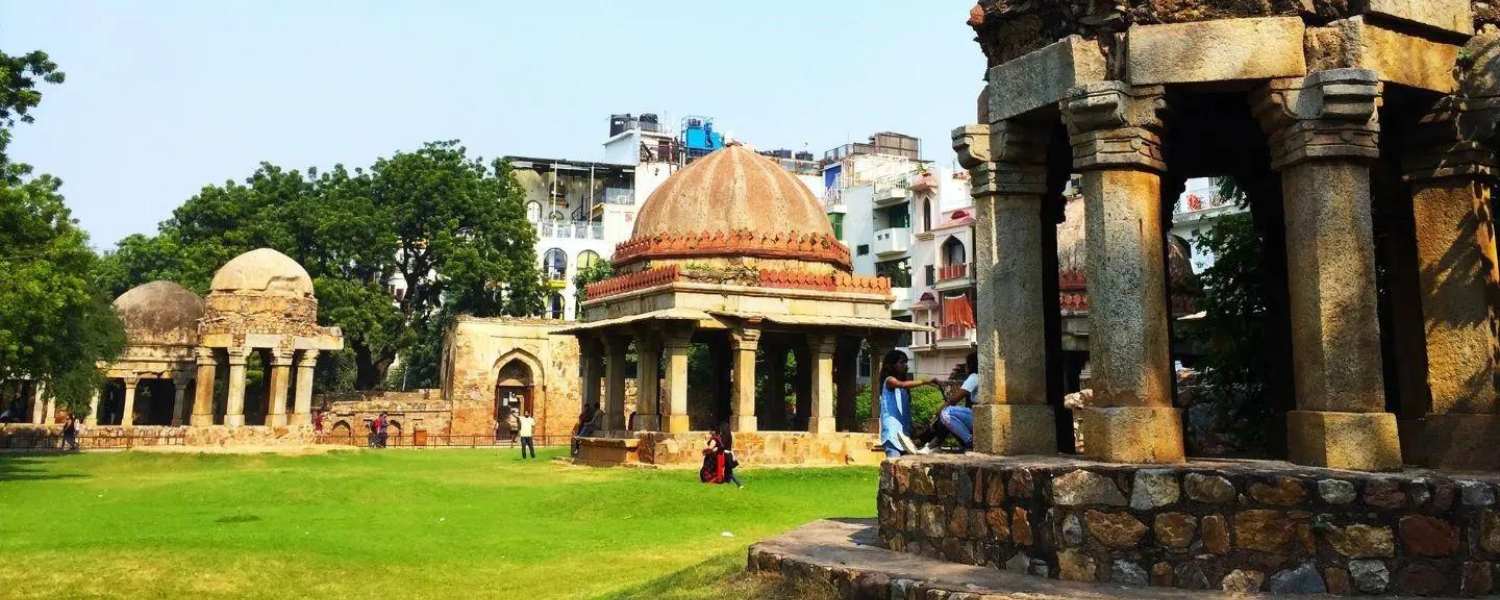
Additionally, it is a trendy neighborhood with a historical backdrop. Hauz Khas Village, nestled amidst the greenery of South Delhi, is a trendy and eclectic neighborhood that seamlessly blends history, art, and a vibrant contemporary lifestyle.
Hauz Khas Village is a fashionista’s paradise. The area has numerous fashion boutiques and concept stores showcasing contemporary and traditional designs.
Hauz Khas Village is a testament to Places to Visit in Delhi’s evolving ability while preserving its historical roots.
Initially, it’s a unique blend of the ancient and the contemporary, providing a multifaceted experience for those who explore its vibrant streets.
a) Built By: Alauddin Khilji
b) Built In: 14th century
c) Entry fee: Free
d) Opening hours: Sunrise to sunset
12. India Habitat Centre

However, a cultural complex hosting art, music, and theatre. The India Habitat Centre (IHC) in Delhi is a beacon of cultural vibrancy and intellectual pursuits, a sprawling complex designed to nurture the arts, dialogue, and collaborative endeavors.
Established in 1993, this architectural marvel, designed by Joseph Stein, serves as a cultural hub, promoting creativity, exchange of ideas, and artistic expression.
Moreover, the India Habitat Centre’s diverse cultural palette and intellectual pursuits are a testament to the power of art, dialogue, and collaboration in shaping a vibrant and harmonious society.
Initially, it is not merely a physical space; it’s a living, breathing entity that embodies the spirit of creativity and cultural exchange in the heart of India’s capital.
a) Entry fee: No entry fee
b) Opening hours: 8 am to 10 pm
c) Must visit: All American Diner, Lodhi Colony’s Street Art Walls, Library
d) Tip: Carry a camera and try out the delicious food at the American Diner.
13. Nizamuddin Dargah
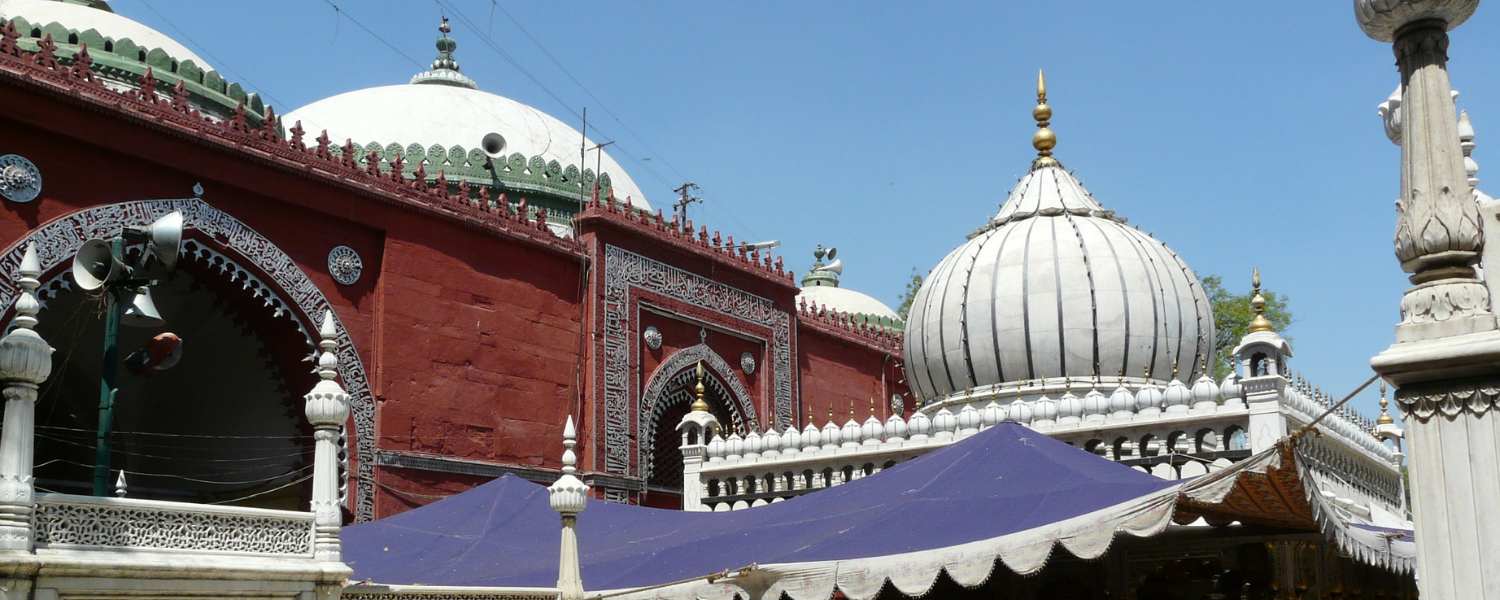
Initially, in the heart of Delhi, Nizamuddin Dargah is a sacred mausoleum that radiates spiritual serenity and celebrates the Sufi tradition.
Moreover, this timeless shrine is dedicated to Hazrat Nizamuddin Auliya, a revered Sufi saint, and has been a source of divine inspiration for centuries and a must-visit Places to Visit in Delhi.
With its timeless spiritual legacy and inclusive ethos, Nizamuddin Dargah symbolizes harmony and devotion. It continues to be a sanctuary where the soul finds solace and hearts are united in pursuing divine love.
a) Built By: Muhammad Tughlaq
b) Built In: November 3, 1972
c) Opening hours: The entry is from 5:00 am to 10:30 pm.
d) Entry Fee: No entry fee
14. Lodhi Gardens
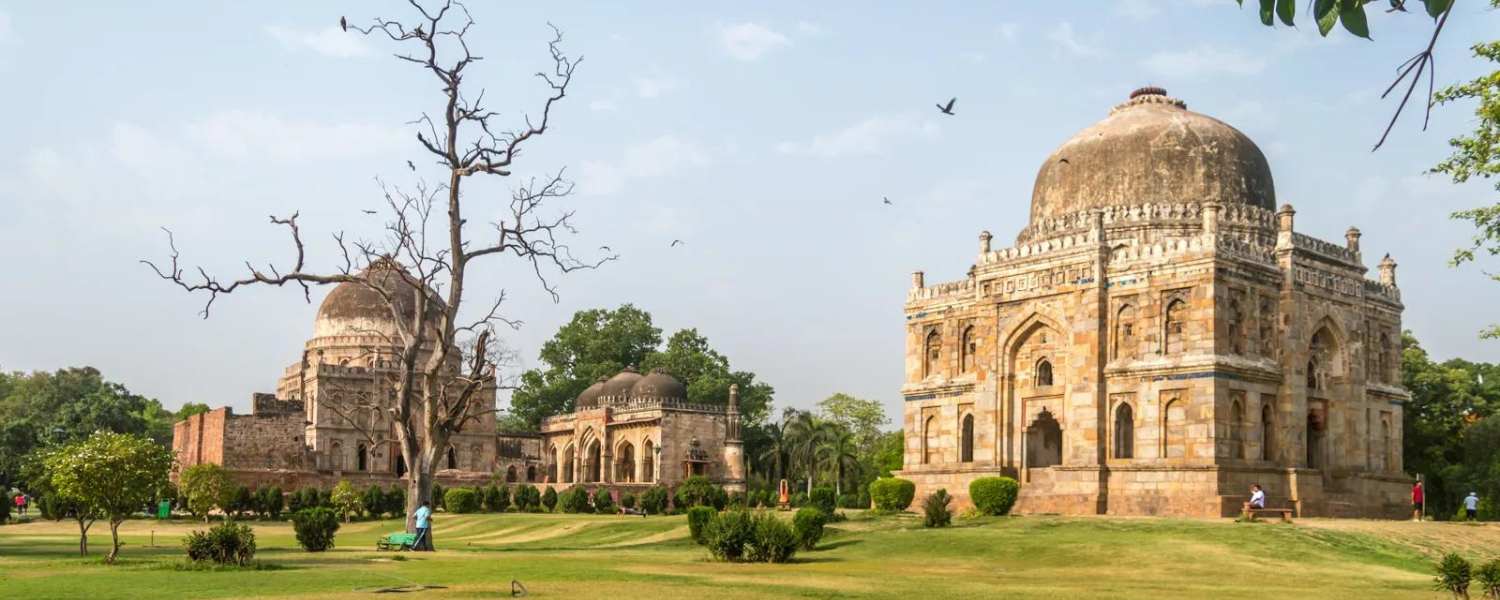
Lodhi Gardens, a verdant oasis in the heart of Delhi, is a testament to the city’s ability to integrate historical heritage with natural beauty. However, this sprawling public park spans 90 acres and has many historical monuments, lush landscapes, and serene water bodies.
Mainly, with its amalgamation of history, nature, and community engagement, Lodhi Gardens is a testament to Delhi’s dedication to keeping its heritage while embracing modernity. Moreover, it is a space where the past coexists harmoniously with the present, creating a sanctuary for relaxation, recreation, and cultural appreciation.
a) Built By: Sayyid Dynasty, Lodhi Dynasty
b) Opening hours: 5 am to 8 pm
c) Nearest Metro Station: Jawaharlal Nehru Stadium or Khan Market
15. Gurudwara Bangla Sahib
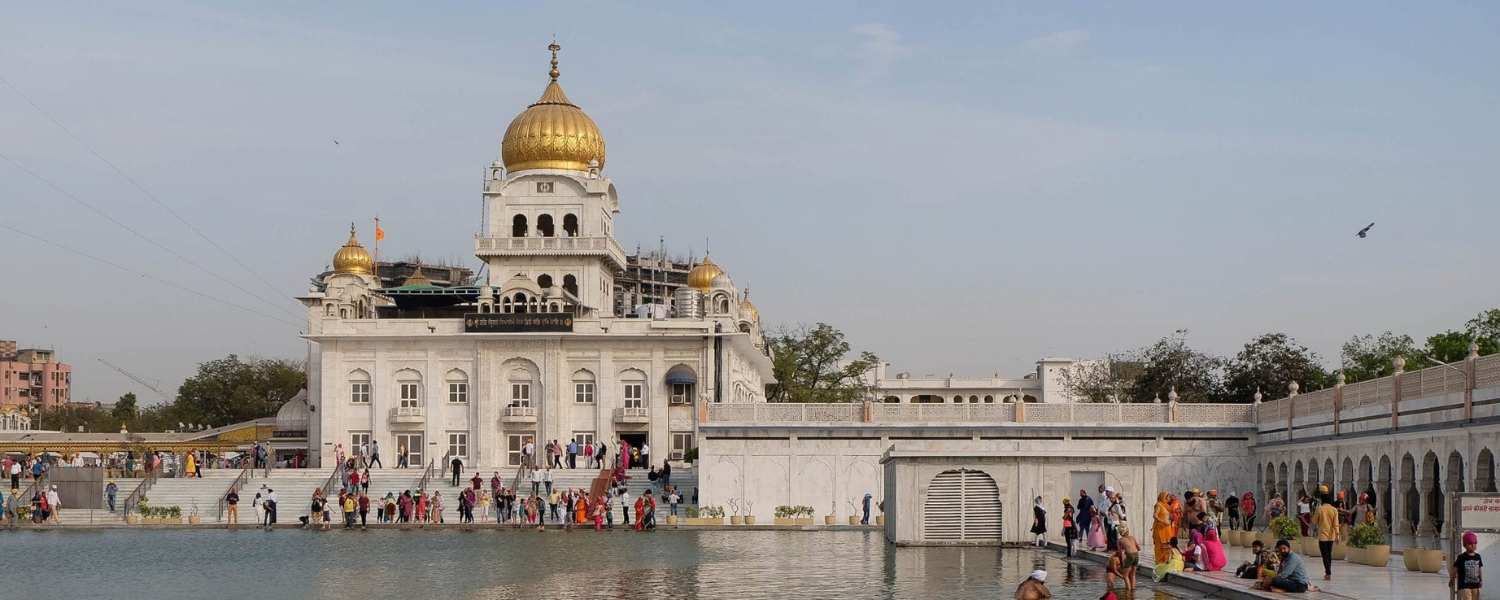
Gurudwara Bangla Sahib, a spiritual haven in the heart of Delhi, stands as a beacon of Sikh faith and hospitality.
However, this revered Sikh shrine, associated with the eighth Sikh Guru, Guru Har Krishan Sahib Ji, is a place of worship and a symbol of selfless service and community welfare.
Gurudwara Bangla Sahib, with its spiritual sanctity, commitment to community welfare, and architectural splendour, is a testament to the Sikh values of equality, service, and devotion.
Initially, it is not just a place of worship; it is a living embodiment of the Sikh way of life and a symbol of Delhi’s rich religious diversity & one of a blessed Places to Visit in Delhi.
a) Built By: General Sardar Bhagel Singh
b) Built In: 1783
c) Entry Fee: Free
d) Opening hours: Everyday
16. National Gallery of Modern Art
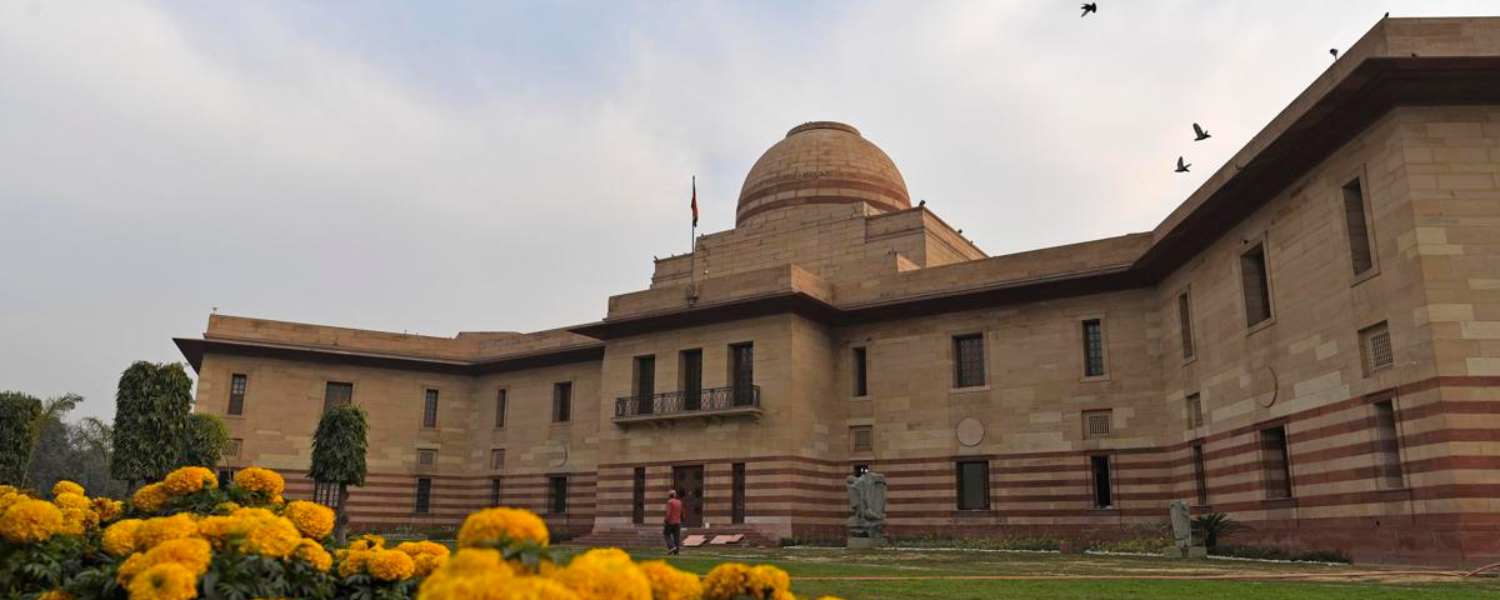
Moreover, the National Gallery of Modern Art (NGMA) in New Delhi is a guardian of India’s artistic heritage, showcasing a diverse modern and contemporary art collection.
However, established in 1954, NGMA has evolved into a cultural institution that preserves the Nation’s artistic legacy and fosters a deeper understanding of visual arts.
The National Gallery of Modern Art, with its rich collection, educational initiatives, and commitment to cultural exchange, stands as a guardian of India’s artistic legacy and one of a divine Places to Visit in Delhi.
Initially, it serves as a testament to the evolution of art in the country, providing a space where the past and present converge to inspire and educate.
a) Opening hours: 11 am to 6.30 pm. This museum is closed on Mondays and national holidays.
b) Entry fees: Rs. 20 for Indians and Rs. 500 for foreigners. Students’ entry is free.
c) Tip: This place is a must-visit for all art enthusiasts to discover modern art techniques on display.
17. Dilli Haat
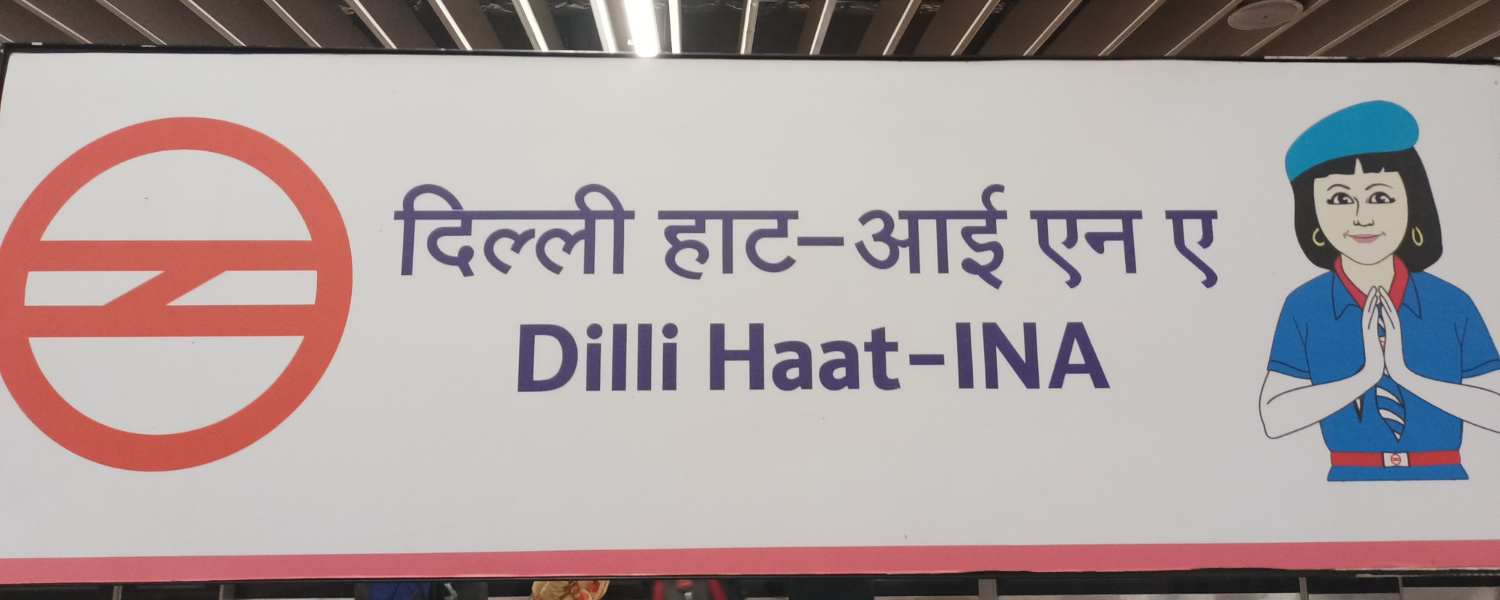
Additionally, a vibrant market showcasing diverse regional crafts and cuisines. Dilli Haat, an embodiment of India’s cultural diversity and craftsmanship, stands as a vibrant marketplace where traditional arts, crafts, and cuisines from different states converge.
Moreover, established to promote rural artisans and provide a platform for cultural exchange, Dilli Haat has become a cultural melting pot and a must Places to Visit in Delhi.
With its dynamic fusion of art, craft, and cuisine, Dilli Haat is a microcosm of India’s cultural richness. Further, it’s not just a marketplace; it’s an immersive experience where tradition meets modernity, and the spirit of Indian craftsmanship comes alive.
a) Entry fee: INR 20
b) Opening hours: 10 am to 10 pm, Daily
c) Must visit: Further, for theatre performances in Delhi, visiting any theatres near Mandi House is suggested.
18. Sarojini Nagar Market
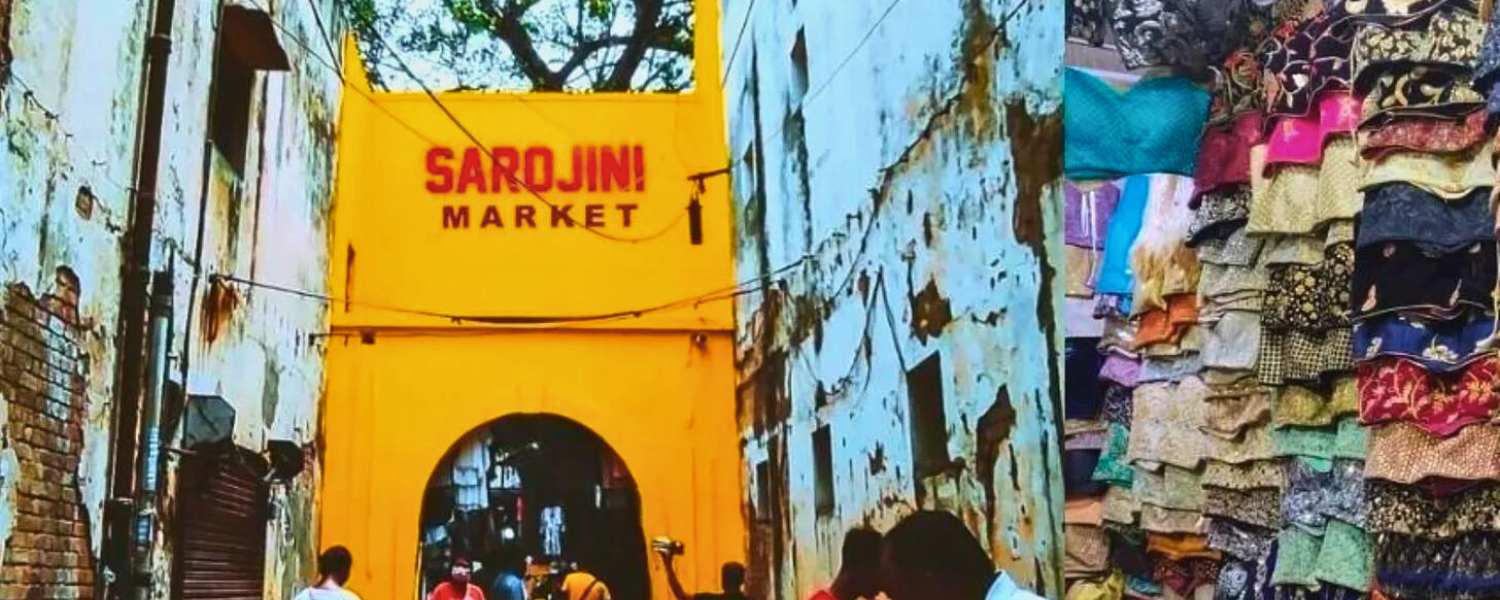
However, Sarojini Nagar Market, a bustling shopping Places to Visit in Delhi, stands as a testament to the city’s vibrant street shopping culture.
Renowned for its affordable and trendy fashion, Sarojini Nagar Market has become a go-to place for locals and tourists, offering a delightful mix of fashion, accessories, and more.
With its unique blend of affordability, trendiness, and cultural charm, Sarojini Nagar Market has secured its place as a quintessential shopping spot in Delhi. Initially, it continues to attract fashion enthusiasts seeking the thrill of finding fashionable treasures at unbeatable prices.
a) Opening hours: 10:00 am to 9:00 pm. All days of the week except Monday
b) Nearest Metro Station: INA Metro Station
c) Distance from Delhi airport: 27 min (9.9 km)
19. Khan Market

Additionally, posh locales offering upscale boutiques and eateries. Khan Market, installed in the hub of Places to Visit in Delhi, stands as a sophisticated and upscale shopping and dining destination.
Moreover, renowned for its posh ambiance, high-end boutiques, and diverse culinary offerings, Khan Market caters to the city’s discerning residents and tourists seeking a blend of luxury, style, and culinary delights.
With its blend of luxury, culinary excellence, and cultural offerings, Khan Market epitomizes Delhi’s cosmopolitan spirit. Initially, it is a favoured destination for sophisticated and upscale retail and culinary experience.
a) Built In: 1951
b) Opening hours: every day from 10.00 am to 11.00 pm except Sundays.
c) Nearest Metro Station: Khan Market metro station
20. Rajpath

However, the ceremonial boulevard connecting India Gate to the President’s House. Rajpath, meaning the “King’s Way,” is more than just a ceremonial boulevard in the heart of New Delhi.
Initially, it symbolizes India’s historical and political significance, serving as the city’s central axis and hosting grand events that mark the country’s milestones.
Rajpath, with its historical resonance, ceremonial importance, and architectural splendour, is not just a boulevard; it’s a living canvas that narrates the story of India’s past, present, and aspirations for the future.
a) Built By: Edwin Lutyens and Herbert Baker
b) Built In 1931
c) Tip: Arrive early or late in the evening when the area is lit.
d) Opening hours: Always open
21. Purana Qila
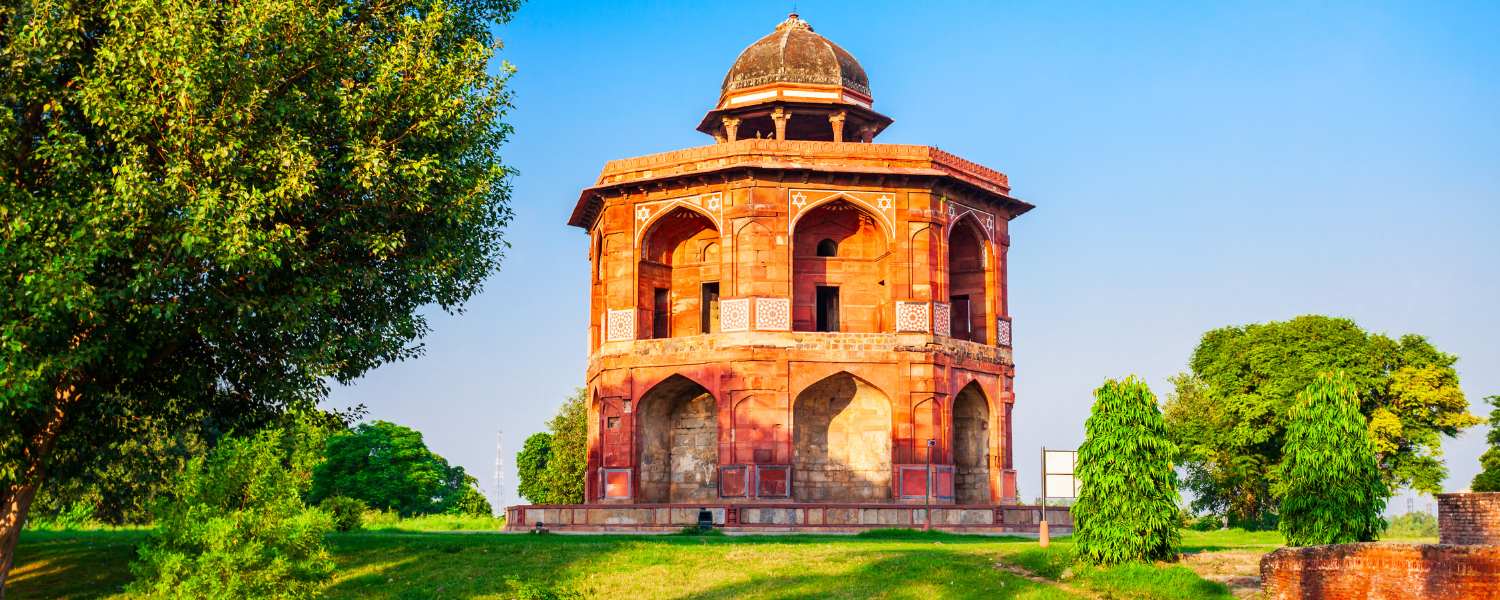
Moreover, it is an ancient fort with historical significance. Standing on the stakes of the Yamuna River in Delhi, Purana Qila is a historical fortress that encapsulates centuries of Indian history.
Further, translated to “Old Fort,” this monumental complex is an architectural marvel and a repository of diverse cultural influences from ancient times to the Mughal era.
Purana Qila, with its ancient roots, Mughal influences, and cultural vibrancy, is a living testament to Delhi’s rich and diverse history. Initially, it invites visitors to traverse the corridors of time and immerse themselves in the grandeur of bygone eras.
a) Built By: Mughal Emperor Humayun.
b) Built-in: Construction of Purana Qila began in the mid-16th century
c) Entry Fees: ₹ 30 for Indians; ₹ 500 for foreigners; free for children below 15 years
22. National Museum
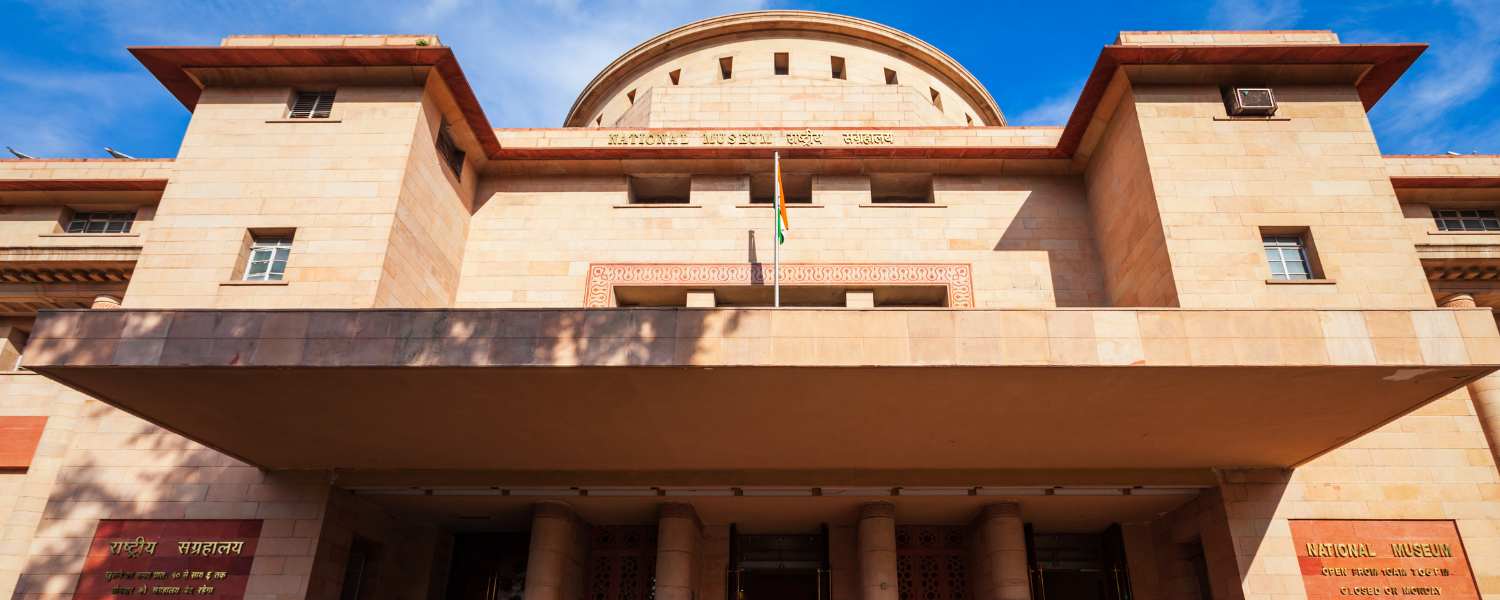
Additionally, there is a treasure trove of artifacts spanning India’s history and a must-see place to visit in Delhi. The National Museum in New Delhi, established in 1949, stands as a custodian of India’s rich cultural and artistic heritage.
Moreover, as one of the largest museums in the country, it boasts an extensive collection of artefacts, artworks, and cultural relics that span centuries, providing a comprehensive journey through India’s history, art, and cultural diversity.
The National Museum, with its vast and diverse collection, serves as a cultural beacon, illuminating the richness and depth of India’s heritage. Initially, it invites guests to journey through time, exploring the art, history, and cultural tapestry that define this diverse and dynamic Nation.
a) Built In August 5, 1949
b) Opening hours: 10 am to 6 pm.
c) Entry fees: 20 for Indians / 650 for foreigners.
23. Rashtrapati Bhavan
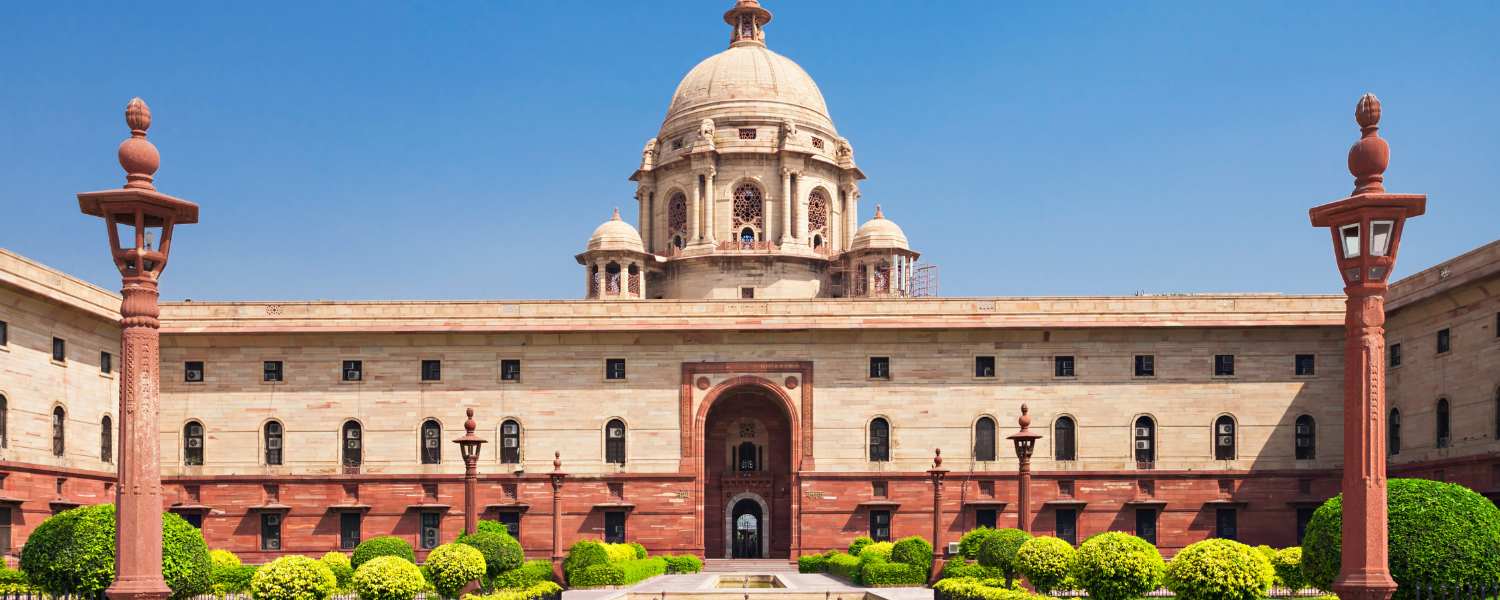
However, the authorized home of the President of India. Rashtrapati Bhavan, the official residence of the President of India, is not just an architectural marvel but a symbol of the country’s democratic spirit and historical legacy.
Moreover, perched atop Raisina Hill in New Delhi, this grand edifice encompasses a blend of architectural styles, lush gardens, and a significant role in the political narrative of India.
Rashtrapati Bhavan includes the ‘Presidential Retreat’ at Theog in Himachal Pradesh and ‘The Retreat Building’ in Chharabra near Shimla. Moreover, these retreats serve as tranquil getaways for the president.
Situated in the heart of New Delhi, it’s a once-in-a-lifetime Places to Visit in Delhi, Rashtrapati Bhavan is easily accessible. The Rashtrapati Bhavan complex attracts visitors not only for its historical and political significance but also for its architectural beauty and the allure of the Mughal Gardens.
With its monumental presence and rich history, Rashtrapati Bhavan symbolizes India’s democracy and cultural heritage.
Further, beyond its architectural grandeur, it serves as a dynamic hub where tradition meets modernity and where the highest echelons of governance intersect with the Nation’s cultural fabric.
a) Built By: Sir Edwin Lutyens
b) Built In 1912
c) Opening hours: 9 am till late evening. You can only pre-book at the official Rashtrapati Bhawan website for an inside visit.
24. Gandhi Smriti
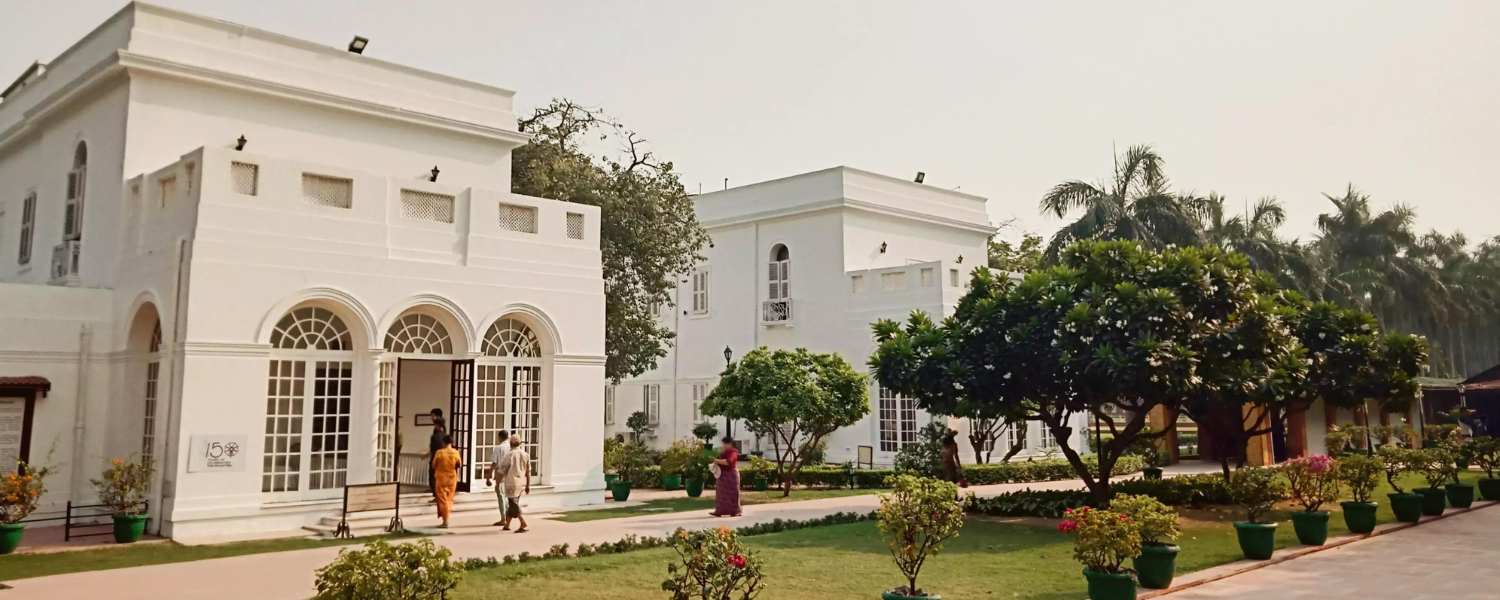
Moreover, the place where Mahatma Gandhi spent his final days. Gandhi Smriti, formerly known as Birla House, is a memorial dedicated to the life and instruction of Mahatma Gandhi, the Father of the Nation.
Further, located in New Delhi, this historical site marks the spot where he spent the last 144 days of his life. The memorial preserves the memories of Gandhi’s final days and serves as a centre for promoting his philosophy of non-violence and truth.
Situated in central Delhi, Gandhi Smriti is easily accessible. Its central location makes it a prominent destination for those seeking to connect with the legacy of Mahatma Gandhi.
Gandhi Smriti, with its tranquil surroundings and meaningful exhibits, stands as a living tribute to the life and principles of Mahatma Gandhi.
Initially, it serves as a beacon for those who seek inspiration from his philosophy of truth, non-violence, and compassion, offering a timeless reminder of the power of resistance and the trust of justice.
a) Built By: Vanu G. Bhuta
b) Built In:1948
c) Entry fee: Free
d) Opening hours: 10 am to 5 pm. Closed on Mondays
25. Shankar’s International Dolls Museum
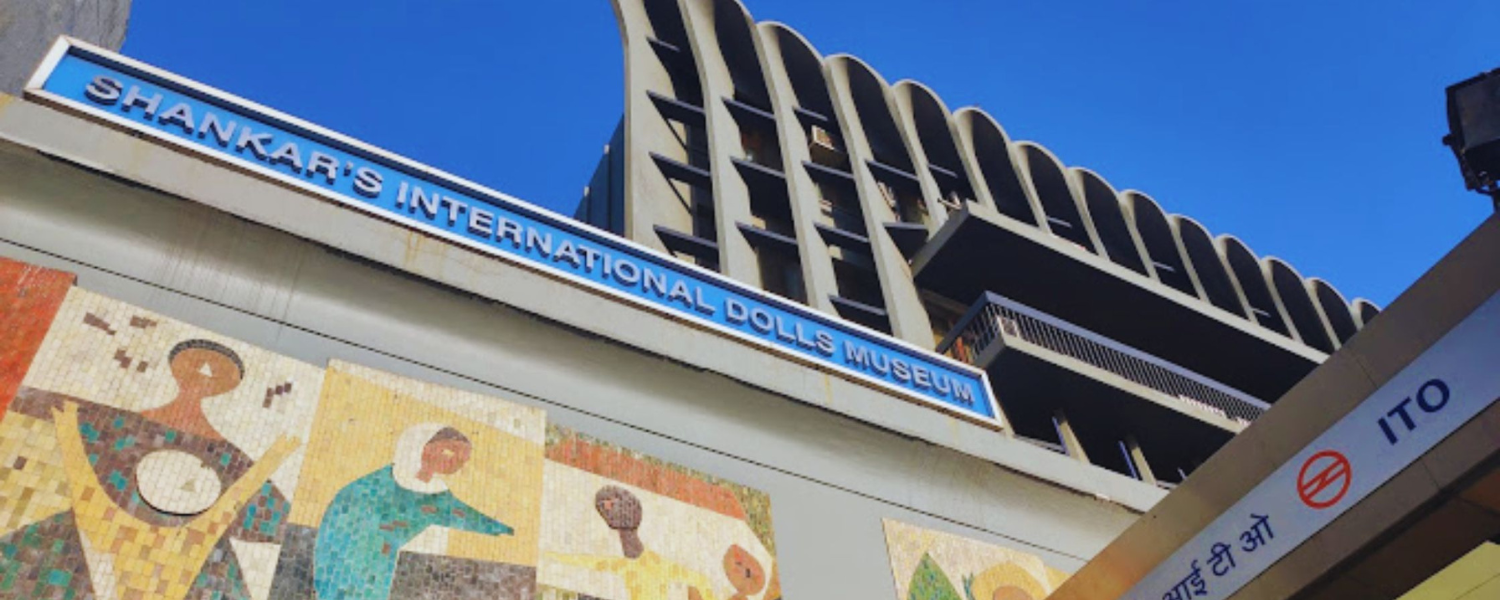
Shankar’s International Dolls Museum, located in New Delhi, is a unique cultural institution that showcases an extensive collection of dolls from around the world and one of a sweet Places to Visit in Delhi.
Moreover, established in 1965 by K. Shankar Pillai, a renowned political cartoonist, the museum aims to promote cultural exchange and understanding by displaying dolls representing the diversity of global traditions, costumes, and lifestyles.
Shankar’s International Dolls Museum serves as a cultural repository, preserving diverse communities’ traditional attire, rituals, and customs.
However, the dolls become ambassadors of culture, transcending geographical boundaries to create a sense of shared humanity.
Shankar’s International Dolls Museum offers a captivating and immersive experience for visitors. The well-curated exhibits and the museum’s serene ambiance make it a delightful destination for those seeking a unique cultural encounter.
Situated in the heart of Delhi, Shankar’s International Dolls Museum is easily accessible. Its central location makes it a convenient and culturally enriching destination for locals and tourists.
Shankar’s International Dolls Museum represents dolls’ power as cultural ambassadors. It celebrates the rich tapestry of global traditions, fostering cross-cultural appreciation and understanding through the art of doll-making.
Further, the museum, with its diverse collection, serves as a bridge that connects people across continents, transcending linguistic and geographical barriers.
a) Built By: K. Shankar Pillai
b) Built In 1965
c) Opening hours: 10:00 am to 5.30 pm
26. National Rail Museum
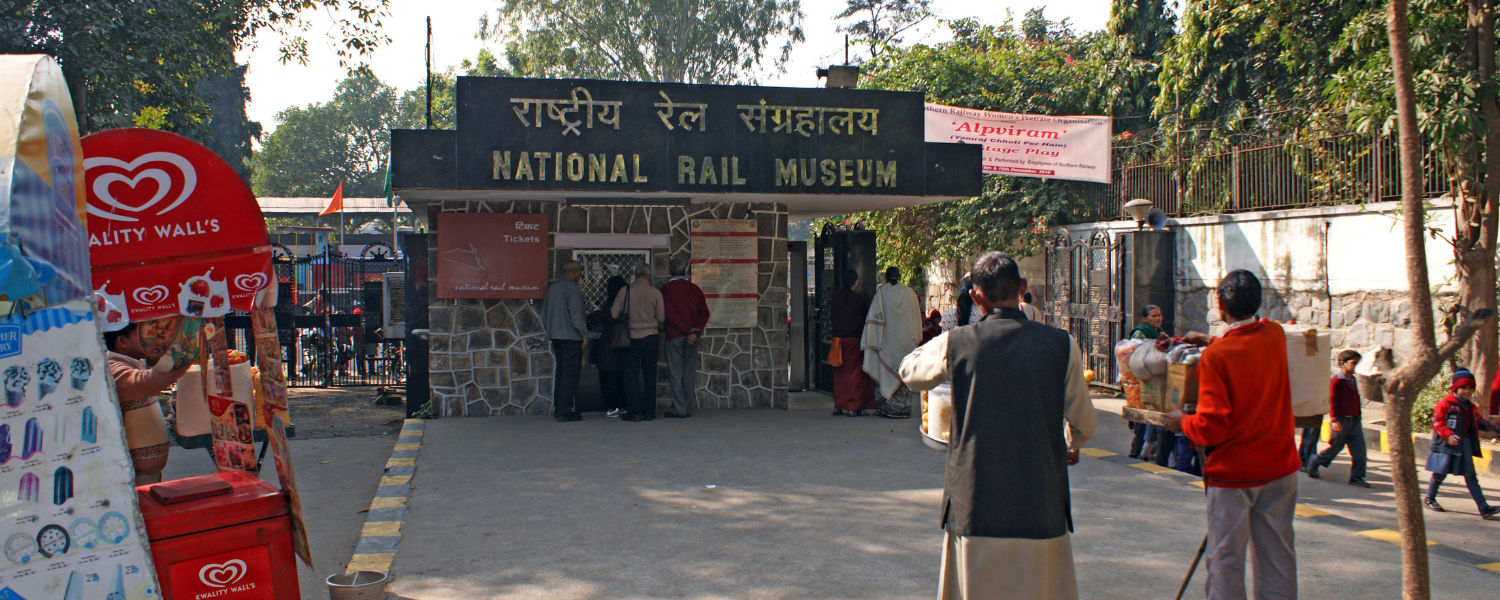
Showcasing the evolution of railways in India. The National Rail Museum in New Delhi is a captivating destination that offers a nostalgic journey through the history of railways in India.
Moreover, established in 1977, the museum is an ode to the evolution of rail transport, showcasing a remarkable collection of vintage locomotives, carriages, and artefacts.
Spread across 11 acres, the National Rail Museum is a delight for railway enthusiasts, history buffs, and families alike.
However, the National Rail Museum offers a delightful toy train ride that takes visitors to the museum’s premises. The miniature railway journey is a favourite among children and adds an interactive element to the overall experience.
The museum helps crucially in keeping India’s railway heritage. Maintaining and showcasing vintage locomotives and carriages ensures that the legacy of Indian Railways is passed on to future generations.
Mainly, situated in Chanakyapuri, the heart of New Delhi, the National Rail Museum is easily accessible. Its central location makes it famous for locals and visitors interested in the history of Indian Railways.
The National Rail Museum, with its impressive collection and interactive exhibits, stands as a dynamic tribute to the railways that have been an integral part of India’s journey.
Initially, it provides a platform for enthusiasts to explore the rich history, technological advancements, and cultural impact of Indian Railways, making it a must go Places to Visit in Delhi.
a) Built In: February 1, 1977
b) Entry fee: INR 20
c) Opening hours: 9:30 am to 5:30 pm.
27. Swaminarayan Akshardham Water Show
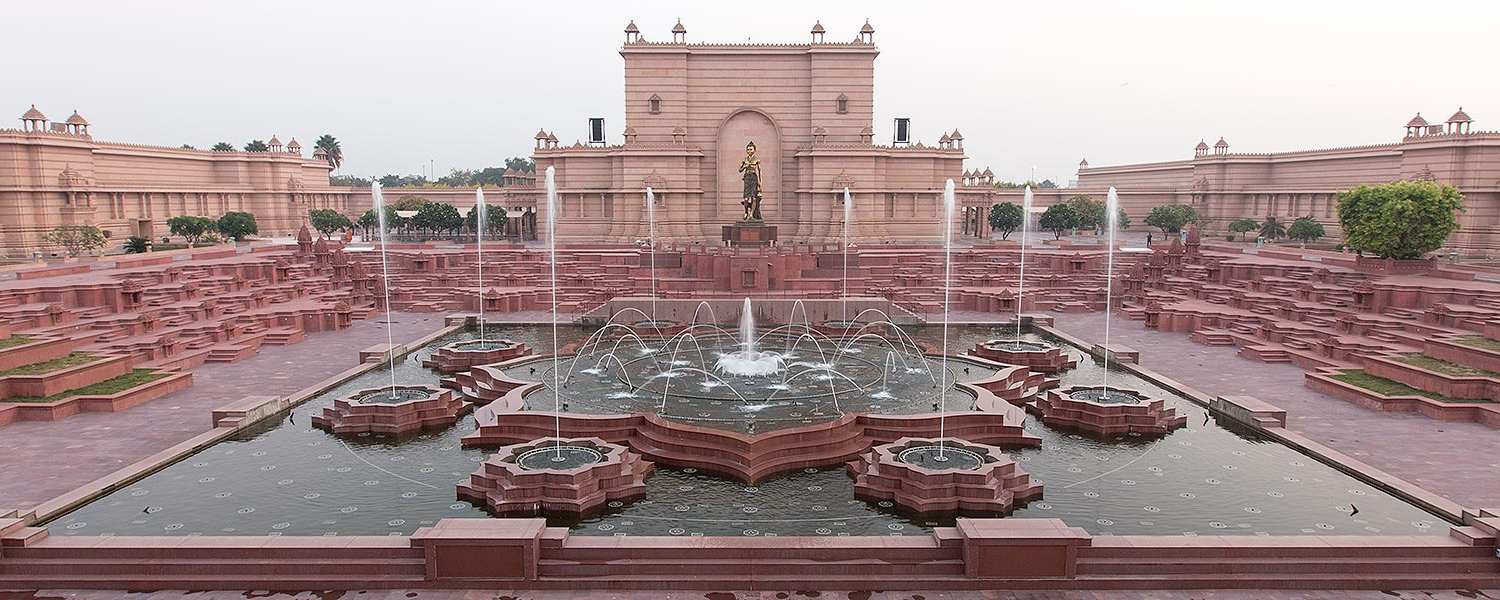
The Swaminarayan Akshardham Water Show, a spectacular multimedia presentation held at the Yagnapurush Kund in the Akshardham complex in Delhi, is a mesmerizing blend of art, technology, and spirituality.
However, the show unfolds against the backdrop of the Akshardham Temple, captivating audiences with its grandeur, thematic brilliance, and a narrative that transports spectators into the realm of ancient Indian wisdom.
The Swaminarayan Akshardham Water Show revolves around spiritual and cultural themes from Hindu mythology and ancient Indian philosophy.
The show narrates stories that impart moral and spiritual lessons through animated projections on the water screen, capturing the essence of timeless wisdom.
The show serves as an educational tool, providing insights into the philosophical teachings of Swaminarayan and promoting values such as compassion, morality, and spirituality. Initially, it offers a unique platform for cultural exchange and understanding.
Situated within the Akshardham complex, the water show is easily accessible to locals and tourists. Initially, its central location in Delhi makes it a convenient and culturally enriching destination for those seeking an evening of entertainment with a spiritual touch.
The Swaminarayan Akshardham Water Show is a testament to the seamless integration of technology, art, and spirituality.
a) Entry fee: The free / exhibition fee 2023 is Rs. 220 per person for adults, Rs. 120 per child, and Rs. 170 per person for senior citizens.
b) Opening hours: 7:45 am–6:30 pm
28. Mehrauli Archaeological Park

Historical ruins amidst lush greenery. Mehrauli Archaeological Park, a hidden gem in the heart of Delhi, is a living testament to the city’s rich and diverse history.
Scatter across acres of lush vegetation, this park is a treasure trove of ancient monuments, tombs, and archaeological wonders that span centuries of human civilization.
Moreover, dotted with remnants dating back to the 11th century, Mehrauli Archaeological Park is a captivating journey through time.
Its pathways lead visitors through the intricate tapestry of Delhi’s past, from the Sultanate and Mughal periods to the British colonial era.
The park integrates with the Qutub Minar complex, a UNESCO World Heritage Site, enhancing its historical significance.
At the heart of the park stands the iconic Qutub Minar, an imposing symbol of Indo-Islamic architecture that dominates the skyline.
Further, surrounded by structures like the Quwwat-ul-Islam Mosque and the Iron Pillar, the Qutub Complex within the park reflects the grandeur of the Delhi Sultanate.
The Mehrauli Archaeological Park is adorned with tombs and mausoleums, each telling its own story. The Jamali Kamali Mosque and Tomb, a jewel in the park, showcases exquisite Mughal craftsmanship.
Moreover, other notable structures include the Dadi Poti ka Maqbara and the Tomb of Balban, offering glimpses into the diverse architectural styles gracing the landscape over the centuries.
a) Entry fee: FREE
b) Opening hours: 5 am to 6:30 pm
29. Tughlaqabad Fort
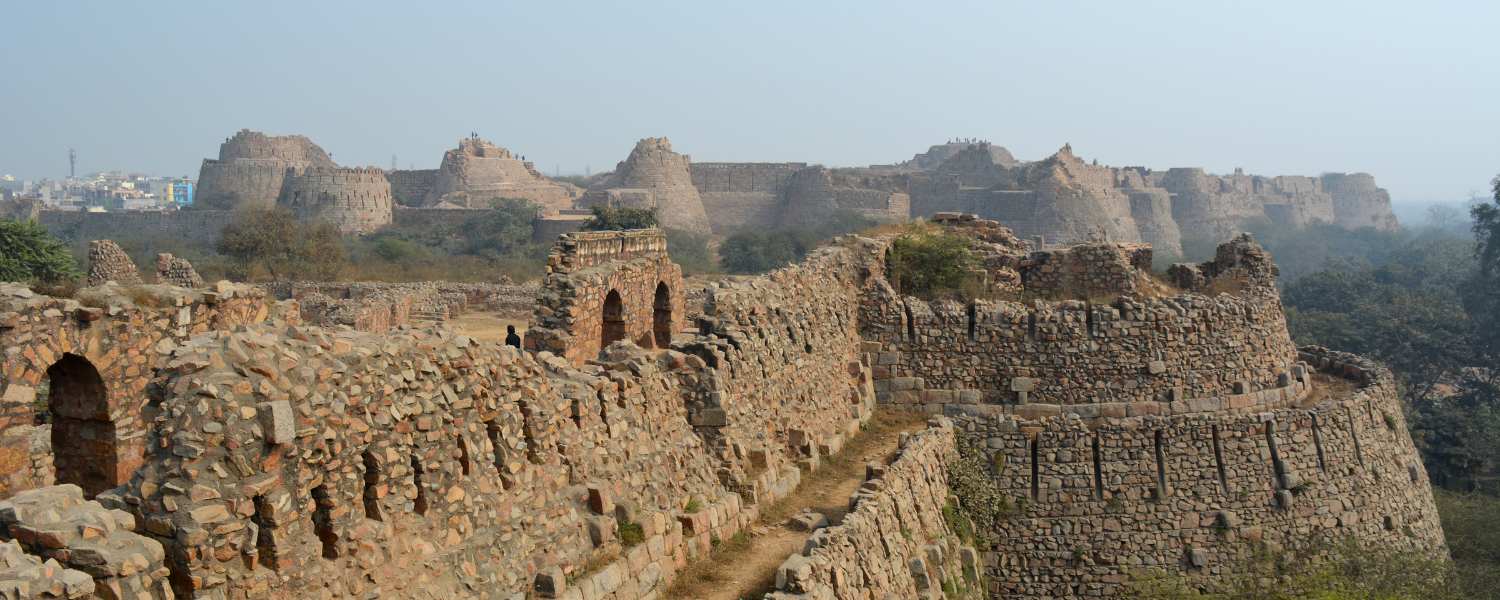
Tughlaqabad Fort, a colossal testament to medieval military architecture, stands as a formidable citadel in the southern part of Delhi, reflecting the grandeur of the Tughlaq dynasty.
However, commissioned by the ambitious Sultan Ghiyas-ud-din Tughlaq in the 14th century, this imposing fortress is a striking example of strategic urban planning and military engineering.
Set against the rugged backdrop of the Aravalli Hills, Tughlaqabad Fort’s massive walls and bastions evoke a sense of strength and resilience.
The fort’s unique layout encompasses a vast area featuring large sloping walls and battlements that served both defensive and aesthetic purposes.
Moreover, the architectural marvel of Tughlaqabad Fort lies in its distinctive construction. The fort’s massive walls, constructed with locally sourced quartzite stone, showcase the skilled craftsmanship of the medieval builders.
The sheer scale of the fort is awe-inspiring, with its walls reaching heights of up to 15 meters and stretching over 6 kilometers.
The fort’s design incorporates innovative features such as secret escape routes, underground chambers, and strategically positioned bastions for military defense.
Mainly, the colossal Tughlaqabad Fort was envisioned not only as a defensive structure but also as the centerpiece of the new city of Tughlaqabad. This ambitious project aimed to serve as the capital of the Tughlaq dynasty.
a) Built By: Ghiyas-ud-din Tughlaq
b) Built In 1321
c) Opening hours: 7 am to 5 pm
30. Kalkaji Temple
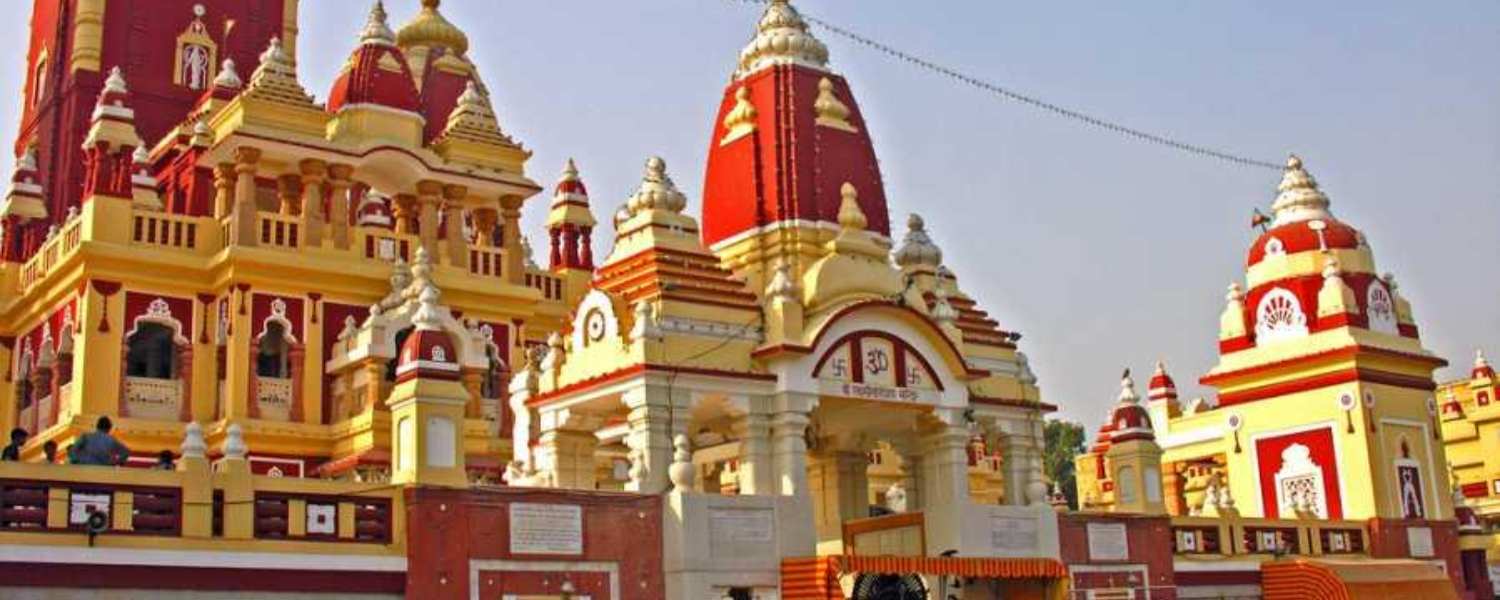
Kalkaji Temple, a revered Hindu shrine in the bustling southern part of Delhi, is a spiritual oasis amid the urban landscape.
Moreover, dedicated to Goddess Kalka, a form of Goddess Durga, this ancient temple holds enormous spiritual beliefs and cultural heritage, attracting devotees and visitors seeking solace and divine blessings.
Believed to have been built in the 18th century, the Kalkaji Temple exudes a tranquil ambiance that starkly contrasts the lively and vibrant surroundings.
Mainly, the temple’s architectural grandeur is evident in its towering spire, intricate carvings, and vibrant colours that adorn its exterior.
A major pilgrimage site during the annual festival of Navratri, Kalkaji Temple witnesses a surge of devotees who gather to celebrate the triumph of good over evil.
The temple complex comprises multiple shrines, each dedicated to different deities, creating a spiritual haven for followers of Hinduism.
The main sanctum of the temple enshrines an idol of Goddess Kalka, adorned with exquisite jewellery and vibrant garments.
Further, the atmosphere within the sanctum is charged with devotion and enthusiasm, amplified by the rhythmic chants and hymns sung by the faithful.
a) Built By: In the 18th century, the Marathas
b) Built In: around 1764 AD
c) Opening hours: 4 am–11:30 pm
31. Nehru Planetarium

However, offering celestial experiences through shows and exhibits. Nehru Planetarium, situated in the heart of New Delhi, is a celestial haven that brings the wonders of the universe to the curious minds of visitors.
Jawaharlal Nehru’s planetarium is a beacon of astronomical education and public outreach. Since its inauguration in 1984, it has become a prominent destination for astronomy enthusiasts and students, delivering a special blend of teaching and joy.
The planetarium boasts a distinctive spherical structure that mimics the shape of the Earth, emphasizing the global perspective inherent in the study of astronomy.
Initially, its modern architecture and advanced technology make it a hub for celestial exploration, where the mysteries of the cosmos come to life through captivating shows and interactive exhibits.
The centrepiece of the Nehru Planetarium is its sky theatre, equipped with a state-of-the-art Zeiss Starmaster projector.
This projector transforms the dome into a canvas of stars, allowing visitors to embark on immersive journeys through the cosmos.
However, the sky theatre showcases various astronomical phenomena, celestial events, and cosmic wonders, captivating audiences of all ages.
In addition to the captivating sky shows, the Nehru Planetarium hosts interactive workshops, lectures, and educational programs to foster a deeper understanding of astronomy and space sciences.
Further, the planetarium plays a pivotal role in nurturing scientific curiosity, making complex concepts accessible to both students and the general public.
Nehru Planetarium is an educational institution and a cultural hub celebrating significant astronomical events.
Initially, it actively participates in events like International Astronomy Day, promoting public awareness and participation in the awe-inspiring field of astronomy.
a) Opening hours:
English shows – 11:30 am | 3:00 pm
Hindi shows – 1:30 pm | 4:00 pm
b) Built By: Jawaharlal Nehru Memorial Fund
c) Built In: 1964
d) Cost: 60 per person
32. Feroz Shah Kotla Fort
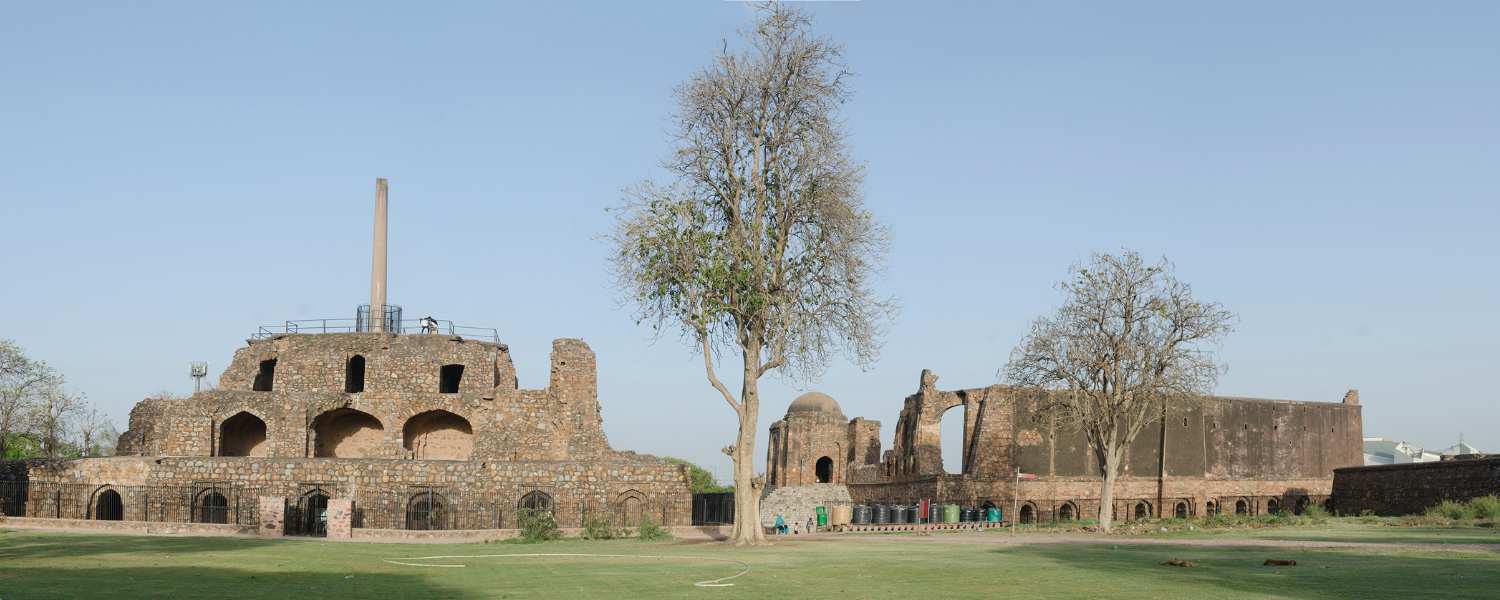
Additionally, a medieval fort with historical significance. Feroz Shah Kotla Fort, located in the heart of Delhi, stands as a silent witness to centuries of history, embodying the architectural legacy of the Delhi Sultanate.
Commissioned by Feroz Shah Tughlaq, the fifth majesty of the Tughlaq dynasty, in the 14th century, this historic fortress has withstood the tests of time, preserving tales of medieval grandeur and strategic prowess.
Moreover, the fort’s architecture reflects the distinctive style of the Tughlaq dynasty, characterized by massive walls, imposing gateways, and a strategic layout.
Using locally sourced grey quartzite stone adds to the fort’s imposing appearance, emphasizing strength and resilience.
One of the notable features of Feroz Shah Kotla Fort is the Ashokan Pillar that stands within its premises.
Further, believed to have been transported from Topra in Haryana during Feroz Shah Tughlaq’s reign, the Ashokan Pillar is a testament to the fort’s association with historic artifacts and its role in preserving ancient heritage.
The Baoli, or stepwell, within the fort complex, is an engineering marvel highlighting the Tughlaq dynasty’s emphasis on water conservation.
Further, the intricate arches and chambers of the stepwell served as a water reservoir, showcasing the medieval understanding of sustainable water management.
a) Built By: Sultan Feroz Shah Tughlaq
b) Built In 1354
c) Timings: 6:00 am – 6:00 pm.
d) Fee: Indian citizens = 15 / foreign nationals = 100 / Children below 15 don’t need to pay.
33. Doll Museum (Nehru Memorial Museum)
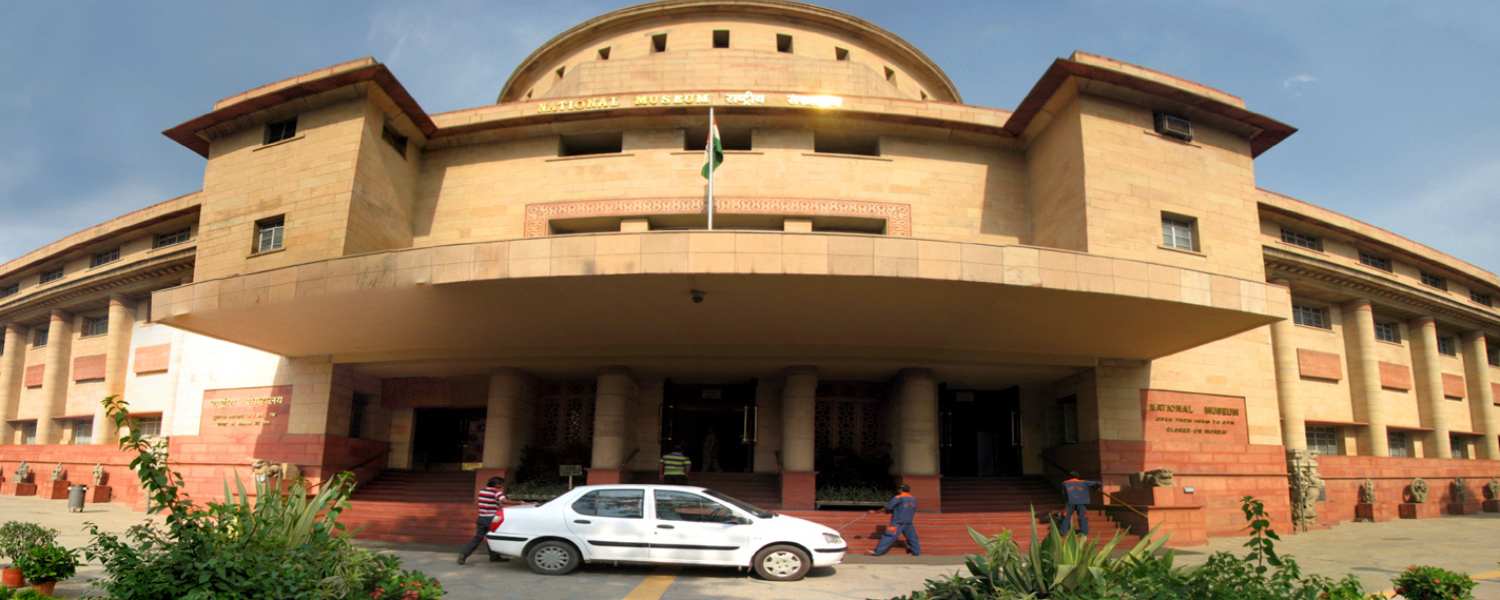
Additionally, there is a delightful collection of international dolls. The Doll Museum, officially known as the National Children’s Museum and situated within the Nehru Memorial Museum & Library complex in New Delhi, is a captivating repository of cultural diversity and artistic craftsmanship.
Moreover, established in 1957, Prime Minister Jawaharlal Nehru envisioned the museum as a space where children could explore the world’s cultures through the enchanting medium of dolls.
The museum’s collection boasts an extensive array of dolls from around the globe, making it one of the world’s largest and most diverse doll museums.
The dolls, meticulously crafted and dressed in authentic traditional attire, offer a visual feast that transcends geographical boundaries. The collection spans continents, featuring dolls from Europe, Asia, Africa, the Americas, and beyond.
The Doll Museum’s thematic galleries transport visitors to different corners of the world, allowing them to witness various communities’ cultural nuances and sartorial splendours.
Moreover, each doll becomes a cultural ambassador, representing the unique heritage, customs, and craftsmanship of its place of origin.
The museum’s mission goes beyond mere exhibition; it aims to foster cross-cultural understanding and appreciation among visitors, especially children. However, the dolls become storytellers, narrating tales of diverse lifestyles, celebrations, and historical epochs, encouraging an early appreciation for global diversity.
a) Built By: K. Shankar Pillai
b) Built In 1965
c) Opening Time: 10:00 am to 5.30 pm. All days of the week except Monday.
d) Entry fee: INR 15 for adults and INR 5 for children
34. Jhandewalan Temple
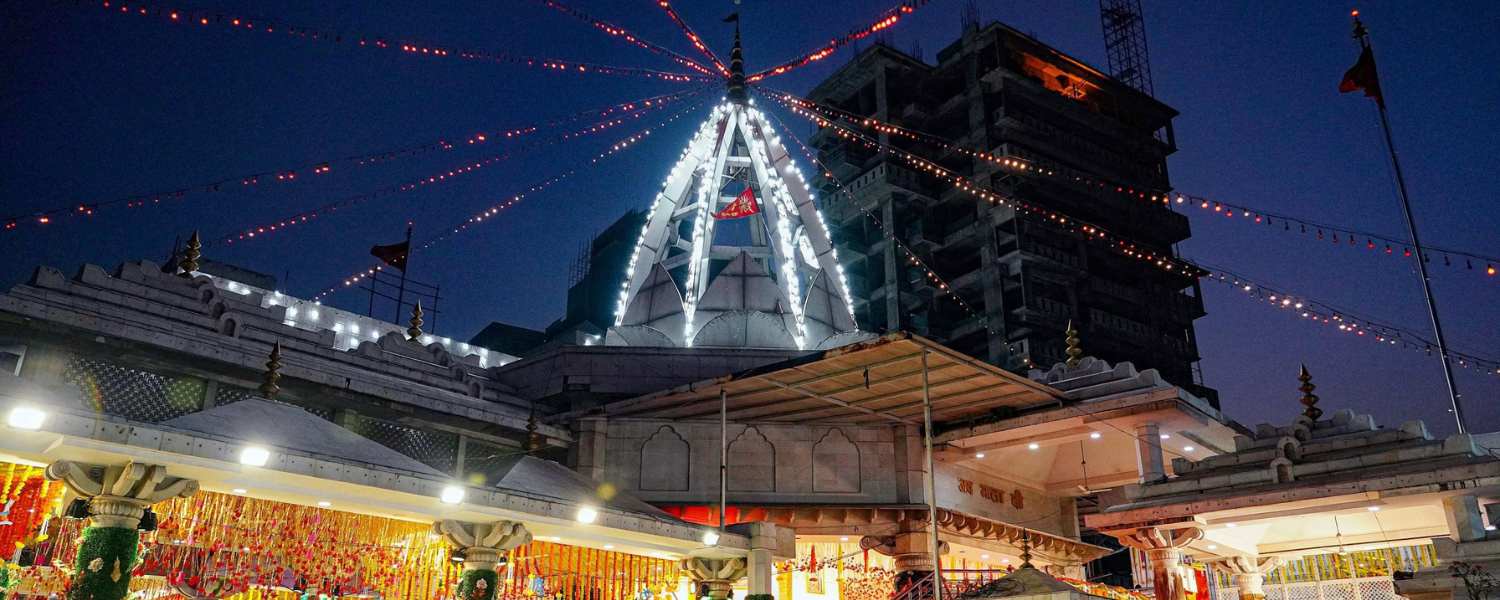
Jhandewalan Temple, situated in the heart of New Delhi, is a revered Hindu shrine dedicated to Maa Jhandewali.
Further, perched atop the Jhandewalan hill, the temple attracts devotees and visitors alike, offering a spiritual respite amid the hustle and bustle of the city.
The temple holds a special place in the religious landscape of Delhi, embodying a blend of divinity, tradition, and architectural splendor.
Moreover, the presiding deity, Maa Jhandewali, is revered as a manifestation of Maa Durga, the divine mother goddess. The temple’s name is derived from the presence of a flag, or ‘Jhande,’ that symbolizes the Goddess’s divine presence.
Devotees flock to Jhandewalan Temple to seek blessings, offer prayers, and partake in the vibrant religious festivities that mark various occasions
The temple’s architecture is a visual delight, characterized by intricate carvings, vibrant hues, and a serene ambiance.
However, the main sanctum enshrines the idol of Maa Jhandewali, adorned with ornate jewelry and vibrant garments, creating a divine spectacle that resonates with the spiritual energy of the place.
Jhandewalan Temple holds particular significance during the festival of Navratri, a nine-night celebration dedicated to the divine feminine.
The temple witnesses a surge of devotees during this auspicious period, with special prayers, processions, and cultural events adding to the festive fervour.
a) Built By: Badri Das
b) Built In 18th-century
c) Opening hours: 6 am–9:30 pm
35. Nehru Park

Additionally, there is a serene park with lush greenery and musical performances. Nehru Park, nestled in the heart of New Delhi, stands as a lush oasis that intertwines nature, culture, and recreation.
Further, named after India’s first Prime Minister, Jawaharlal Nehru, the park is not merely a verdant expanse but a vibrant cultural hub that beckons locals and tourists alike to unwind, connect with nature, and partake in various artistic and recreational activities.
Spread across acres of manicured lawns and dotted with indigenous trees, Nehru Park offers a serene escape from the bustling urban surroundings.
Moreover, the park’s carefully landscaped gardens, floral arrangements, and tranquil water features create an inviting ambiance for visitors seeking respite and rejuvenation.
One of the park’s distinguishing features is the open-air theatre, which often hosts cultural events, musical performances, and theatrical productions.
However, this arena transforms Nehru Park into a dynamic space where art and nature converge, providing a forum for artists and entertainers to showcase their talents against nature’s beauty.
The park’s pathways meander through well-maintained greenery, inviting joggers, walkers, and nature enthusiasts to immerse themselves in the soothing embrace of nature.
The thoughtful layout includes seating areas, sculptures, and art installations that add to the park’s aesthetic appeal.
a) Entry fee: Free
b) Opening hours: 6 am to 8 pm
36. Crafts Museum (National Handicrafts and Handlooms Museum)
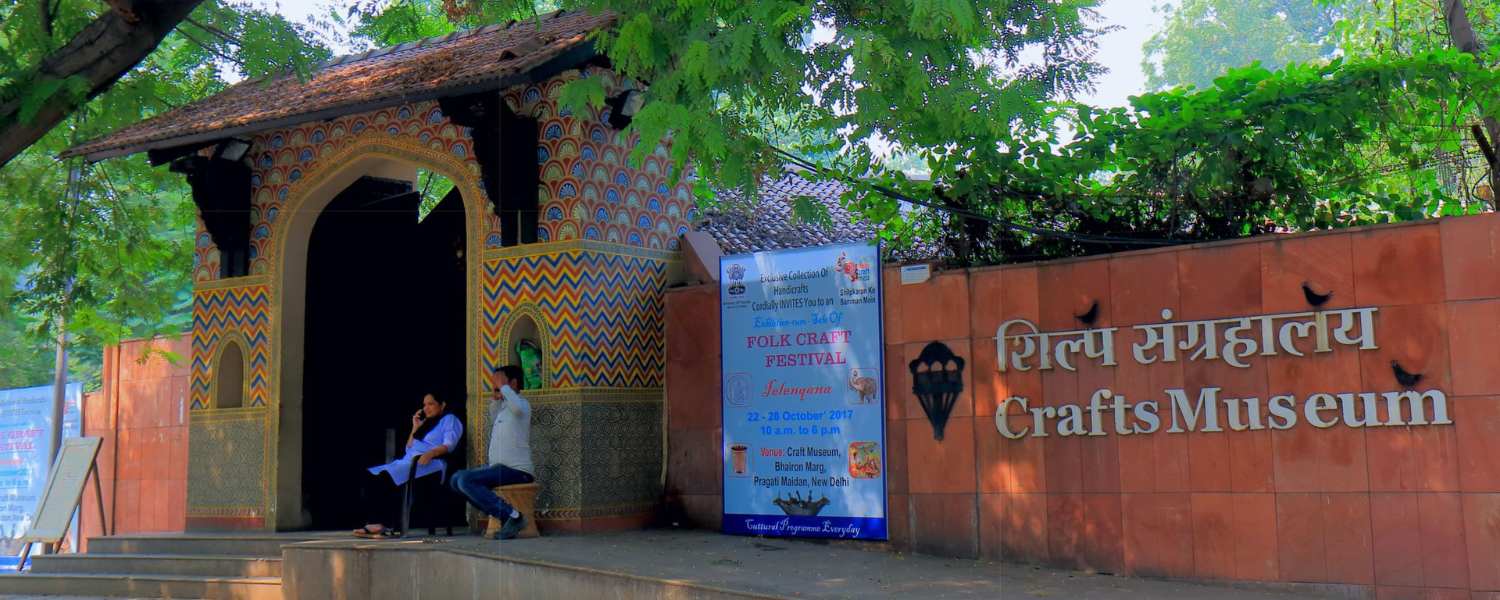
However, the Crafts Museum, officially known as the National Handicrafts and Handlooms Museum, is a cultural treasure trove in New Delhi’s heart.
Located in the sprawling Pragati Maidan complex, the museum celebrates India’s rich artisanal heritage, showcasing a diverse array of traditional crafts, handlooms, and folk art that reflect the country’s cultural tapestry.
Established in 1956, the Crafts Museum is a living repository of India’s traditional craftsmanship, preserving and promoting indigenous skills passed down through generations.
Moreover, the museum’s architecture itself is a testament to traditional craftsmanship, with structures resembling regional Indian dwellings, creating a harmonious setting that complements the exhibits within.
The museum’s expensive collection spans a myriad of crafts, including pottery, textiles, metalwork, woodwork, and more.
Each exhibit is a meticulous display of craftsmanship, illustrating various regional traditions’ intricate techniques, designs, and cultural significance.
One of the highlights of the Crafts Museum is the outstanding textile gallery, featuring a breathtaking collection of handwoven textiles, costumes, and embroidery from different states of India.
The museum’s commitment to preserving the authenticity of these textiles is evident in the careful curation that showcases the diversity of weaving traditions across the country.
The open-air village complex within the museum is a unique feature, providing visitors with a glimpse into the traditional lifestyles of rural artisans.
Additionally, authentic huts and workshops showcase craftspeople engaging in their art, allowing for an immersive experience that bridges the gap between the past and the present.
- Opening Time: 9:30 am to 6 pm (October to June)
37. Bonfire at Dilli Haat
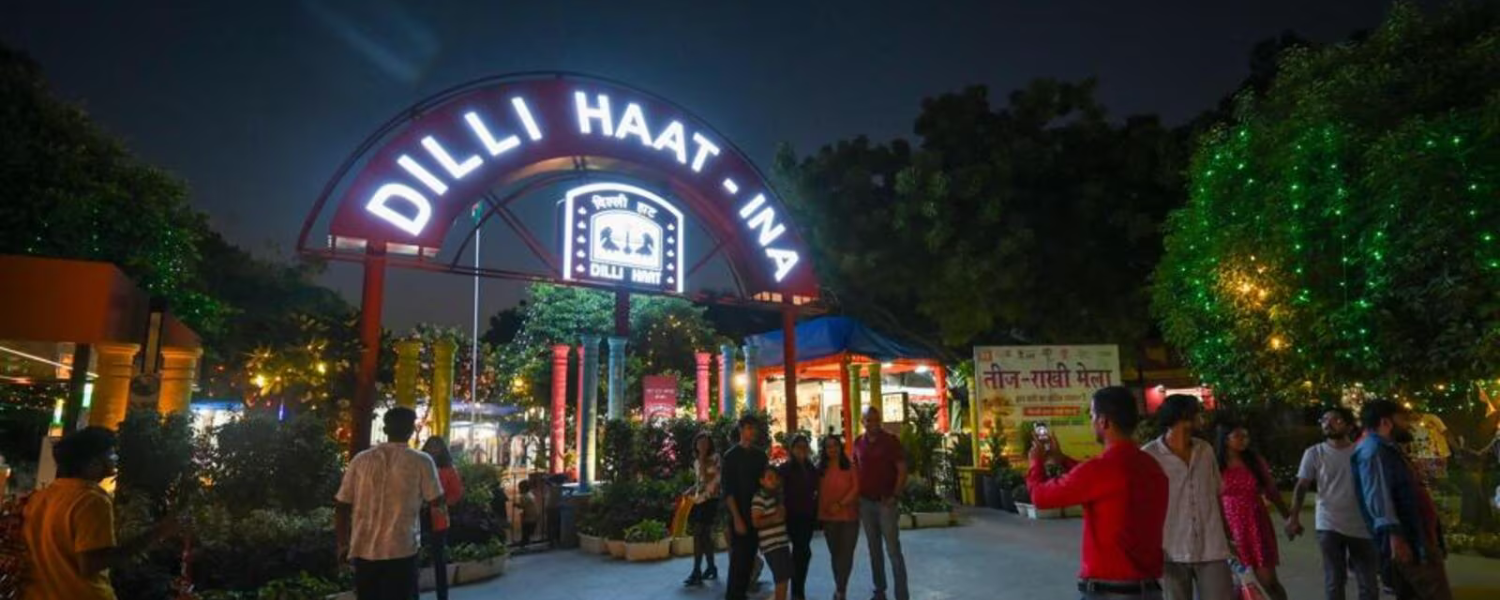
However, cultural evenings with traditional music and dance. Dilli Haat, a vibrant cultural bazaar in the heart of Delhi, transforms into a warm and inviting haven during the winter months when the flickering flames of the bonfire light up the night.
Mainly, the bonfire at Dilli Haat is not just about warmth but a celebration of community, culture, and the joy of gathering around a shared source of comfort.
As the temperatures drop and a crisp winter chill settles over the city, Dilli Haat welcomes visitors with the promise of a cosy evening around the bonfire.
The crackling embers create an intimate ambiance that draws people from all walks of life – locals and tourists, families and friends – to huddle together in the communal warmth.
However, the bonfire at Dilli Haat is the focal point for impromptu gatherings, where strangers become friends, and the spirit of camaraderie prevails.
The seating around the bonfire encourages storytelling, laughter, and the exchange of cultural tales, creating an atmosphere of unity amidst the diversity that places to visit in Delhi.
The aroma of street food wafts through the air, enticing visitors to explore the diverse culinary delights offered by the food stalls at Dilli Haat.
Furthermore, from piping hot chai to sizzling kebabs, the bonfire becomes a culinary magnet, enhancing the sensory experience of the winter evening.
a) Opening hours: 10.30 am to 10.00 pm
b) Founded by: Jaya Jaitly
38. Rajendra Place
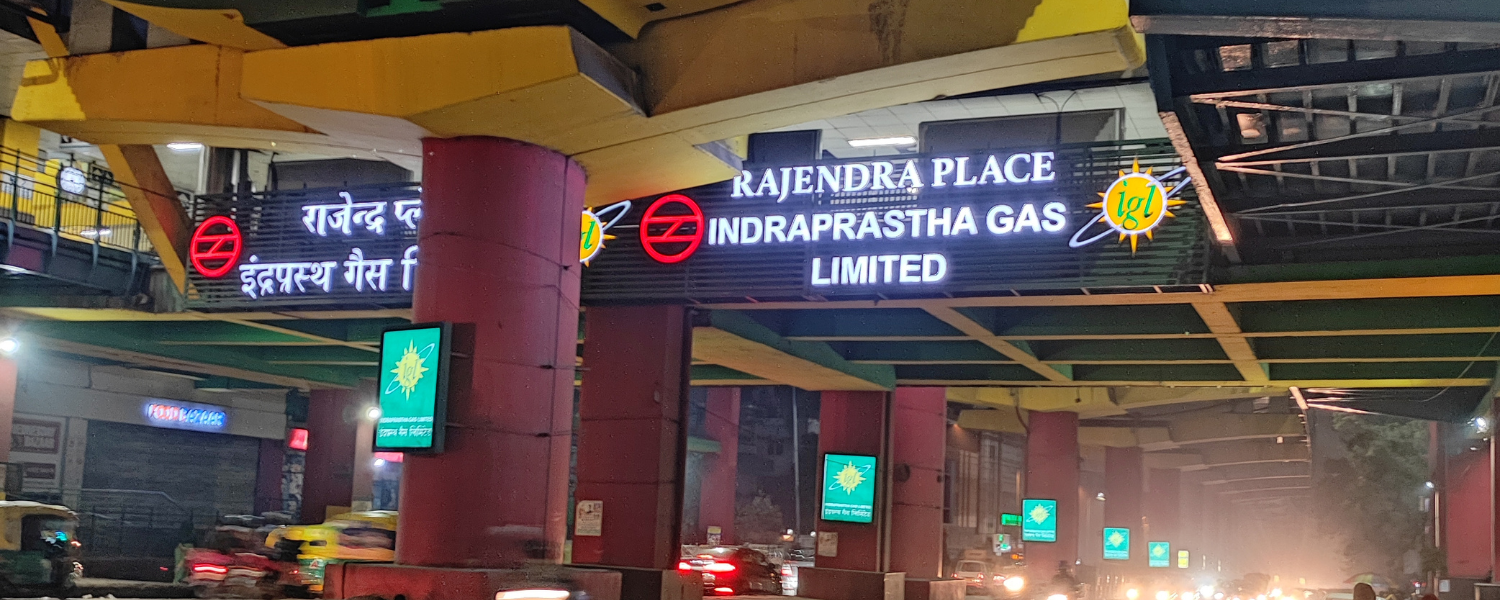
A commercial and residential area with shopping complexes. Rajendra Place, located in the heart of New Delhi, is a bustling commercial and residential hub that mixes modernity with a touch of historical charm.
Named after India’s first President, Dr. Rajendra Prasad, this area is characterized by its strategic location, diverse business landscape, and the coexistence of contemporary infrastructure with remnants of the city’s colonial past.
Moreover, Rajendra Place’s heart is its commercial centre, housing corporate offices, commercial complexes, and business establishments.
The area’s strategic location and proximity to Connaught Place and Karol Bagh make it a preferred destination for businesses ranging from corporate offices to retail outlets.
Initially, its connectivity via the Delhi Metro further enhances its accessibility, attracting professionals, entrepreneurs, and shoppers alike.
Rajendra Place is a commercial hub and a residential community with a mix of modern apartments and colonial-era residences.
However, the area exudes a lively vibe with its eclectic mix of residents, adding to the cosmopolitan character of central places to visit in Delhi.
The region’s infrastructure blends old and new, with modern high-rises sharing space with colonial-era architecture.
Mainly, the Connaught Circus, a circular market reminiscent of British-era architecture, is a prominent landmark that adds a nostalgic charm to the area.
39. Shivaji Stadium
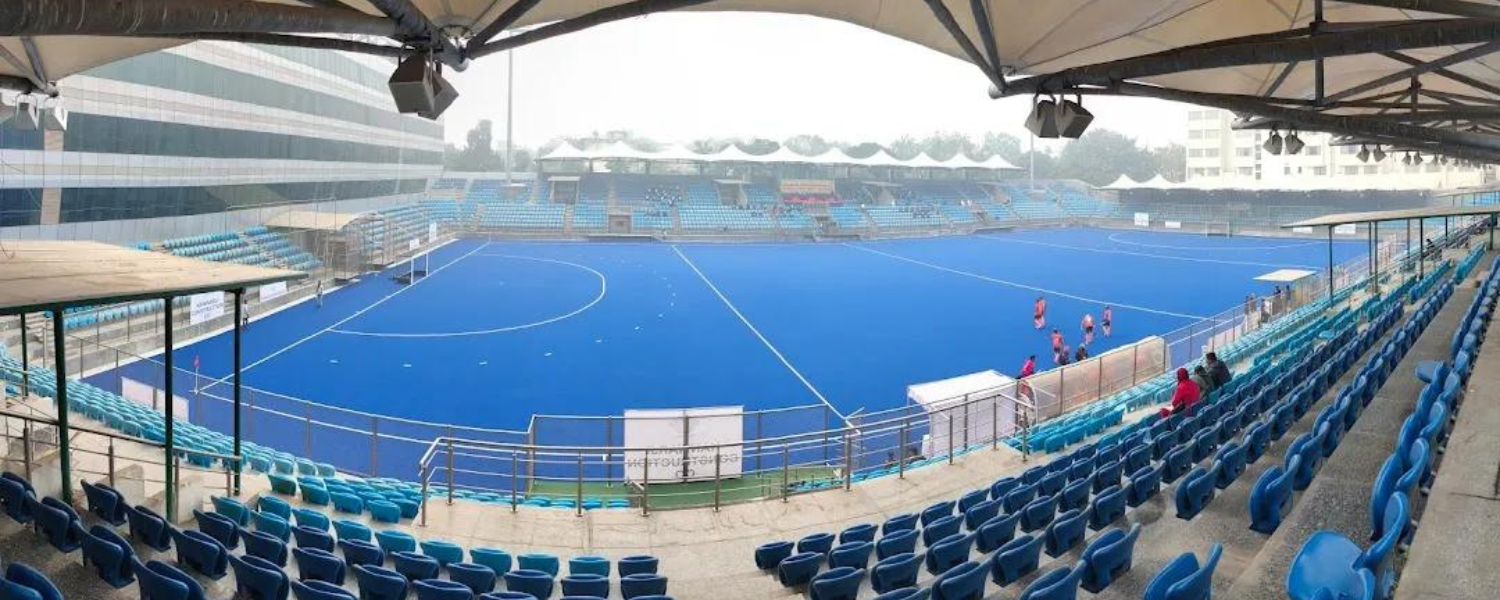
Shivaji Stadium, situated in the heart of Connaught Place in New Delhi, is not merely a sports arena but a multifaceted space that encapsulates the spirit of athleticism, recreation, and community engagement.
Named after the legendary Maratha warrior king, Chhatrapati Shivaji Maharaj, the stadium has become a prominent landmark where sports enthusiasts, fitness fans, and cultural enthusiasts converge.
The stadium is a hub for various sporting activities, including cricket, football, and athletics.
Initially, its centrally located pitch, surrounded by seating galleries, has witnessed numerous cricket matches, both casual and competitive, echoing with the cheers of players and spectators alike.
The open-air setting provides a refreshing escape for those seeking an active lifestyle amid the bustling urban landscape.
Beyond sports, Shivaji Stadium hosts cultural events, concerts, and community gatherings. Moreover, the expansive grounds transform into a vibrant venue, attracting artists, performers, and audiences from different walks of life.
Further, the stadium’s adaptability to diverse events makes it a versatile space that contributes to the cultural vibrancy of Connaught Place.
The stadium’s strategic location, adjacent to Connaught Place’s commercial and entertainment district, adds to its accessibility and popularity.
Initially, it is an inspiring pullout for locals and tourists, offering a green expanse amidst the city’s concrete jungle.
Moreover, the surrounding greenery and well-maintained lawns provide an inviting space for picnics, yoga enthusiasts, and those seeking tranquillity in the heart of the capital.
40. Safdarjung’s Tomb

Safdarjung’s Tomb, standing gracefully amidst lush gardens in the heart of New Delhi, is a striking testament to Mughal architecture and an enduring tribute to Safdarjung, the Prime Minister of the Mughal Empire during the reign of Emperor Muhammad Shah.
Built in the mid-18th century, this mausoleum reflects the grandeur and artistic finesse of the Mughal era.
The Tomb, often referred to as the last flicker of Mughal architectural brilliance, mirrors the style of the grand Humayun’s Tomb but on a smaller scale.
Initially, its red sandstone and marble façade, intricate carvings, and bulbous dome make it a captivating architectural gem that transports visitors to the imperial splendours of bygone eras.
Surrounded by a charbagh, a traditional Persian-inspired garden divided into four quadrants, Safdarjung’s Tomb invites visitors to wander through its meticulously manicured pathways and admire the symmetrical layout.
Moreover, the garden, with flowing water channels, fountains, and vibrant flowers, creates a serene ambiance that complements the architectural elegance of the Tomb.
While Safdarjung’s Tomb is primarily a historical site, it also serves as a tranquil escape from the urban hustle. Additionally, the sprawling gardens offer a peaceful retreat for locals and tourists alike, providing a space for strolls, picnics, and quiet contemplation.
a) Built By: Shuja-ud-Daula
b) Built In: 1753-54
c) Opening hours: All time
d) Entry Fee: For Indian citizens, the fee is Rs 15, but for foreign nationals, it’s Rs 200.
41. Laxminarayan Temple (Birla Mandir)
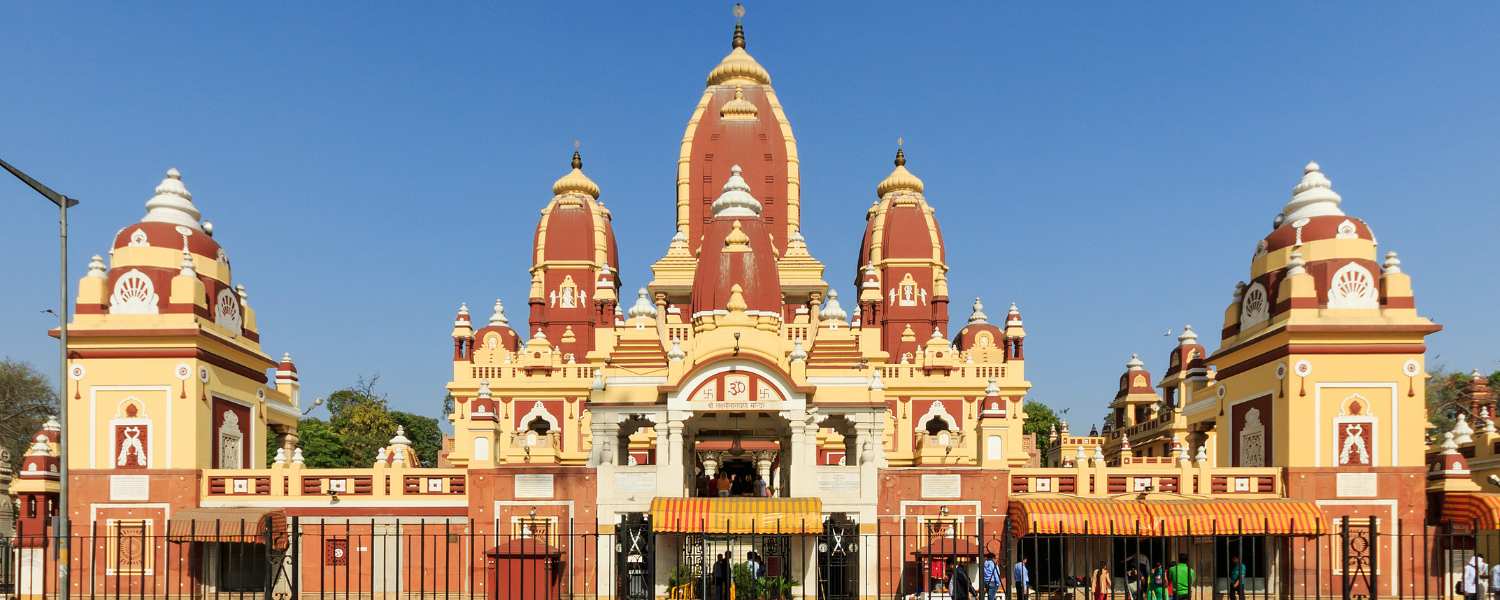
Laxminarayan Temple, more commonly known as Birla Mandir, graces the skyline of New Delhi as a symbol of devotion, architectural finesse, and the harmonious integration of traditional and modern elements.
Commissioned by the industrialist Birla family in 1933, this magnificent temple was dedicated to Lord Laxminarayan (Vishnu) and his consort Lakshmi, and it is a testimony to the city’s spiritual and cultural diversity.
Located atop a hillock in the city’s heart, Birla Mandir offers panoramic views of New Delhi, creating a serene ambiance that complements the temple’s grandeur. Moreover, the structure, built with white marble and intricate carvings, blends traditional North Indian and modern architectural styles.
Further, the sanctum sanctorum houses beautifully sculpted idols of Lord Laxminarayan and Lakshmi, crafted from a single piece of marble.
Moreover, the temple’s interior is adorned with scenes from Hindu scriptures and mythological narratives, creating a divine tapestry that immerses worshippers and visitors in a spiritual aura.
Birla Mandir’s expansive courtyard features fountains, gardens, and shrines dedicated to other deities, enhancing the overall architectural splendour.
Further, the temple complex also includes a Geeta Bhavan, a hall adorned with verses from the Bhagavad Gita, providing a space for spiritual discourses and cultural events.
The temple actively engages in promoting cultural and religious harmony. Initially, it hosts festivals, bhajan sessions, and religious discourses that attract devotees and visitors from diverse backgrounds.
The temple’s strategic location near Connaught Place makes it easily accessible, inviting locals and tourists to experience its spiritual ambiance.
a) Built By: Jugal Kishore Birla
b) Built In: 1933 and 1939
c) Opening hours: 04:30 am to 09:00 pm.
d) Entry fee: There is no entry fee here.
42. Shankar Market
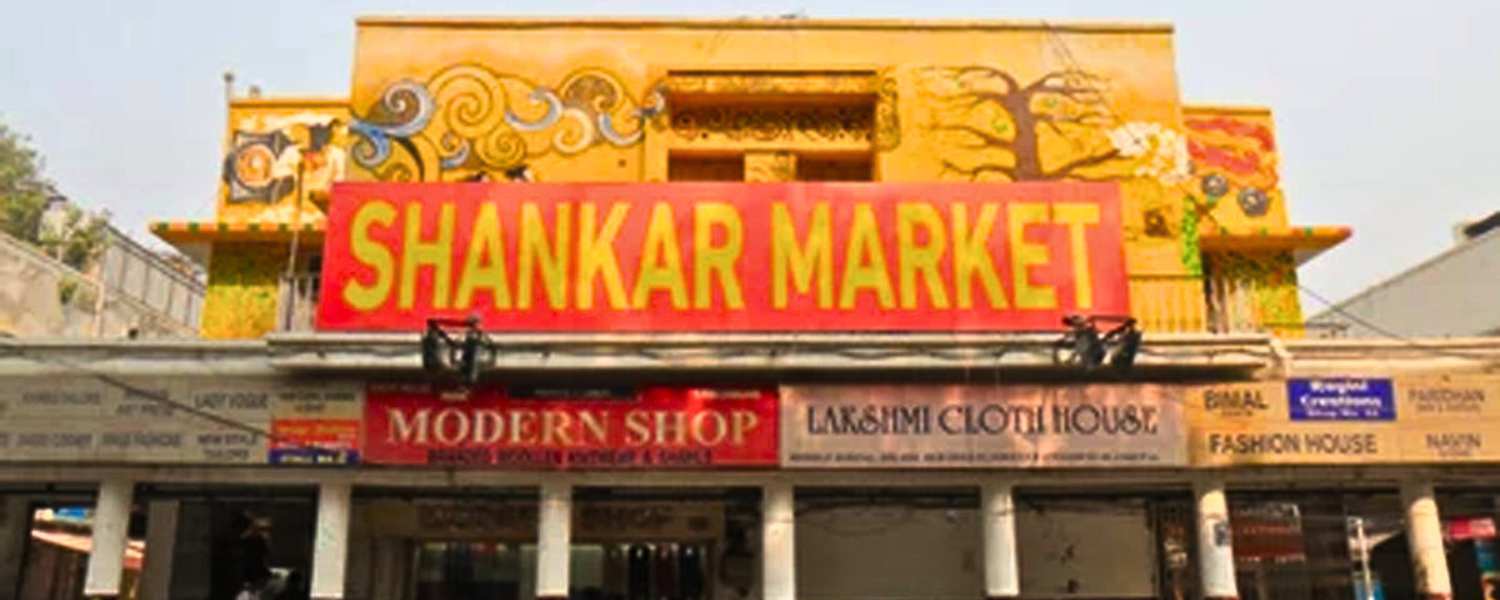
A bustling market known for its shops and street food.
Shankar Market, nestled in the heart of Connaught Place, is not just a marketplace; it is a dynamic kaleidoscope of culture, commerce, and craftsmanship.
Moreover, established in the early 20th century, this bustling market has earned its place as a favourite among Delhiites and tourists, offering a unique blend of traditional charm and contemporary flair.
The market, named after the renowned artist Raja Ravi Shankar, boasts a rich history that resonates through its narrow lanes and vibrant stalls. Initially, it’s a haven for those seeking an authentic Delhi shopping experience, away from the more commercialized spaces.
Shankar Market is renowned for its diverse shops specializing in distinctive merchandise, from textiles and handicrafts to jewellery and accessories.
Wandering through the market’s labyrinthine alleys, visitors are greeted with an eclectic mix of sights and sounds. Traditional Indian fabrics, intricate embroidery, and handcrafted artefacts beckon shoppers to explore the craftsmanship on display.
Further, the market is a treasure trove for those searching for unique souvenirs, traditional garments, or one-of-a-kind accessories.
One of the market’s distinguishing features is its commitment to promoting handcrafted and indigenous products. Artisans and small-scale entrepreneurs find a platform to showcase their skills, contributing to the market’s vibrant and inclusive atmosphere.
Further, visitors can engage directly with the sellers, often gaining insights into the traditional techniques and stories behind the products.
Shankar Market is not just a shopping destination; it’s a gastronomic delight with its array of street food and local eateries. Mainly, from piping hot samosas to savoury chaats, the market offers a culinary journey through the diverse flavours of places to visit in Delhi.
43. ISKCON Temple
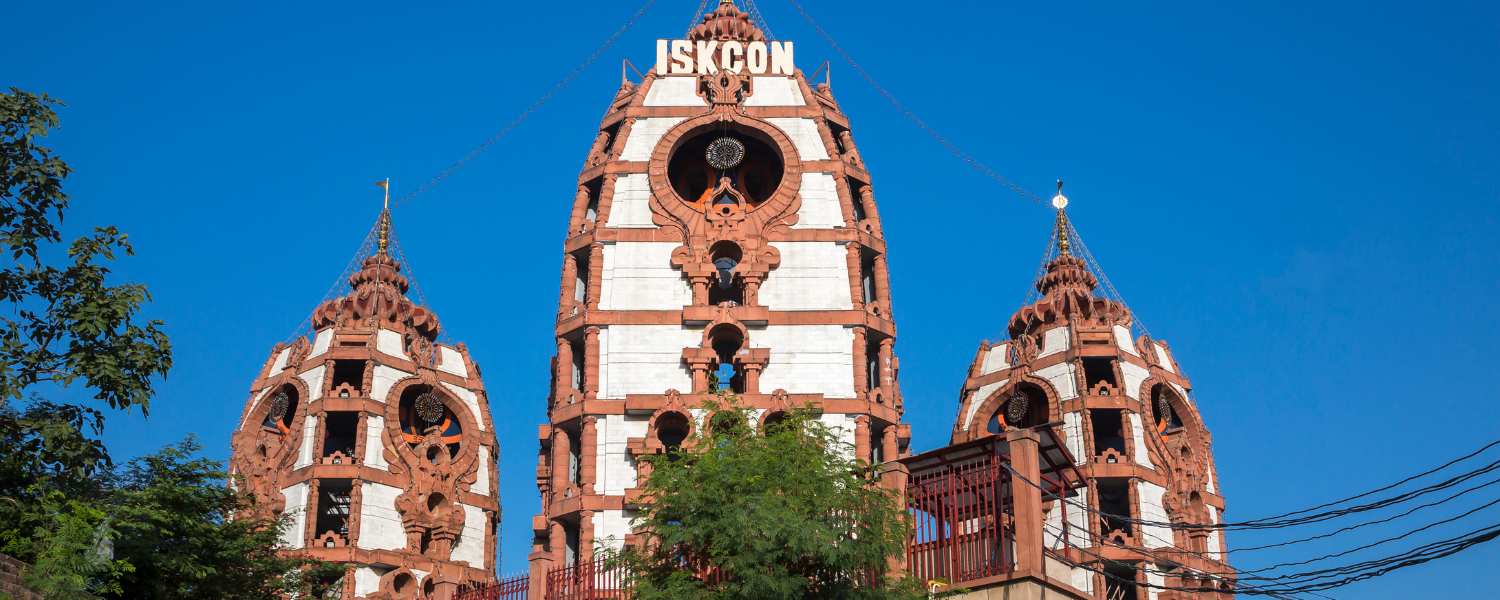
A spiritual centre dedicated to Lord Krishna. ISKCON Temple, formally known as the International Society for Krishna Consciousness Temple, stands as a spiritual beacon in the heart of New Delhi, radiating devotional fervour and architectural splendour.
However, amid the bustling urban landscape, the temple is a serene haven that draws devotees and visitors worldwide, inviting them to experience the essence of Krishna consciousness.
Built in 1998, ISKCON Temple is a masterpiece of modern temple architecture, combining traditional Indian elements with contemporary design.
The temple’s structure, adorned with pristine white marble, intricate carvings, and golden spires, reflects the devotion and artistic finesse that characterize the Hare Krishna movement.
Lord Krishna, along with his eternal consort, Radha, is the central deity enshrined in the temple. The main hall, resplendent with vibrant paintings and murals depicting Krishna’s pastimes, creates an immersive spiritual environment.
Devotees and visitors can participate in the temple’s daily rituals, kirtans (devotional songs), and discourses that enhance the spiritual experience.
The temple complex extends beyond the main shrine, featuring beautiful gardens, water fountains, and meditation spaces.
The lush greenery surrounding the temple provides a tranquil setting for contemplation and relaxation.
The Bhaktivedanta Book Trust, an integral part of the complex, offers a vast collection of spiritual literature promoting the teachings of Srila Prabhupada, the founder of ISKCON.
One of the prominent features of ISKCON Temple is its commitment to community service and outreach.
The temple actively engages in charitable activities, including food distribution programs, educational initiatives, and healthcare services.
The Akshaya Patra Foundation, associated with ISKCON, serves midday meals to thousands of school children, embodying the spirit of selfless service.
a) Built By: (ISKCON)
b) Built In: April 5, 1998
c) Opening hours: 4:30 am – 8:30 pm
44. Jamali Kamali Tomb
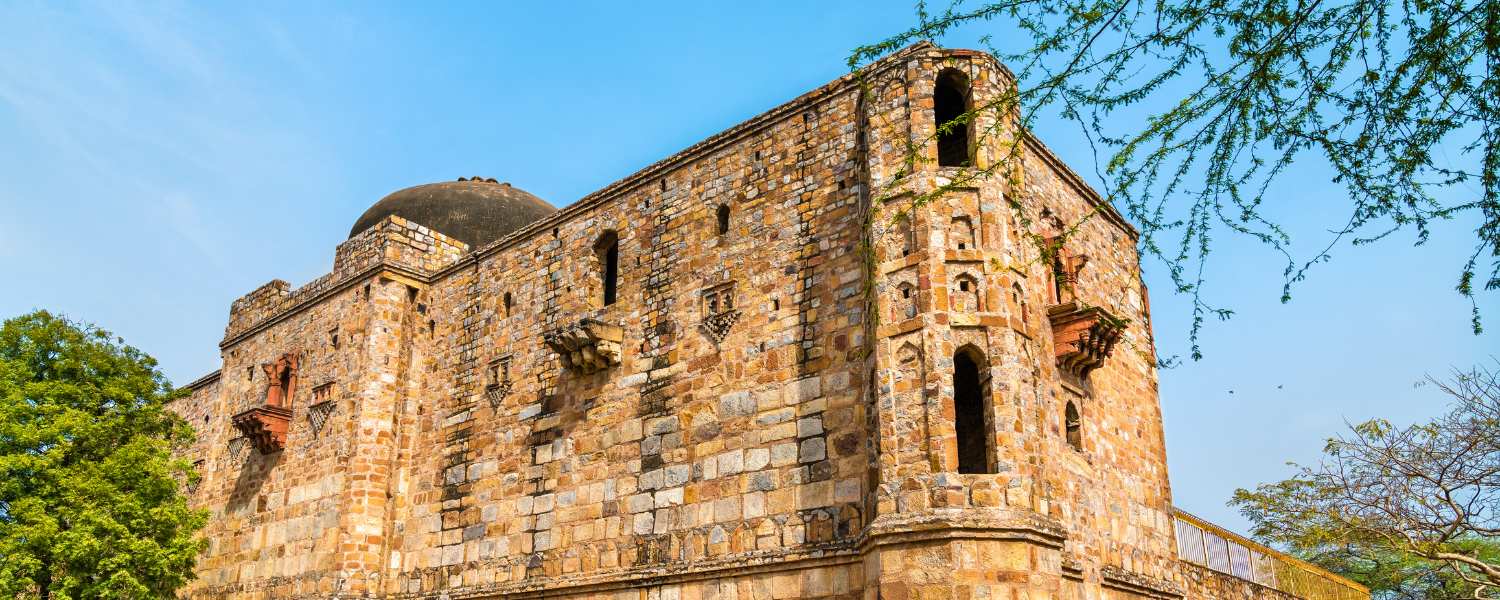
An archaeological complex with a mosque and tombs. Jamali Kamali Tomb, tucked away in the Mehrauli Archaeological Park in New Delhi, is a mesmerizing testament to the syncretic spirit of medieval India.
Dating back to the 16th century, this architectural gem encapsulates the mystical allure of the Sufi tradition, housing the tombs of two enigmatic personalities—Jamali and Kamali—whose identities continue to be shrouded in mystery.
The tomb complex comprises a mosque and adjoining tombs constructed with red sandstone and intricate marble embellishments.
The mosque, known as Jamali Kamali Mosque, is a masterpiece of Indo-Islamic architecture, featuring ornate calligraphy, geometric patterns, and delicate floral designs that create a visual symphony.
The mosque’s name is derived from the inscriptions that bear witness to the poetic expressions of Jamali, whose real name remains elusive.
The Mehrauli Archaeological Park, where the Tomb is situated, offers a tranquil retreat from the urban chaos.
The surrounding greenery and historical remnants add to the charm, inviting visitors to explore the layers of places to visit in Delhi rich past.
Despite its historical significance, Jamali Kamali Tomb remains a lesser-known attraction, adding to its allure for those seeking a serene escape into Delhi’s historical landscape mystique.
Initially, it is a testament to the coexistence of diverse cultural influences in medieval India, inviting contemplation and appreciation for the synthesis of art, spirituality, and history.
a) Built By: Shaikh Fazl al-Allah
b) Built In: 1536
c) Opening hours: 6 am to 6 pm
45. Jantar Mantar

Jantar Mantar, an iconic astronomical observatory located in the heart of New Delhi, is a testament to the scientific prowess and architectural ingenuity of Maharaja Jai Singh II of Jaipur.
Built-in the early 18th century, this historic site stands as one of the five Jantar Mantars constructed by Jai Singh across northern India, each serving as an instrument to measure time, observe celestial bodies, and advance astronomical knowledge.
The Delhi Jantar Mantar, constructed in 1724, is an ensemble of 13 architectural instruments, primarily large-scale masonry structures designed to make precise astronomical measurements.
Crafted from stone and marble, the instruments showcase a fusion of Islamic, Persian, and Hindu architectural styles, reflecting the multicultural influences that characterized Jai Singh’s reign.
Despite the passage of centuries, Jantar Mantar continues to attract scientists, historians, and curious visitors.
The site’s cultural and scientific importance earned it a place on the UNESCO World Heritage Site List in 2010.
While some instruments, like the Misra Yantra, have weathered the ravages of time, the enduring legacy of Jantar Mantar lies in its power to bridge the gap between old wisdom and modern scientific understanding.
a) Built By: Maharaja Jai Singh II
b) Built In: 1724
c) Entry fee: INR 5
d) Opening hours: Sunrise to sunset
46. Ridge Road
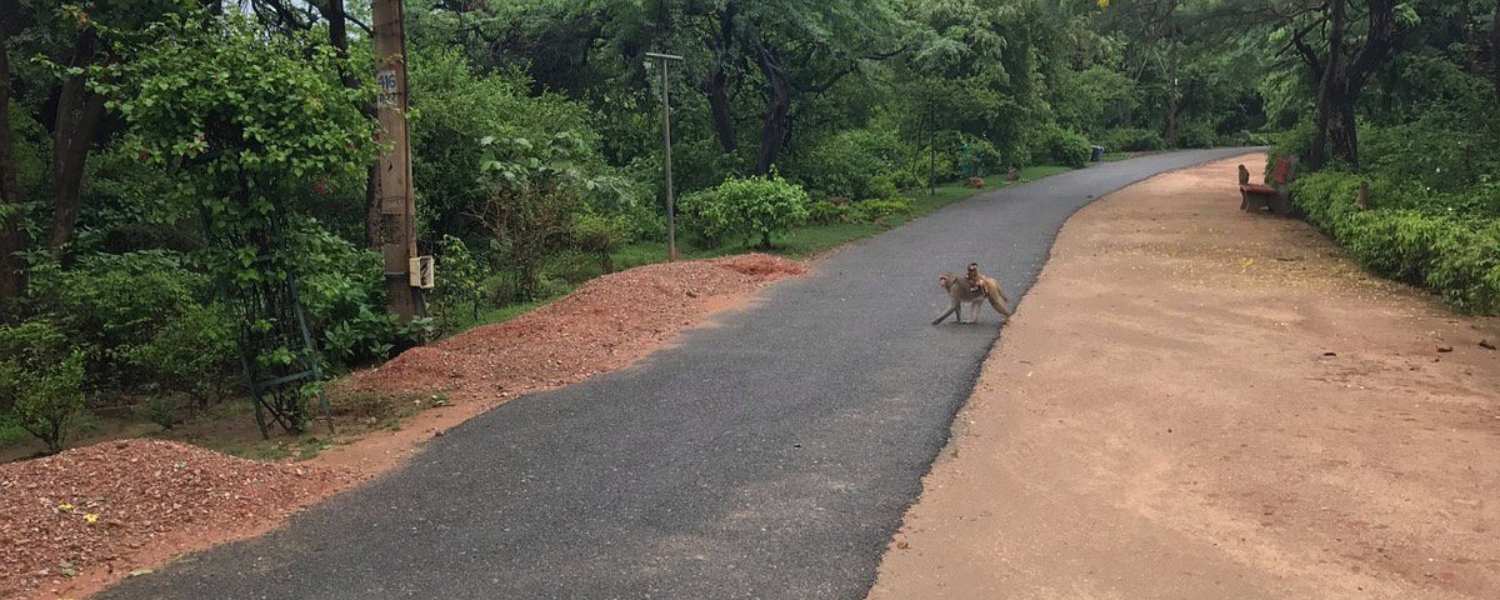
A scenic road offering panoramic views of the city.
Ridge Road, an undulating stretch of natural beauty traversing the northern part of places to visit in Delhi, stands as a serene escape amidst the urban hustle.
This expansive green belt, commonly known as the Delhi Ridge or Aravalli Range, serves as the city’s ecological lungs, providing fresh air for residents and visitors alike.
The Ridge, formed by the ancient Aravalli Range, meanders through the heart of Delhi, extending from the Tughlaqabad area in the south to the Wazirabad Barrage in the north.
Its elevation offers panoramic views of the city, making it a popular destination for nature enthusiasts, joggers, and those seeking a respite from the chaotic urban landscape.
Ridge Road’s recreational appeal extends beyond its ecological and historical facets. The well-maintained pathways and scenic vistas attract fitness enthusiasts, photographers, and families looking for a peaceful retreat.
The road is closed to vehicular traffic on Sundays, transforming it into a pedestrian-friendly zone where residents can engage in various activities, from cycling to yoga.
47. Nizamuddin Basti
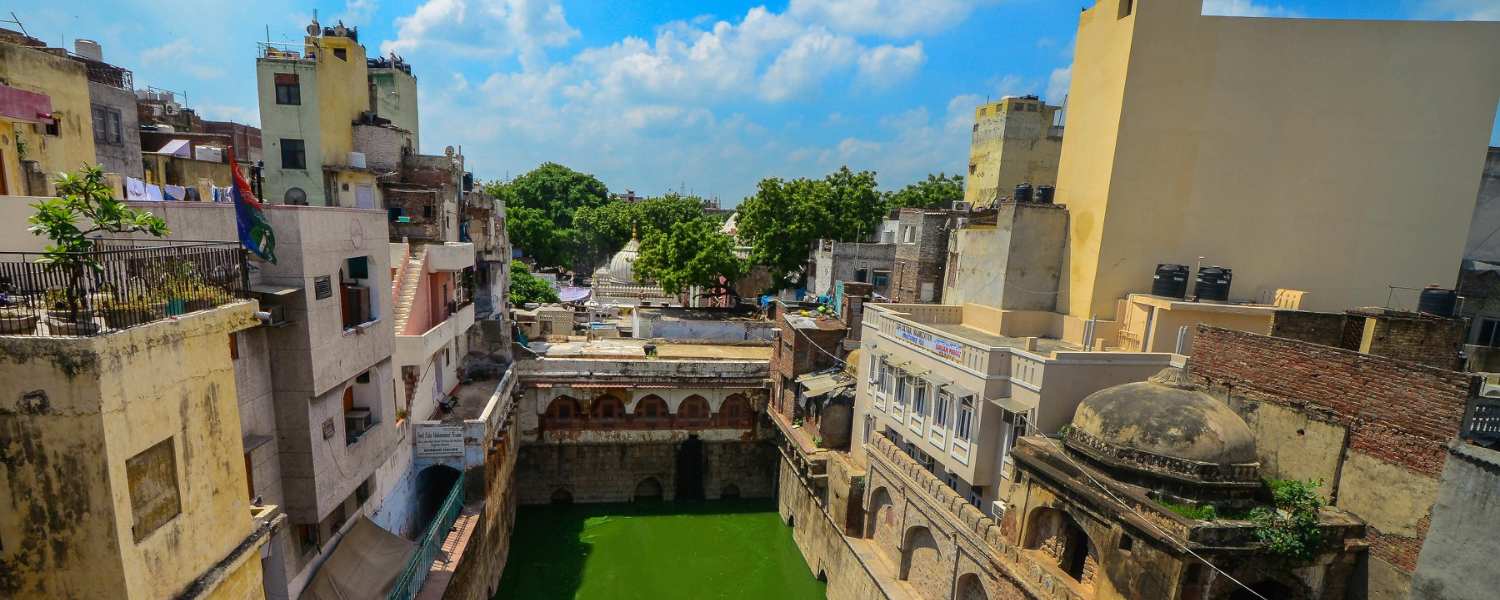
A historical neighborhood is known for its cultural richness. Nizamuddin Basti, nestled in the heart of Delhi, is a vibrant historical enclave that resonates with the spiritual and cultural legacy of the city.
Named after the revered Sufi saint Hazrat Nizamuddin Auliya, the Basti (settlement) encapsulates the rich tapestry of Delhi’s heritage, combining spirituality, architecture, and community life.
The Basti’s authenticity is reflected in its bustling market, vibrant street life, and the cultural events arranged by the Aga Khan Trust for Culture.
Nizamuddin Basti is a testament to Delhi’s ability to preserve its cultural roots while embracing the dynamics of urban life, offering a unique blend of spirituality and heritage within the bustling metropolis.
48. ISKCON Auditorium
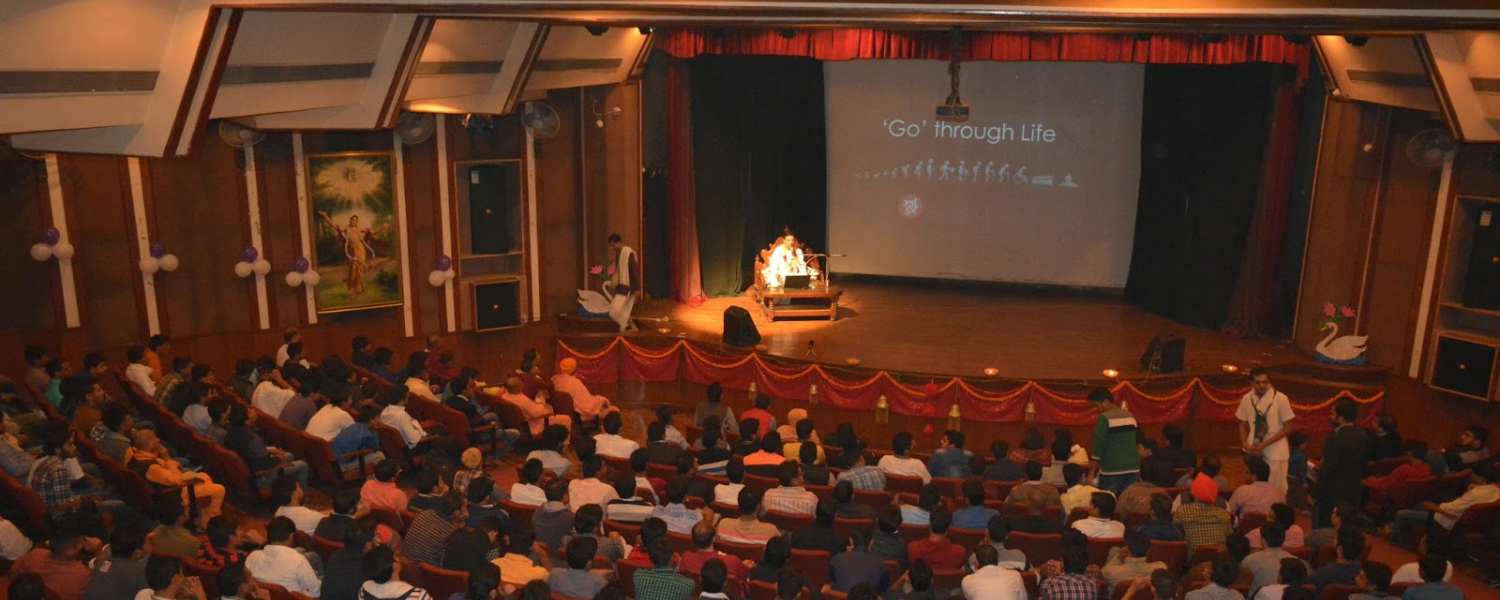
A cultural and spiritual hub with events and performances. ISKCON Auditorium, an integral part of the International Society for Krishna Consciousness complex in Delhi, is a cultural haven hosting events that celebrate spirituality, art, and community.
The modern venue, with state-of-the-art facilities, serves as a hub for devotional music concerts, spiritual discourses, and cultural programs, fostering a sense of unity and devotion.
49. Janpath Market

A popular market offering a variety of items and souvenirs. Janpath Market, situated in the heart of Connaught Place, is a vibrant shopping destination known for its eclectic array of handicrafts, apparel, and accessories. Janpath Market, a treasure trove for bargain hunters, showcases India’s diverse craftsmanship and offers a kaleidoscope of colours, textures, and cultural artefacts.
50. Kasturba Gandhi Marg
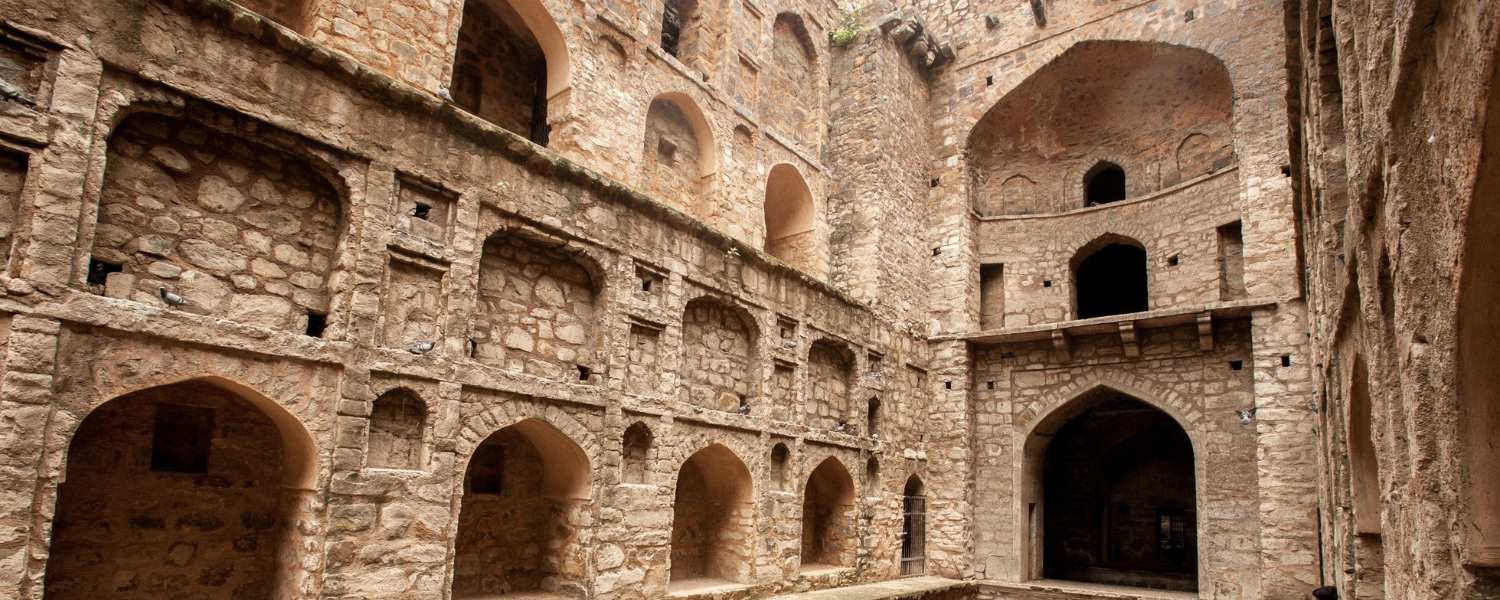
A commercial street with shops and eateries. Kasturba Gandhi Marg, named after Mahatma Gandhi’s wife, is a boulevard in central Delhi known for its colonial-era architecture, government buildings, and cultural institutions. Lined with trees, the avenue provides a tranquil escape amid the administrative hub, offering a pleasant stroll for locals and tourists.
51. National Handicrafts and Handlooms Museum
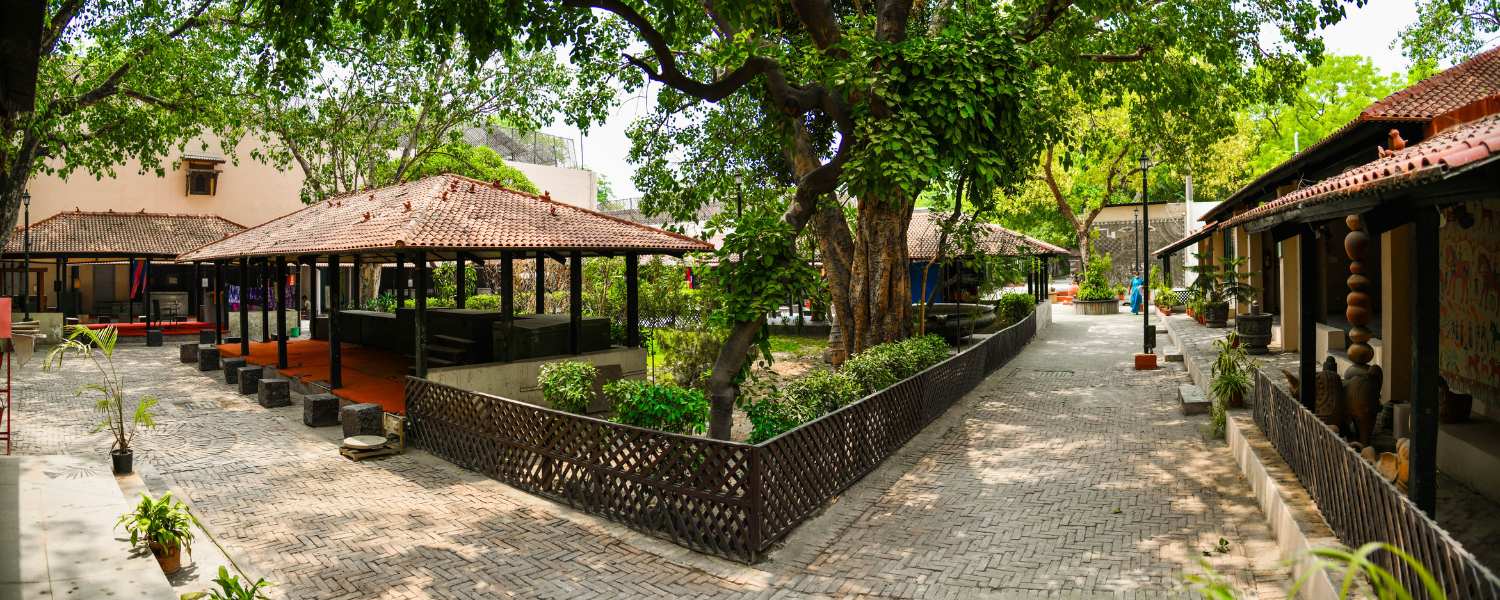
A museum showcasing traditional crafts. The National Handicrafts and Handlooms Museum, located on Bhairon Road near Pragati Maidan, showcases India’s rich artisanal heritage. The museum’s diverse collection encompasses traditional crafts, textiles, and folk art, providing a comprehensive insight into the country’s cultural diversity and skilled craftsmanship.
a) Opening hours: 9:30 am to 5 am (July to September); 9:30 am to 6 pm (October to June); closed on Mondays and national holidays
52. Rajouri Garden
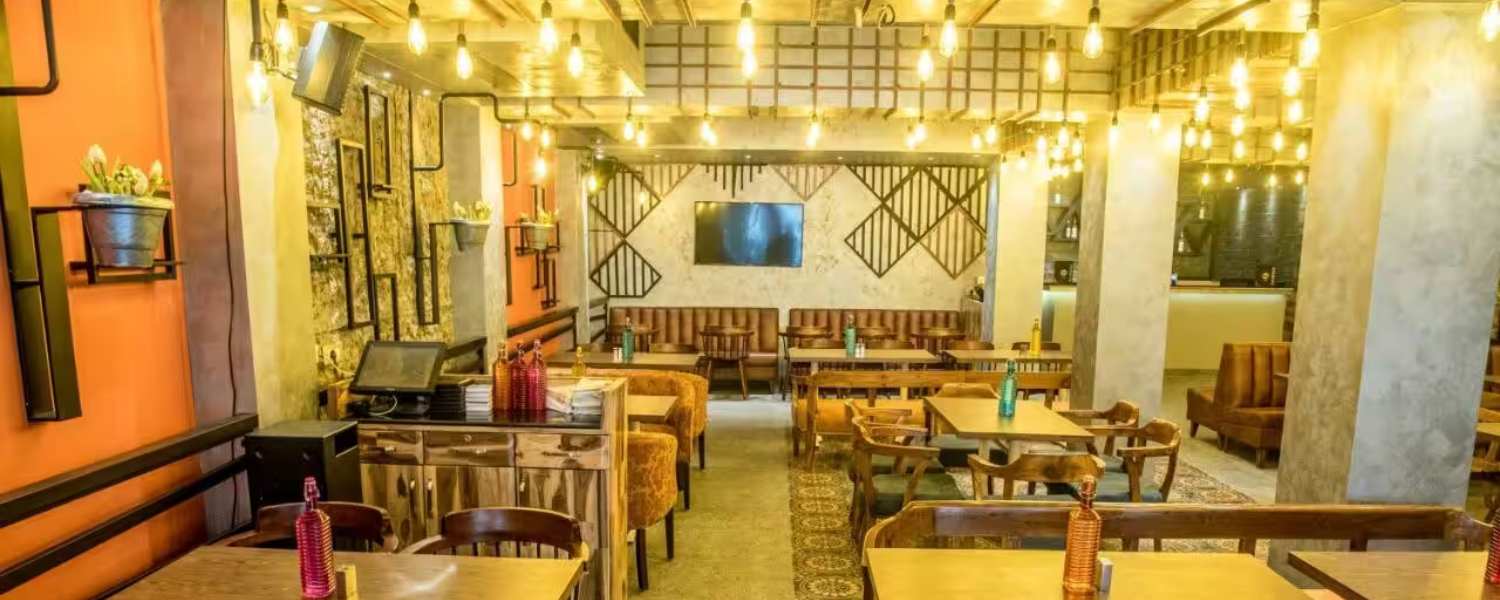
A lively neighbourhood known for its shopping and dining options. Rajouri Garden, a bustling locality in West Delhi, is a vibrant blend of commercial, residential, and entertainment spaces. Known for its lively markets, diverse dining options, and contemporary lifestyle, Rajouri Garden caters to the preferences of the residents and the younger generation seeking a dynamic urban experience.
53. National Police Memorial

The National Police Memorial in Chanakyapuri pays homage to the brave police officers who sacrificed their lives in the line of duty. The solemn monument, surrounded by serene greenery, stands as a tribute to the dedication and bravery of law enforcement officers, providing a reflective space for remembrance and gratitude.
54. Kalindi Kunj
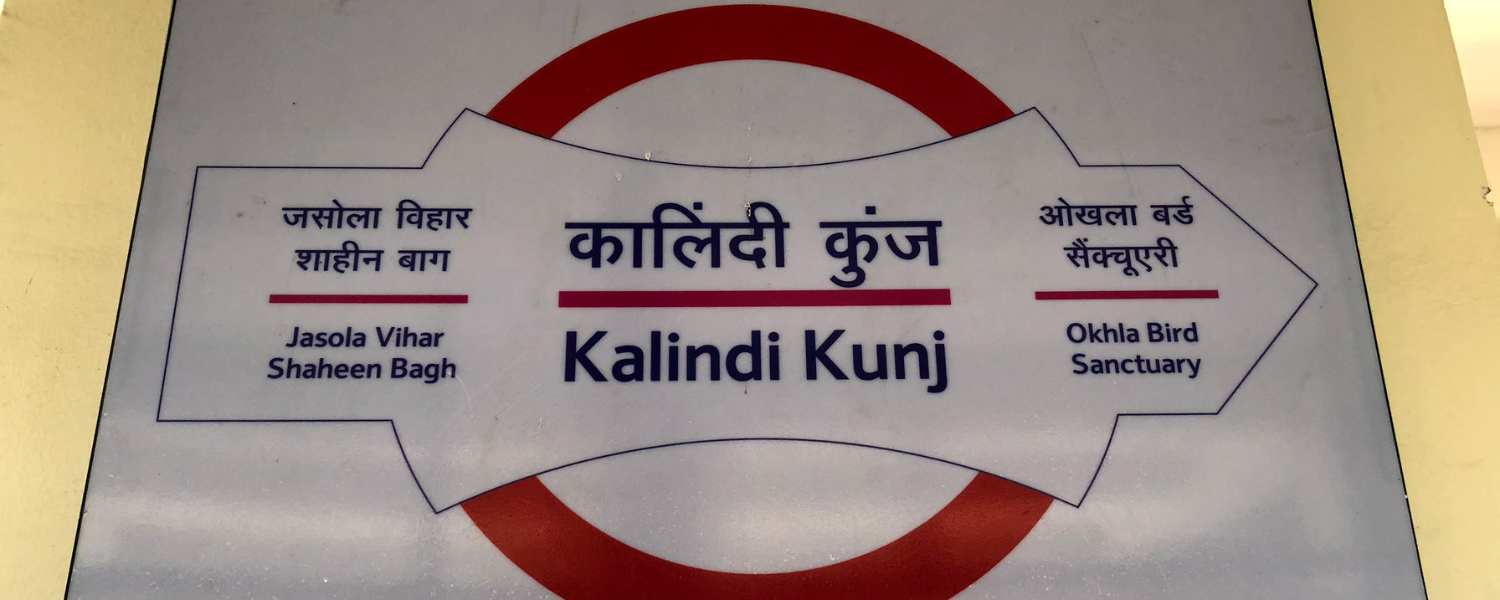
A park on the banks of the Yamuna River offering scenic views. Kalindi Kunj, nestled along the banks of the Yamuna River, is a scenic park in Delhi known for its lush vegetation and serene ambiance. Popular for picnics and leisurely walks, the park offers a quiet getaway from the metropolitan bustle, providing panoramic river views and serving as a recreational haven for locals.
55. Pragati Maidan
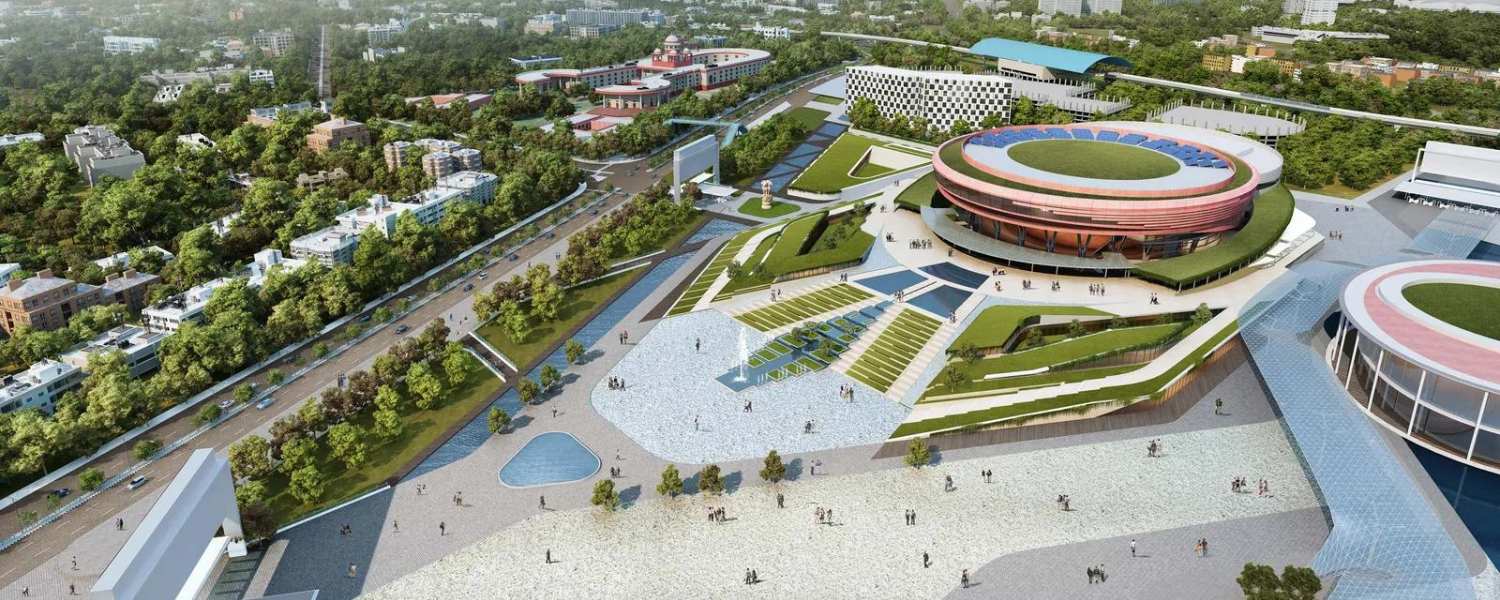
A venue for exhibitions, trade fairs, and events. Pragati Maidan, synonymous with trade fairs and exhibitions, is Delhi’s premier venue for hosting international events. Located near India Gate, this expansive exhibition complex showcases various industries and cultural events, contributing to the city’s dynamic landscape as a hub for commerce and cultural exchange.
- Built By: architect Raj Rewal
- Built In: November 3, 1972
- Opening hours: The visiting times need to be set and depend on the event being held there.
- Entry fee: The packet deal per person begins at 9914 INR.
56. Shakuntalam Theatre
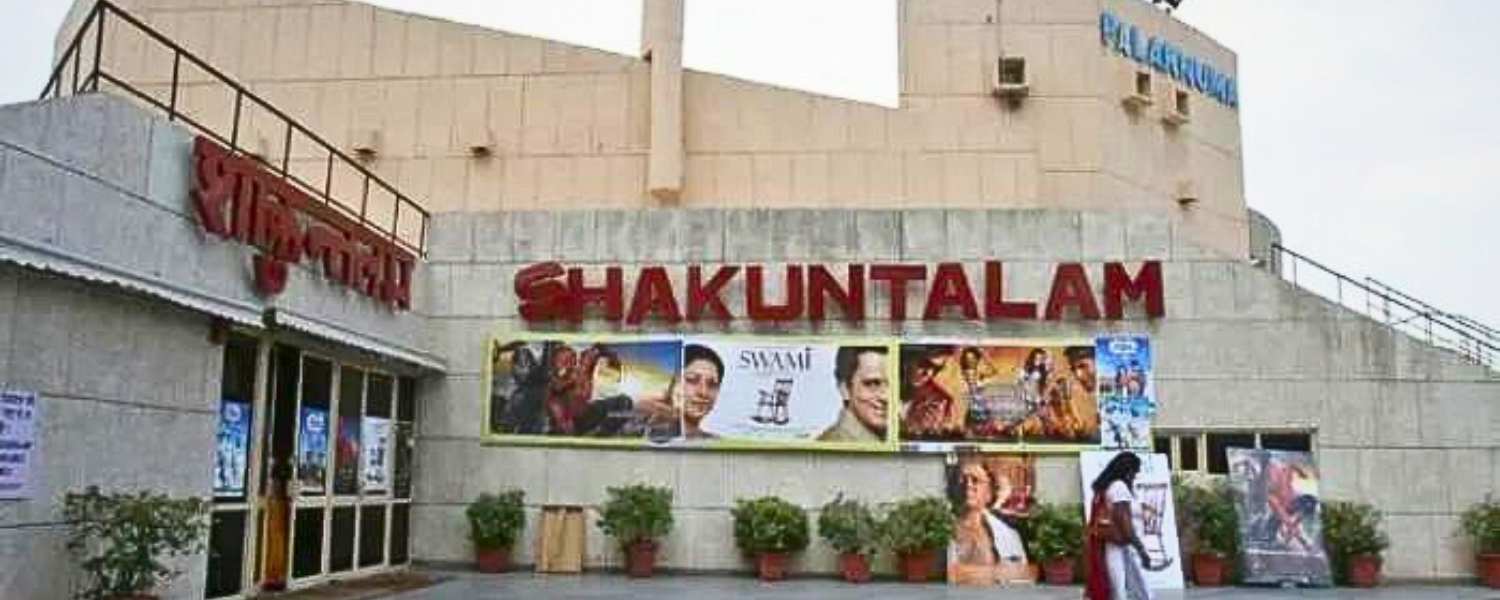
A popular venue for plays and cultural performances. Shakuntalam Theatre, situated in Pragati Maidan, is a cultural landmark for hosting theatrical performances, musicals, and cultural events. The theatre’s state-of-the-art facilities provide a platform for artistic expression, fostering a vibrant cultural scene in the heart of Delhi.
57. Shahpur Jat

It is a trendy neighborhood with boutiques, cafes, and street art. Shahpur Jat, a trendy urban village in South Delhi, is renowned for its eclectic mix of boutiques, designer studios, and cafes. A pot of practice and modernity, the area attracts fashion enthusiasts, artists, and food connoisseurs, offering a unique blend of contemporary lifestyle and cultural vibrancy.
58. Sacred Heart Cathedral Church
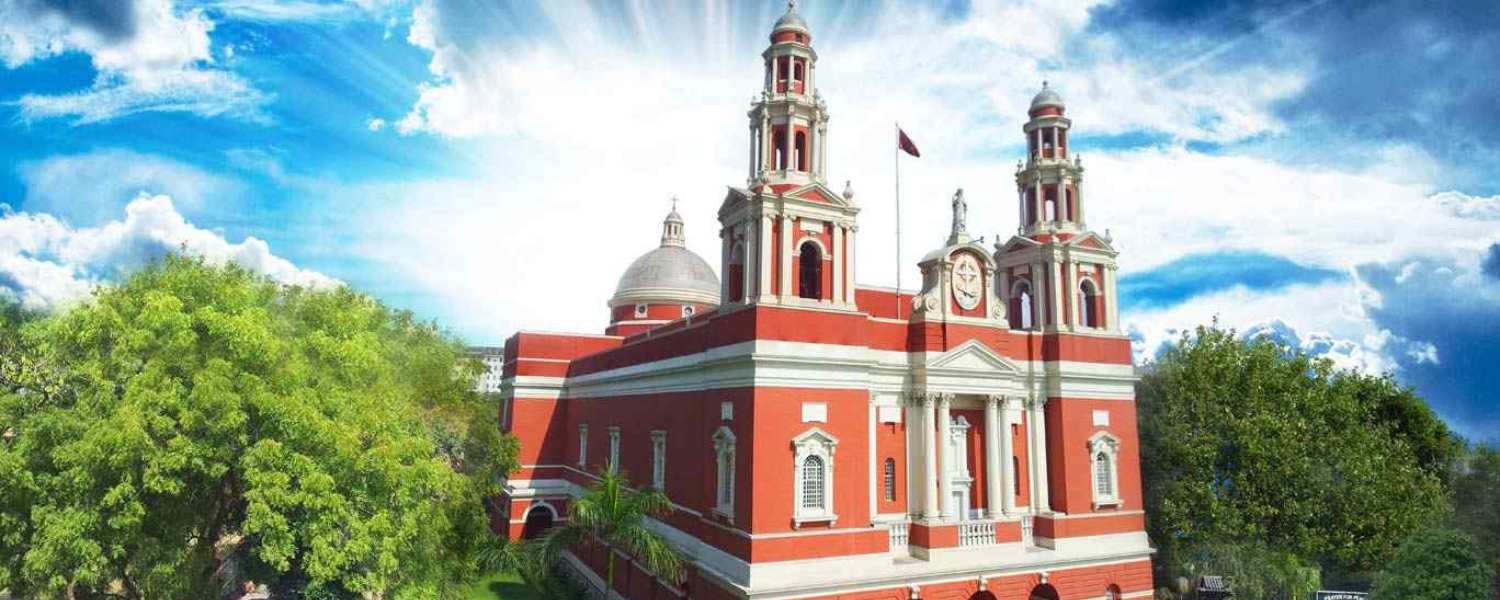
Sacred Heart Cathedral near Connaught Place is a majestic Roman Catholic church that is an architectural marvel. The church, with its Gothic Revival style, ornate interiors, and serene ambiance, is a spiritual haven and a cultural landmark in the heart of Delhi.
a) Entry fee: No entry fee
b) Opening hours: 6:30 am to 6 pm
59. Kamala Nehru Ridge

A serene area known for its lush greenery and walking trails. Kamala Nehru Ridge, part of the Delhi Ridge, is a green expanse near the North Campus, providing a peaceful retreat for students and nature enthusiasts. Named after Kamala Nehru, the wife of Jawaharlal Nehru, the Ridge offers walking trails, historical ruins, and a tranquil environment, creating a harmonious blend of nature and history within the bustling city.
60. Hudson Lane (GTB Nagar)

A bustling student hub with cafes, eateries, and vibrant street life. Hudson Lane, situated in the GTB Nagar area, is a bustling culinary hub near Delhi University. Lined with many quirky cafes and eateries, it’s a favorite hangout for students and young professionals, offering diverse culinary delights and a vibrant ambiance.
61. Sri Digambar Jain Lal Mandir
The oldest Jain temple in Delhi, is known for its stunning architecture. Sri Digambar Jain Lal Mandir, the oldest Jain temple in Delhi, stands in the heart of Chandni Chowk. Known for its red sandstone architecture and a bird hospital, it’s a sacred space for the Jain community and a historical gem amidst the bustling places to visit in Delhi.
62. Sarai Kale Khan

A major transport hub with a bustling inter-state bus terminal. Sarai Kale Khan, a prominent transportation hub in Delhi, is known for its inter-state bus terminal and the Hazrat Nizamuddin Railway Station. Connecting travellers to various destinations, it’s a busy junction serving both regional and national transit needs.
63. Safdarjung Enclave Market
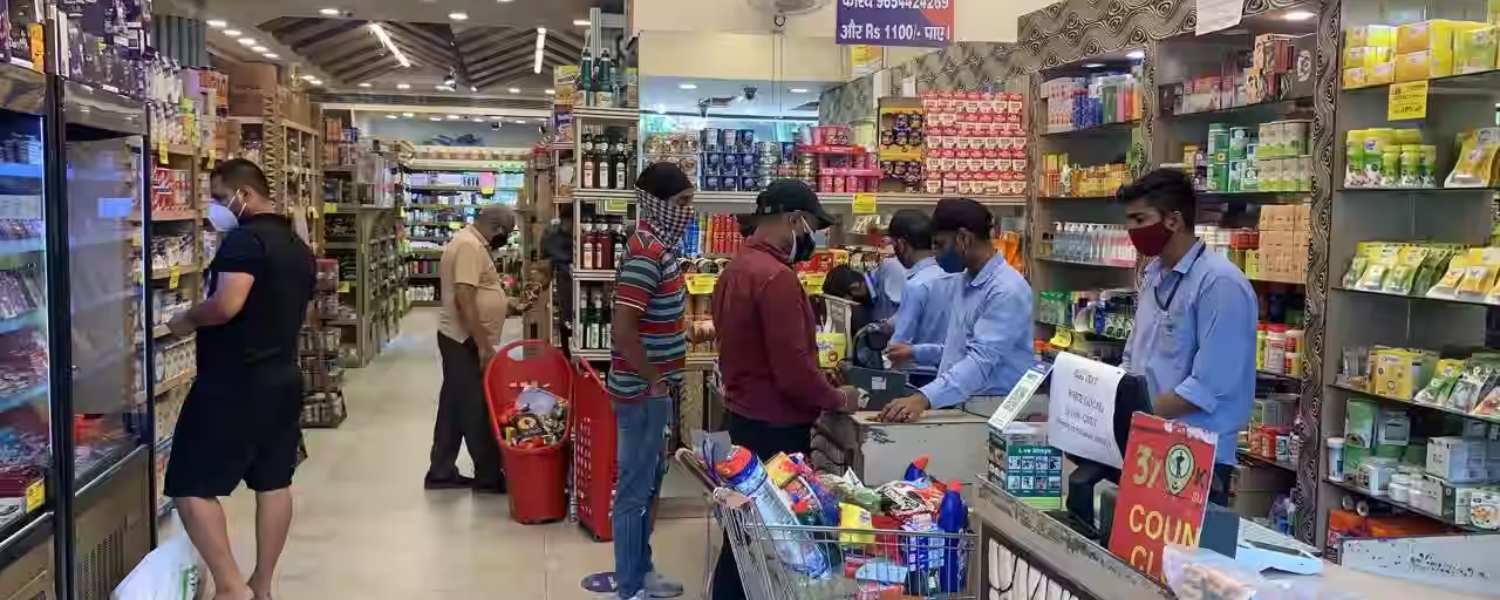
Safdarjung Enclave Market is a local shopping destination in South Delhi, offering a mix of boutiques, cafes, and lifestyle stores. This chic market caters to the urban crowd, providing a trendy shopping experience with various fashion, culinary, and lifestyle options.
64. Kamani Auditorium

A cultural venue hosting theatre, music, and dance performances. Kamani Auditorium, located in Copernicus Marg, is a prominent cultural venue hosting classical music and dance performances. Known for its acoustics and elegant setting, the auditorium contributes to places to visit in Delhi, attracting enthusiasts and artists alike for a dose of artistic excellence.
65. Safdarjung Airport
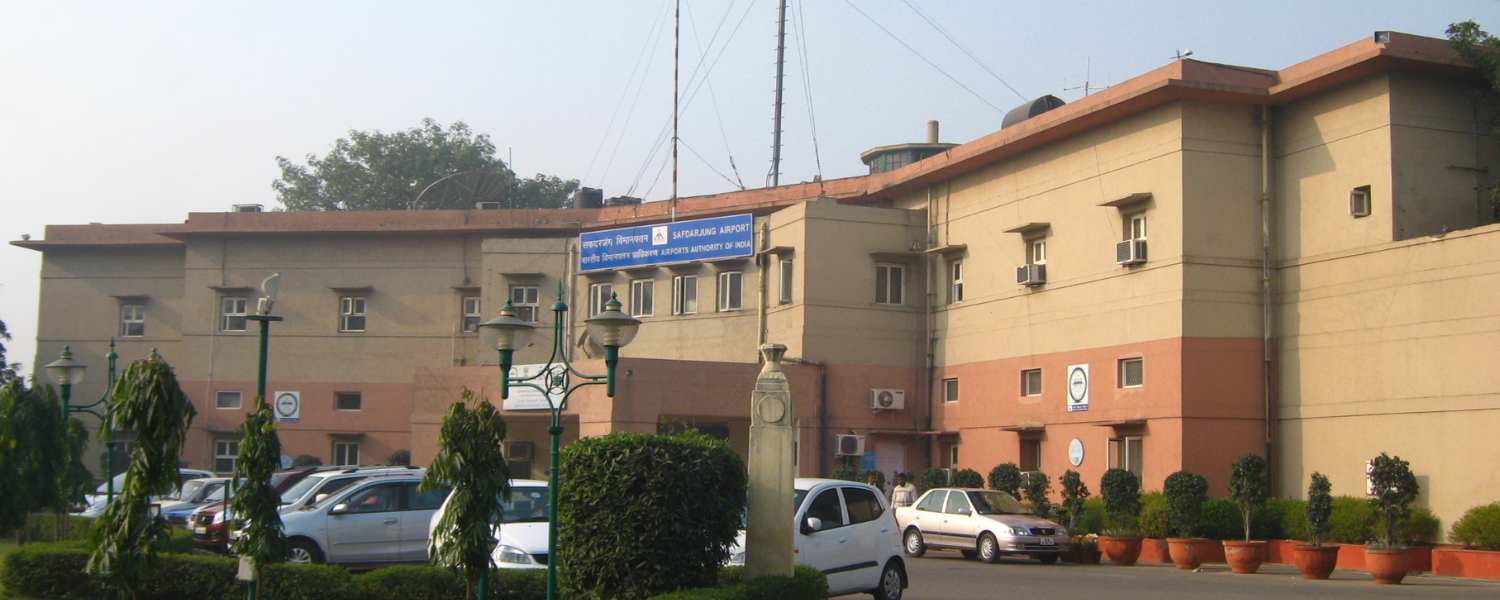
A historic airport with remnants of the pre-independence era. Safdarjung Airport, a historic airstrip in the heart of Delhi, holds significance as the city’s first airport. Though not operational for commercial flights, it reminds of places to visit in Delhi’s aviation history, hosting small aircraft and aviation events and contributing to the city’s aerial legacy.
66. Khirki Masjid
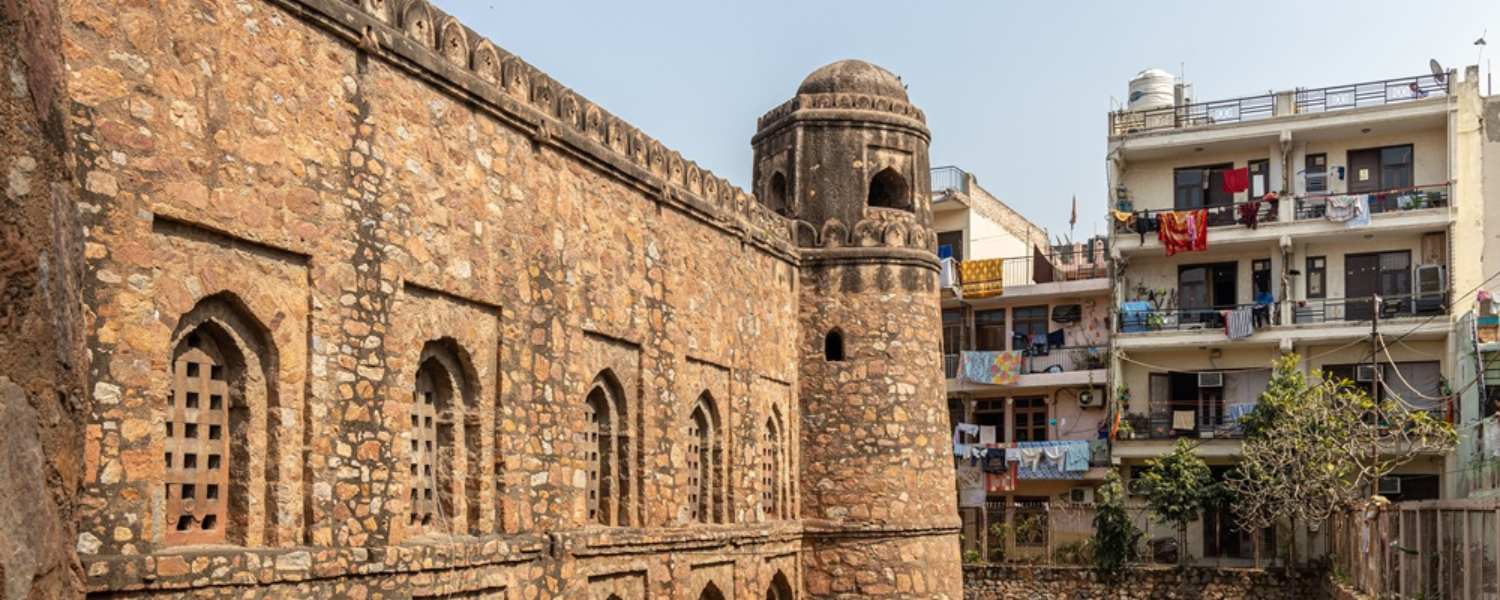
A unique mosque known for its perforated windows.
Khirki Masjid, a 14th-century mosque in South Delhi, is renowned for its distinctive architectural style featuring windows with latticework. This historical gem is a testament to places to visit in Delhi, offering a serene space for reflection and exploration.
67. Central Park, CP
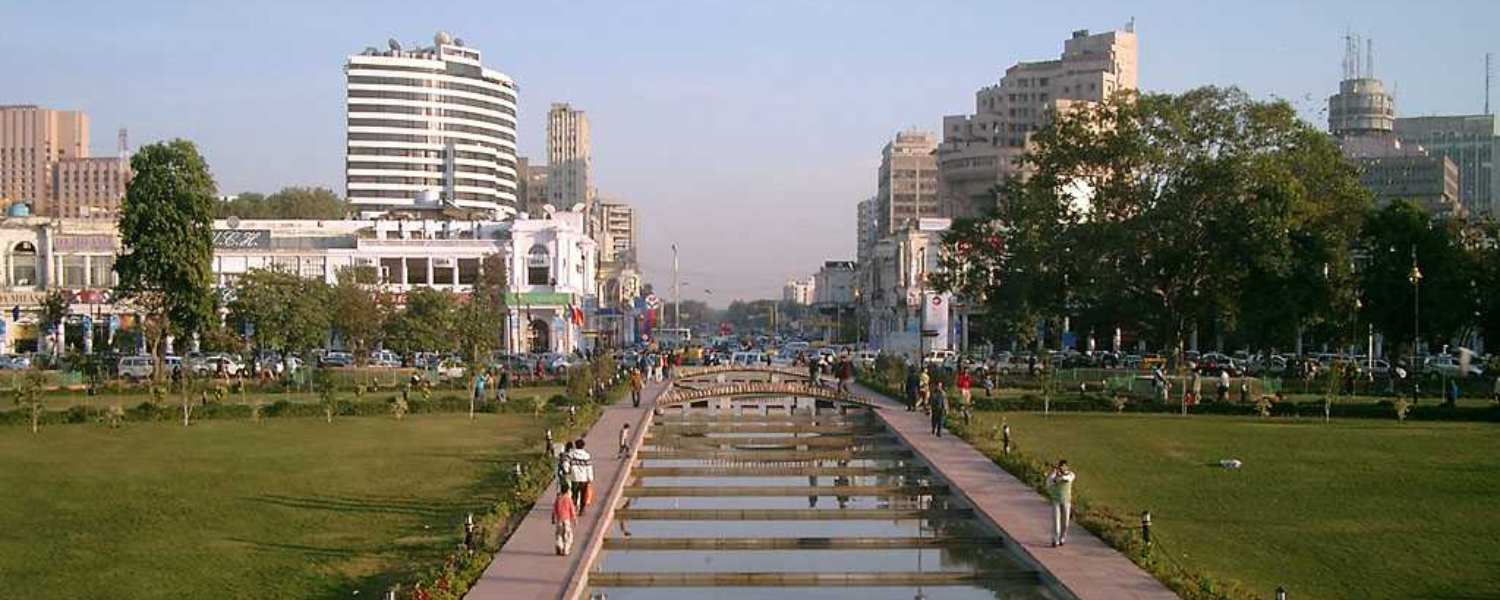
A green oasis in the heart of Connaught Place.
Central Park in Connaught Place is a verdant oasis amid the bustling city. The park’s lush greenery, soothing fountains, and jogging tracks make it a popular retreat for locals and tourists seeking a peaceful escape in the heart of places to visit in Delhi.
68. Ghalib ki Haveli

The residence of the renowned poet Mirza Ghalib.
Ghalib ki Haveli, nestled in the narrow lanes of Ballimaran, was the residence of the renowned Urdu poet Mirza Ghalib. Preserving his legacy, the haveli is a museum showcasing Ghalib’s life and literary contributions, inviting visitors to enter the poet’s world.
69. Delhi Public Library
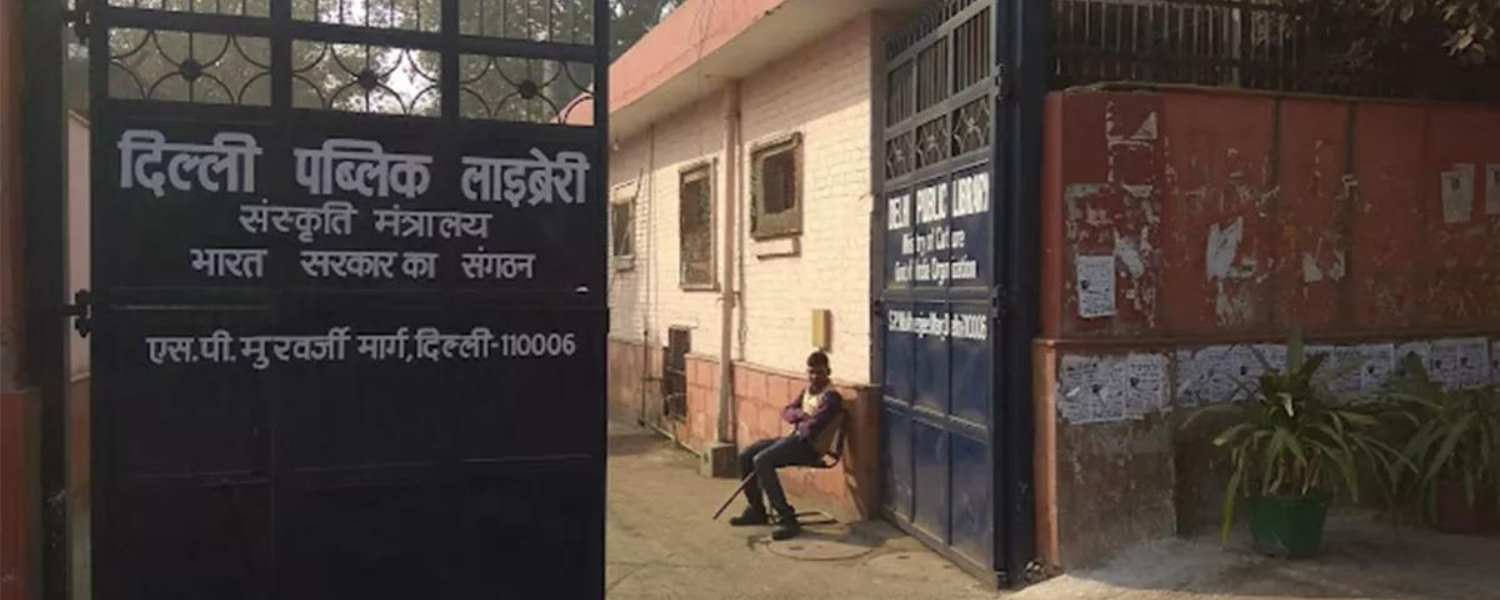
A hub for literature enthusiasts with an extensive collection. The Delhi Public Library, located near Old Delhi’s bustling streets, is a literary haven fostering knowledge and education. Established in 1951, it houses a vast collection of books, periodicals, and resources crucial to promoting literacy and cultural enrichment.
70. Jahaz Mahal
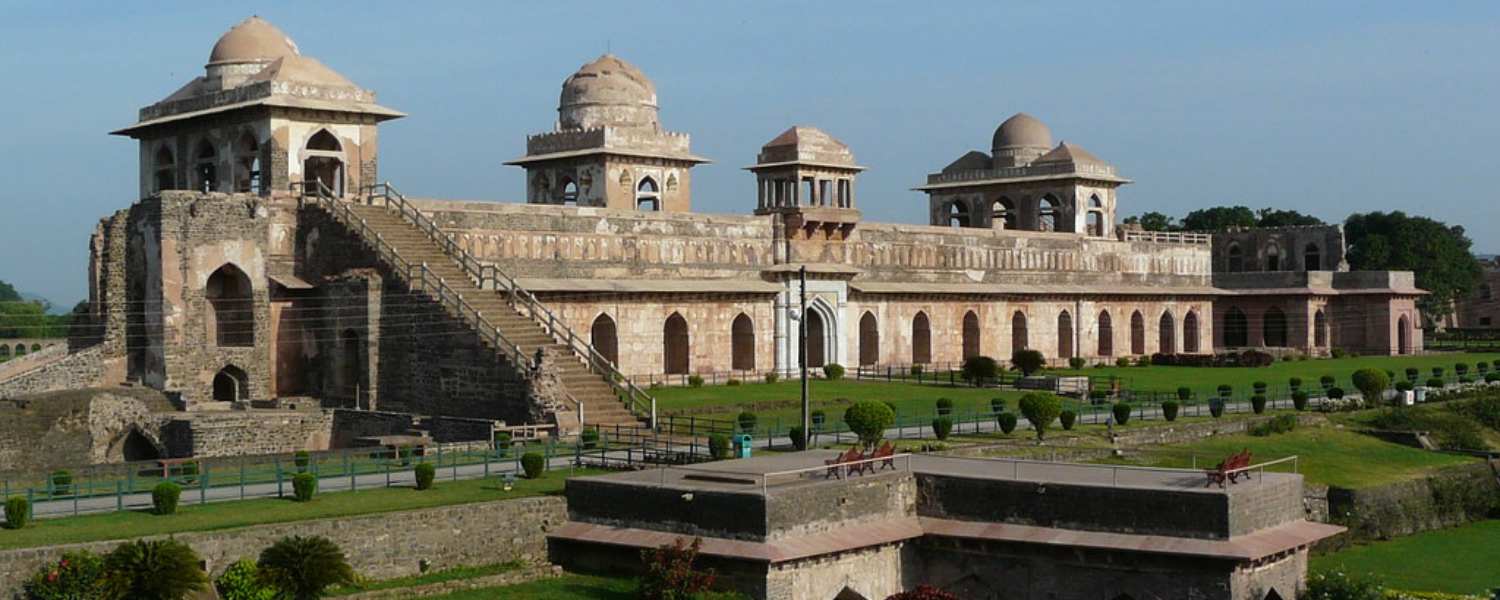
A historical palace reflecting the architectural splendour of its time. Jahaz Mahal, situated in Mehrauli, is a medieval palace reflecting Indo-Islamic architecture. This “Ship Palace” stands beside a reservoir, creating a mesmerizing reflection during monsoons. With its intricate carvings, the palace narrates tales of bygone eras.
71. Tomb of Safdarjung

A garden tomb honoring Safdarjung, a notable Mughal statesman. The Tomb of Safdarjung, a Mughal mausoleum, graces the Delhi skyline with its grandeur. Surrounded by lush gardens, the Tomb commemorates Safdarjung, the chief minister of the Mughal Empire, showcasing exquisite Mughal architecture.
a) Built By: Shuja-ud-Daula
b) Built In: 1753-54
c) Opening hours: It is open on all days of the week from sunrise to sunset.
d) Entry Fee: For SAARC members and Indian citizens, the fee is Rs 15, but for foreign nationals, it’s Rs 200.
72. Delhi Metro Museum

Showcasing the evolution of Delhi’s lifeline, the metro. The Delhi Metro Museum, located at Patel Chowk Metro Station, offers insights into the evolution of Delhi’s metro system. Interactive exhibits and displays showcase the metro’s journey, technological advancements, and impact on urban transportation.
73. Paharganj
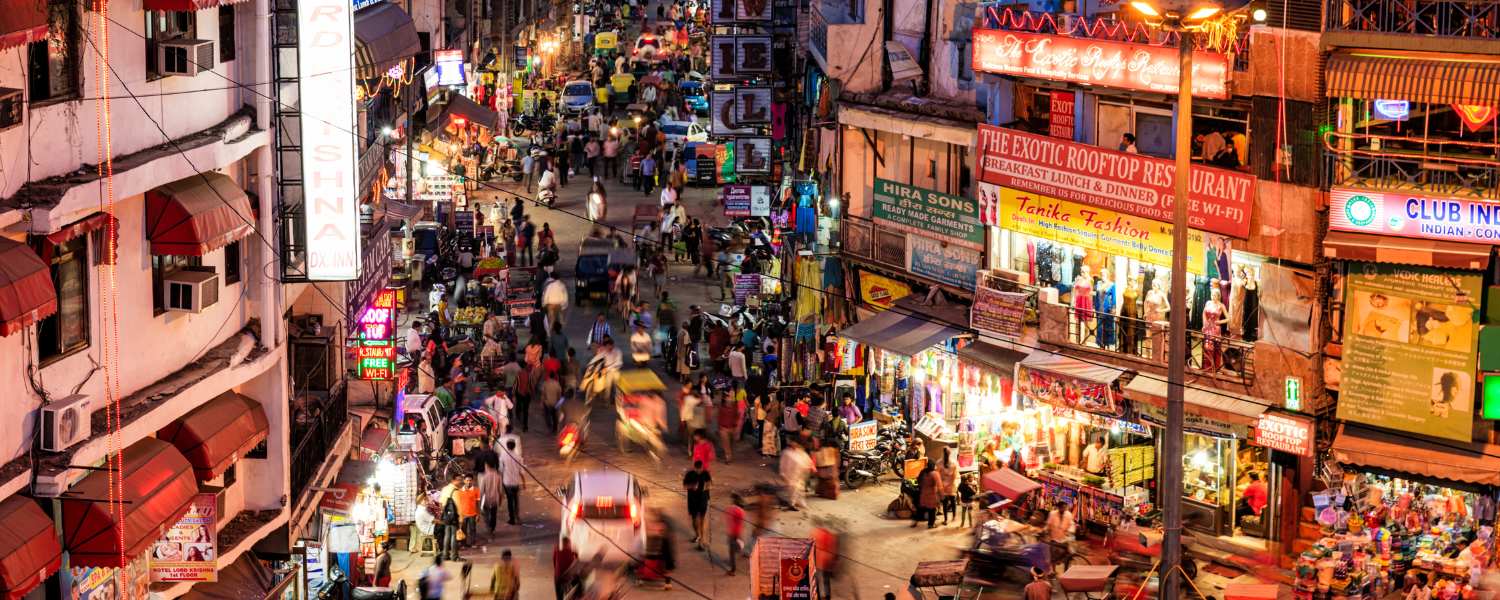
It is a lively neighborhood near New Delhi Railway Station known for its budget accommodations and vibrant street life. Near New Delhi Railway Station is a bustling market and a haven for budget travelers. Known for its vibrant street life, diverse eateries, and affordable accommodations, Paharganj provides a dynamic blend of commerce, culture, and the transient charm of a travel hub in places to visit in Delhi.
a) Opening hours: Open on all days of the week from 11:00 to 09:00 pm except on Mondays.
b) Entry fees: None
74. Barakhamba Tomb
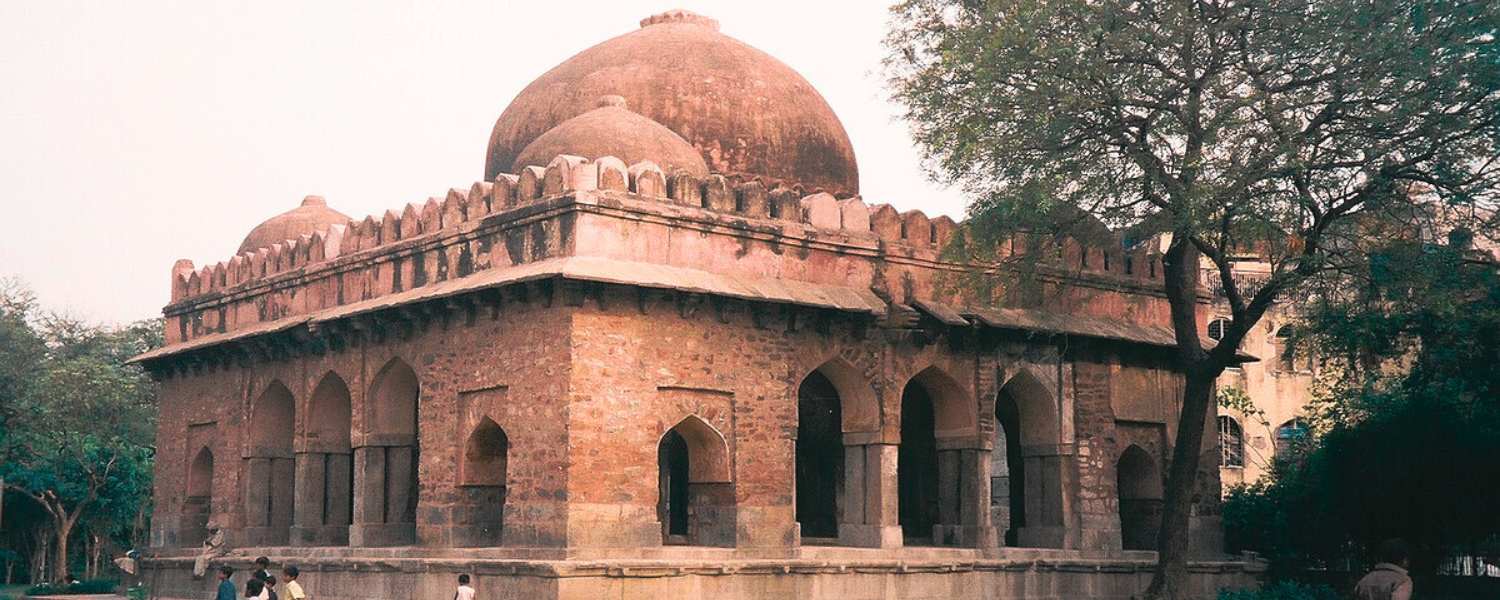
A commercial and business hub with skyscrapers and shopping centers. Barakhamba Tomb, an ancient mausoleum in Nizamuddin, is a marvel of Indo-Islamic architecture. With its twelve-sided structure, it stands as a testament to Delhi’s historical and cultural richness.
a) Built In: 14th century
b) Entry fee: No entry fee
c) Opening hours: 8 am to 6 pm
d) Must visit: Lal Mahal which is located nearby
75. National Science Centre
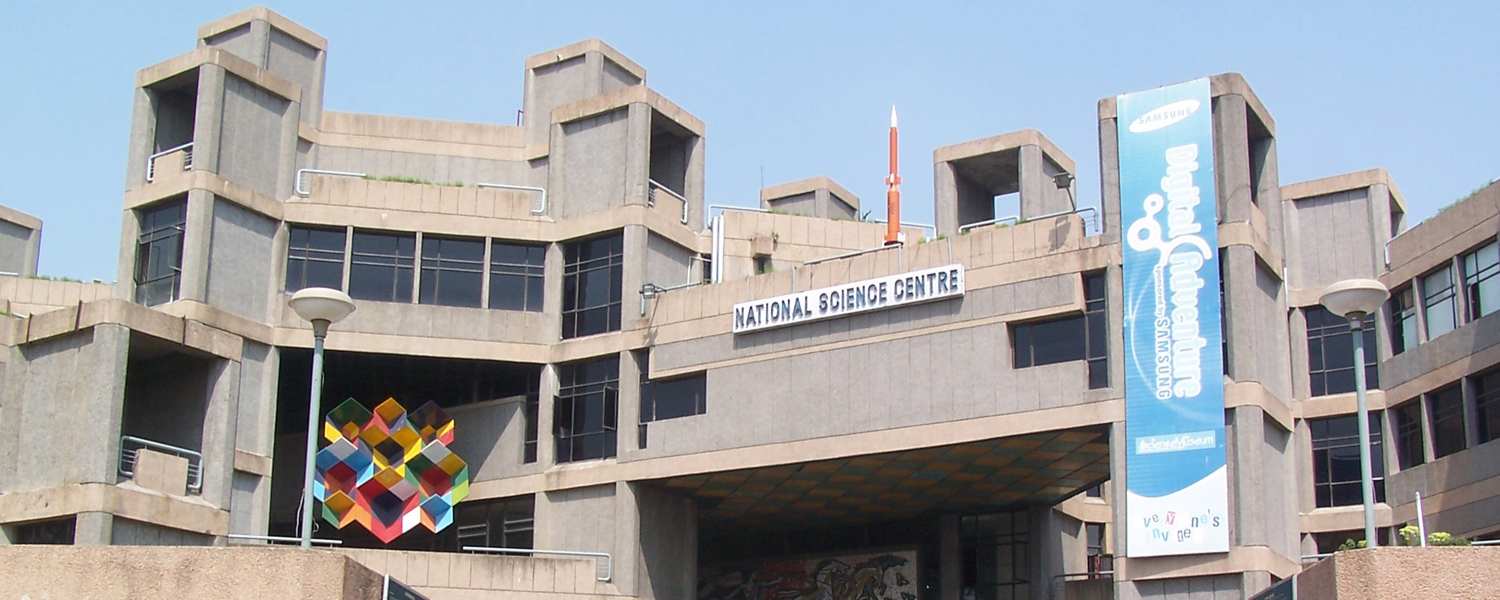
An interactive science museum engaging visitors with exhibits and activities. Pragati Maidan – National Science Centre is a scientific wonderland, engaging visitors with interactive exhibits and captivating displays. It fosters a spirit of inquiry, making science accessible and enjoyable for all.
76. Sarai Rohilla

A historic railway station with architectural charm. Sarai Rohilla, a historic railway station, reflects the city’s railway legacy. Its Victorian-era architecture and bustling atmosphere connect commuters to Delhi’s extensive railway network.
77. Haveli Dharampur
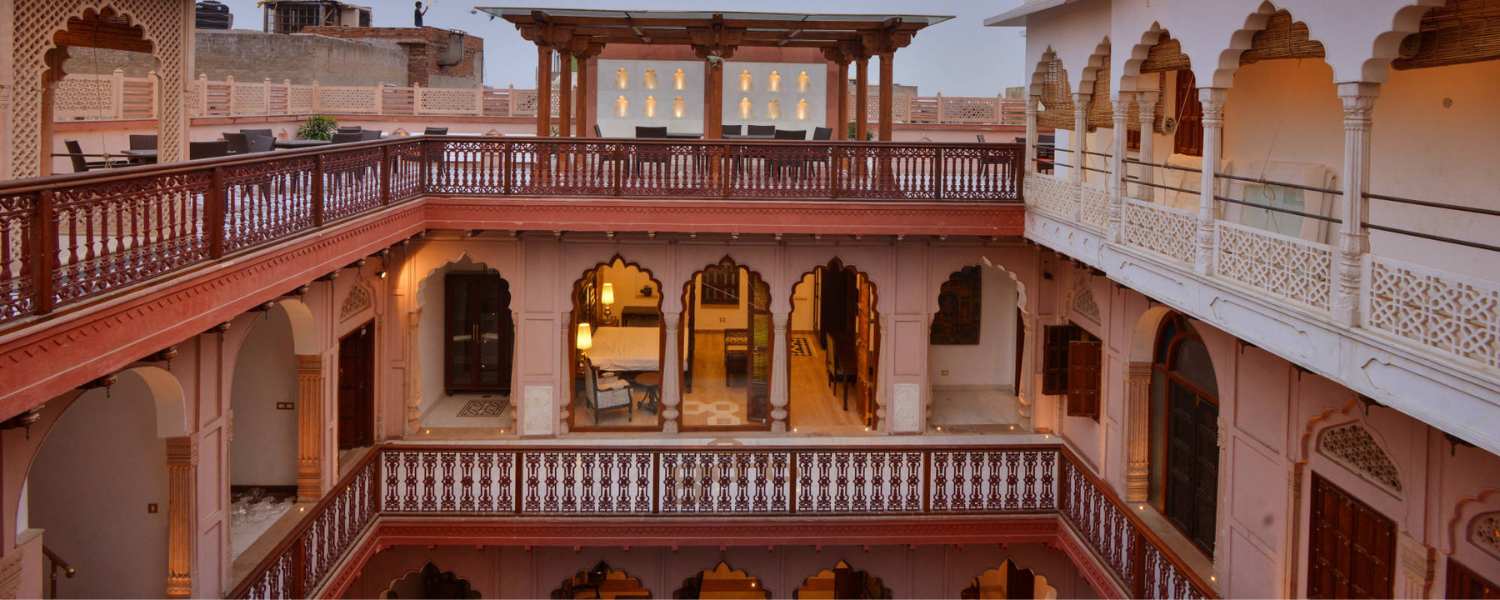
A restored haveli providing a glimpse into Old Delhi’s opulent past. Haveli Dharampura, nestled in the heart of Chandni Chowk, is a restored mansion showcasing Mughal and colonial architecture. This boutique heritage hotel immerses guests in places to visit in Delhi.
78. Delhi War Cemetery
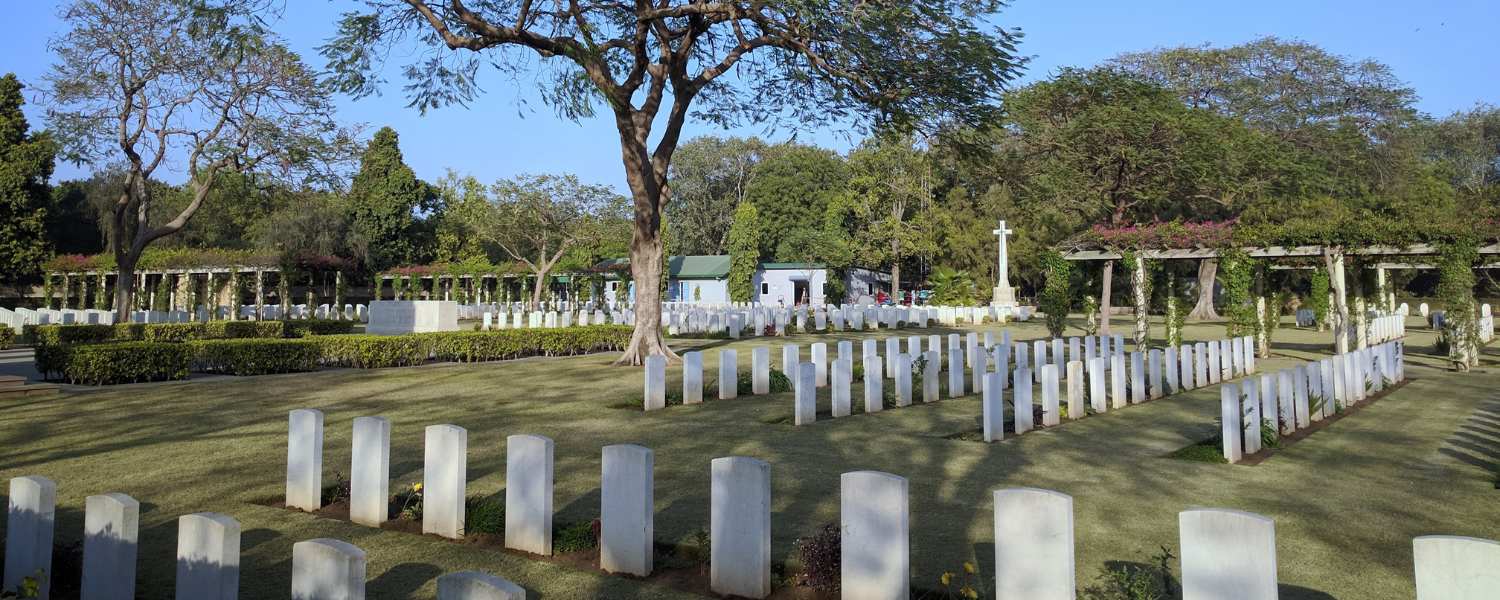
A serene memorial dedicated to soldiers who lost their lives in World War II. The Delhi War Cemetery in the Cantonment area pays awards to soldiers who surrendered their lives during World War II. Serene and solemn, it stands as a poignant reminder of their courage.
79. Tibet House

A cultural center preserving Tibetan heritage and art. Tibet House, near ITO, is a cultural center preserving Tibetan heritage. Its library, artifacts, and events serve as a bridge connecting Delhi to the rich Tibetan culture.
a) Built By: Dalai Lama
b) Built In: 1965
c) Entry fee: INR 10 per person
d) Opening hours: 9:30 am to 5:30 pm
80. Select Citywalk
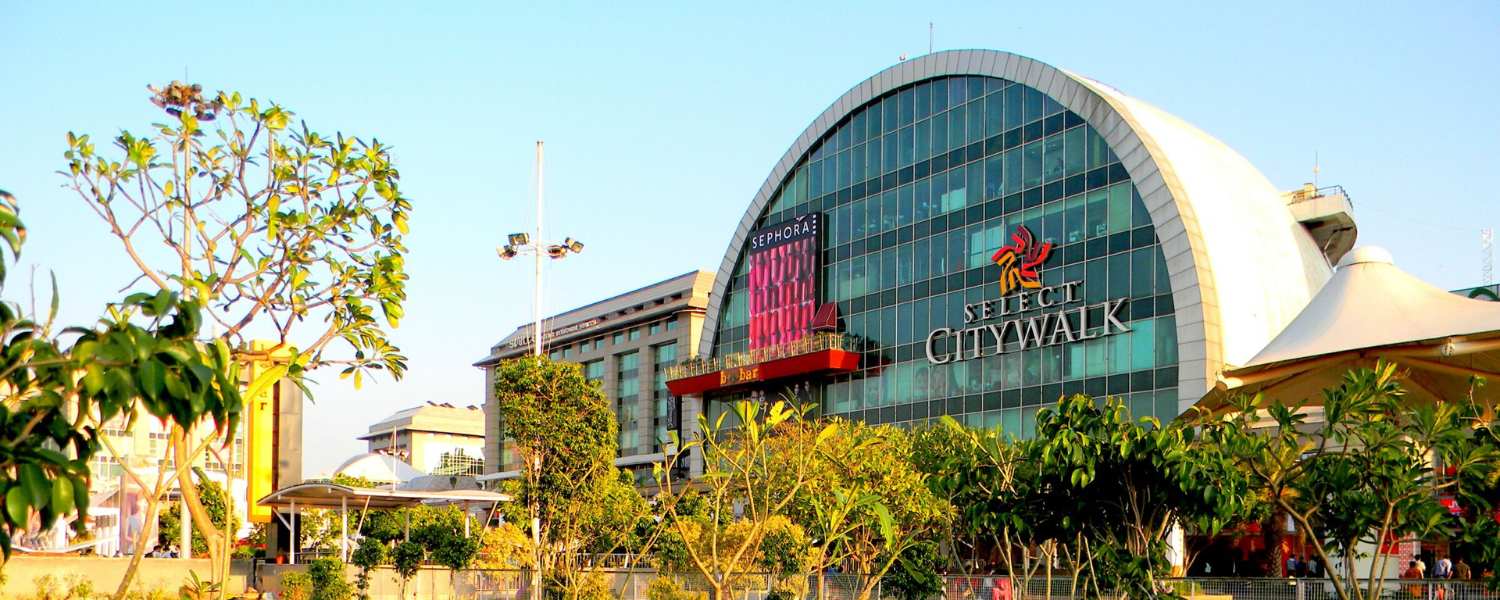
A premium shopping mall offering international and Indian brands. Select Citywalk in Saket is a premium shopping destination offering a blend of high-end brands, dining, and entertainment. Its vibrant ambiance makes it a favored spot for places to visit in Delhi.
a) Built By: Mr. Yog Raj Arora, Mrs. Neeraj Ghei & Mr. Arjun Sharma
b) Built In October 2007
c) Opening hours: 11 am till late evening
81. Chhatarpur Temple
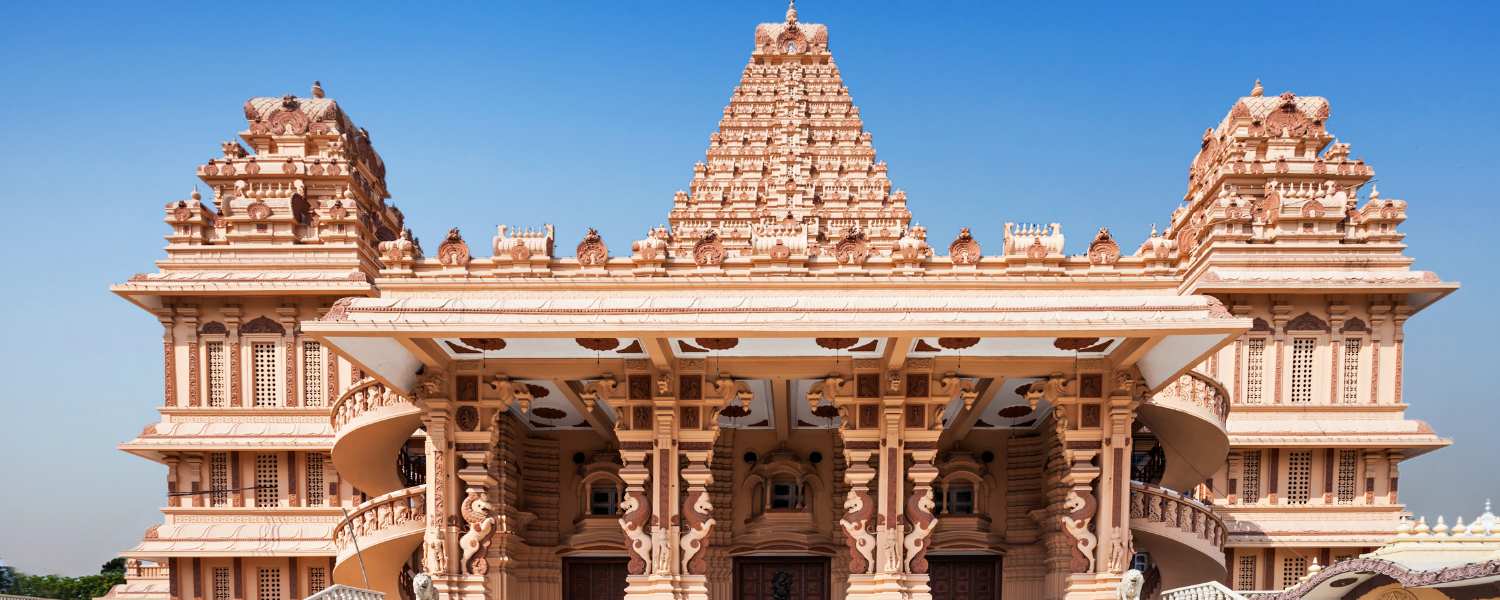
A beautiful temple complex dedicated to Goddess Katyayani. Chhatarpur Temple, dedicated to Goddess Katyayani, is a sprawling temple complex showcasing intricate carvings. Located in South Delhi, it draws devotees seeking spiritual solace amid its tranquil surroundings.
a) Built By: Baba Sant Nagpal ji
b) Built In: 1974
c) Tip: Dress modestly when you visit the temple
d) Opening hours: 6 am to 10 pm
82. Khooni Darwaza
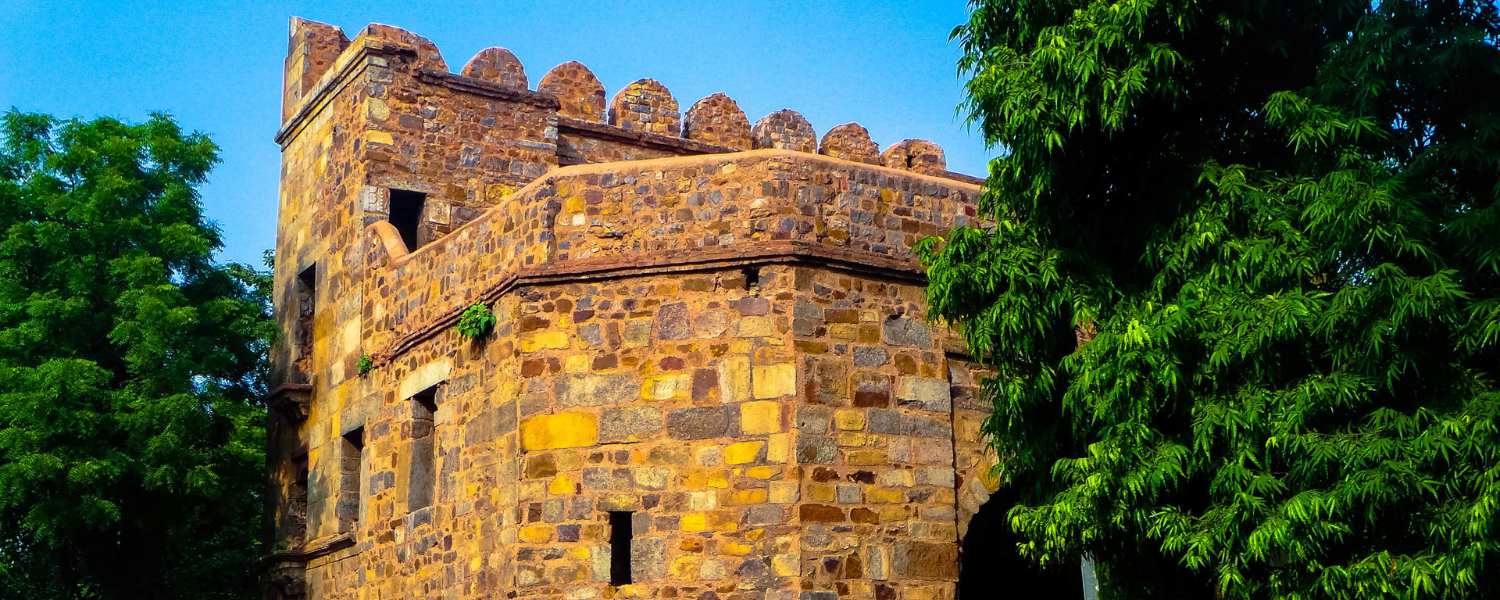
A historical gateway with a dark past.
Khooni Darwaza, also known as Lal Darwaza, stands as a sad witness to Delhi’s history. This medieval gateway bears witness to tragic events, notably the execution of the Mughal princes in 1857. Its imposing structure in Bahadur Shah Zafar Marg remains a stark reminder of Delhi’s tumultuous past.
83. Ghalib Academy
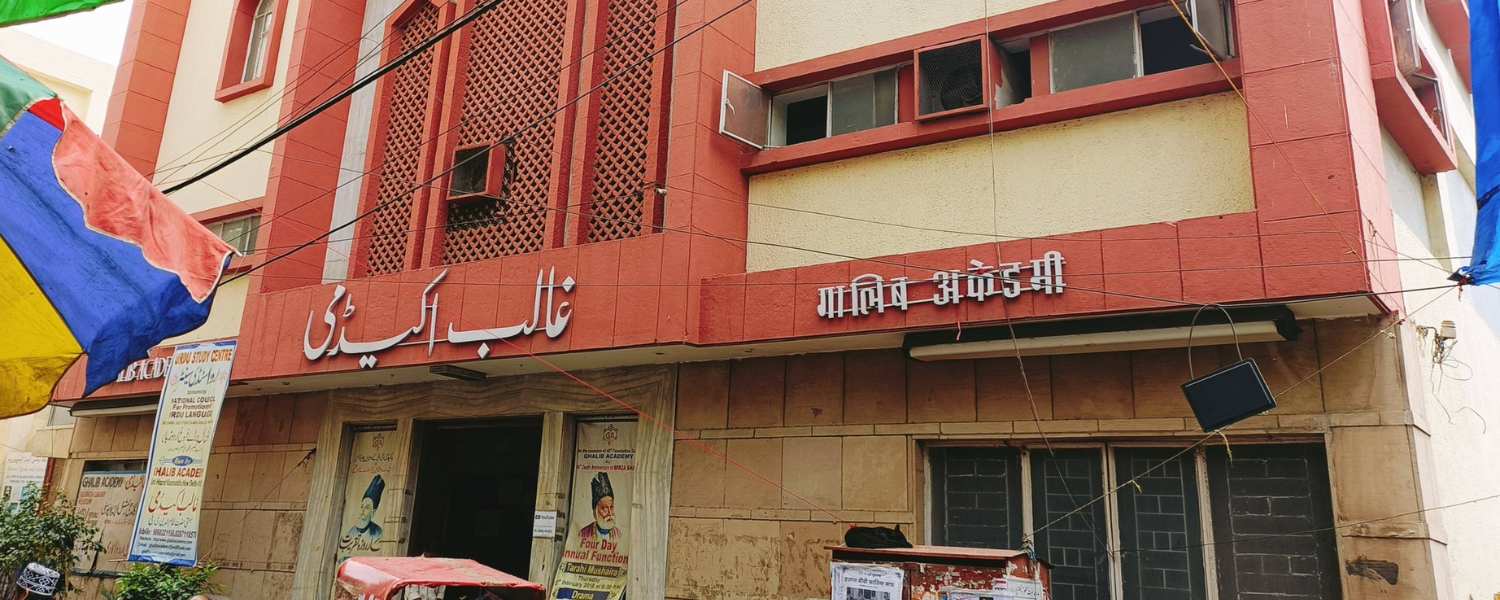
A center dedicated to the life and works of the renowned poet Mirza Ghalib. Ghalib Academy, located in Nizamuddin, honors the legacy of the renowned Urdu poet Mirza Ghalib. With its extensive collection of Ghalib’s works, events, and seminars, the academy preserves and promotes the profound literary contributions of this iconic figure.
84. Daryaganj Sunday Book Market
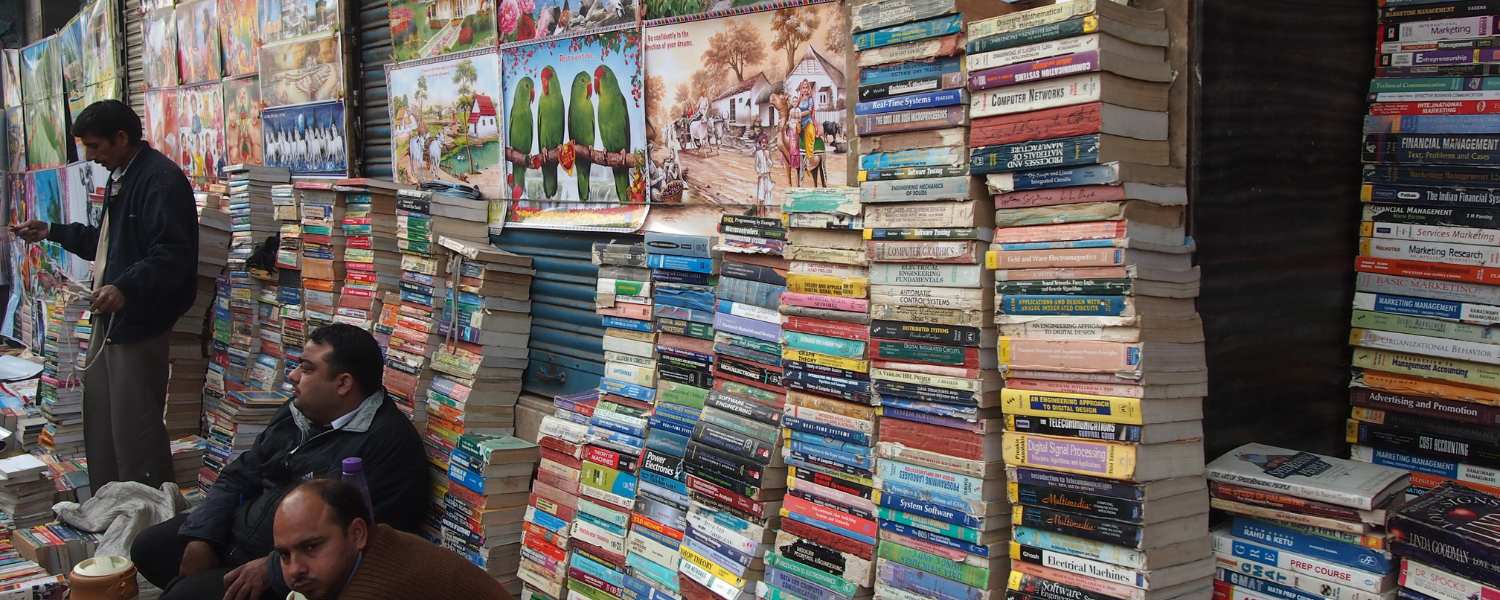
An iconic book market that draws book enthusiasts. Daryaganj Sunday Book Market, a bibliophile’s haven, transforms the bustling Daryaganj area into a sprawling book bazaar every Sunday. This dynamic market offers a treasure trove of new and second-hand books, drawing book lovers from across places to visit in Delhi.
85. Bijay Mandal
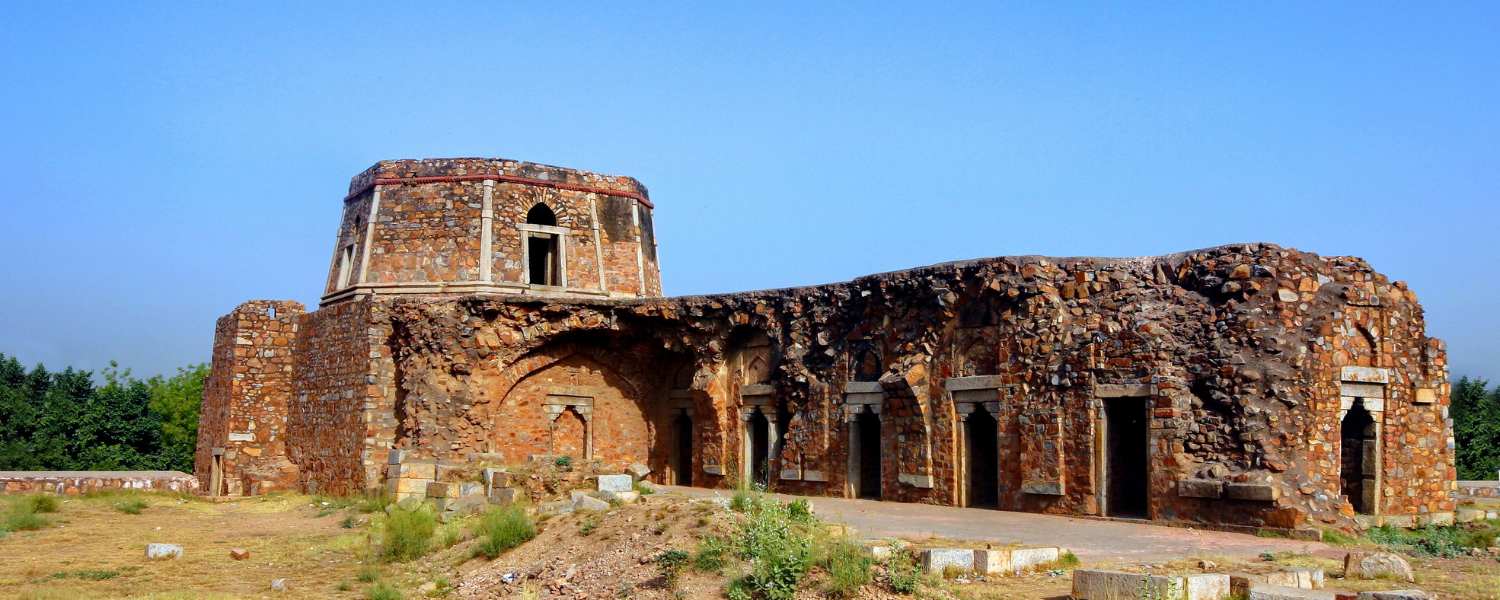
A historical site with ancient structures and ruins. Bijay Mandal, nestled in places to visit in Delhi near Nizamuddin, is an ancient complex dating back to the Delhi Sultanate. The ruins of this strategic structure reveal glimpses of architectural splendor, providing a glimpse into places to visit in Delhi rich medieval heritage.
86. Lal Kot Wall
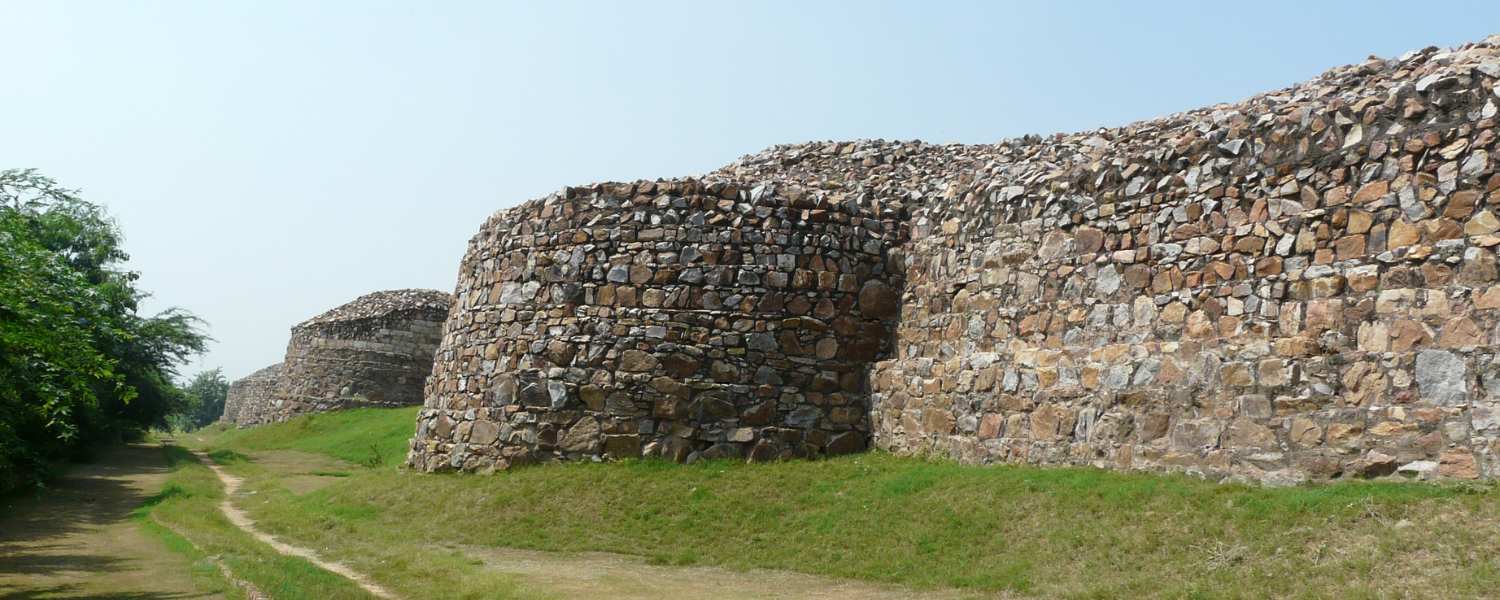
The remnants of the fortified city of Lal Kot. Lal Kot Wall, part of the Qila Rai Pithora, traces Delhi’s early history. This ancient fortification, encompassing the Qutub Minar complex, narrates tales of the city’s founding, standing as a silent witness to centuries of evolution and change.
87. Shanti Van
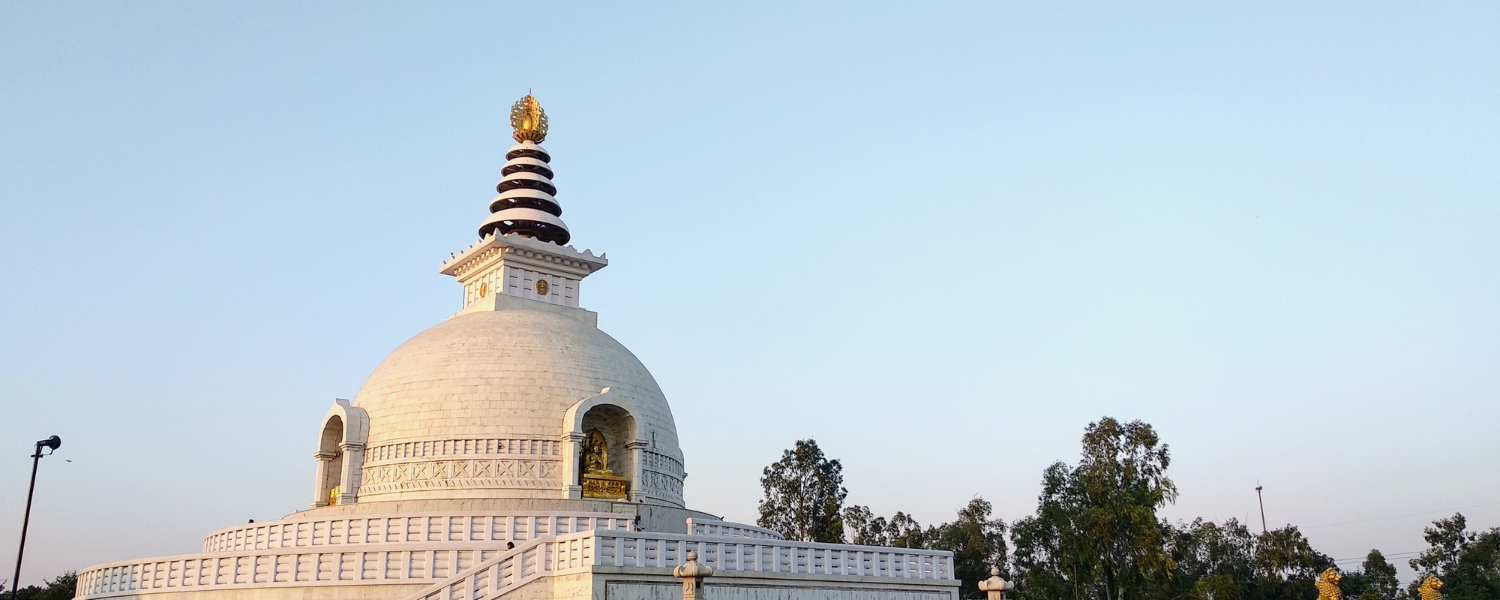
The memorial to Jawaharlal Nehru is surrounded by beautiful gardens. Shanti Van, a serene memorial on the banks of the Yamuna, pays tribute to India’s first Prime Minister, Jawaharlal Nehru. It is covered by lush greenery and provides a peaceful retreat for reflection and memory, symbolizing Nehru’s legacy of peace and unity.
88. Raj Ghat Museum
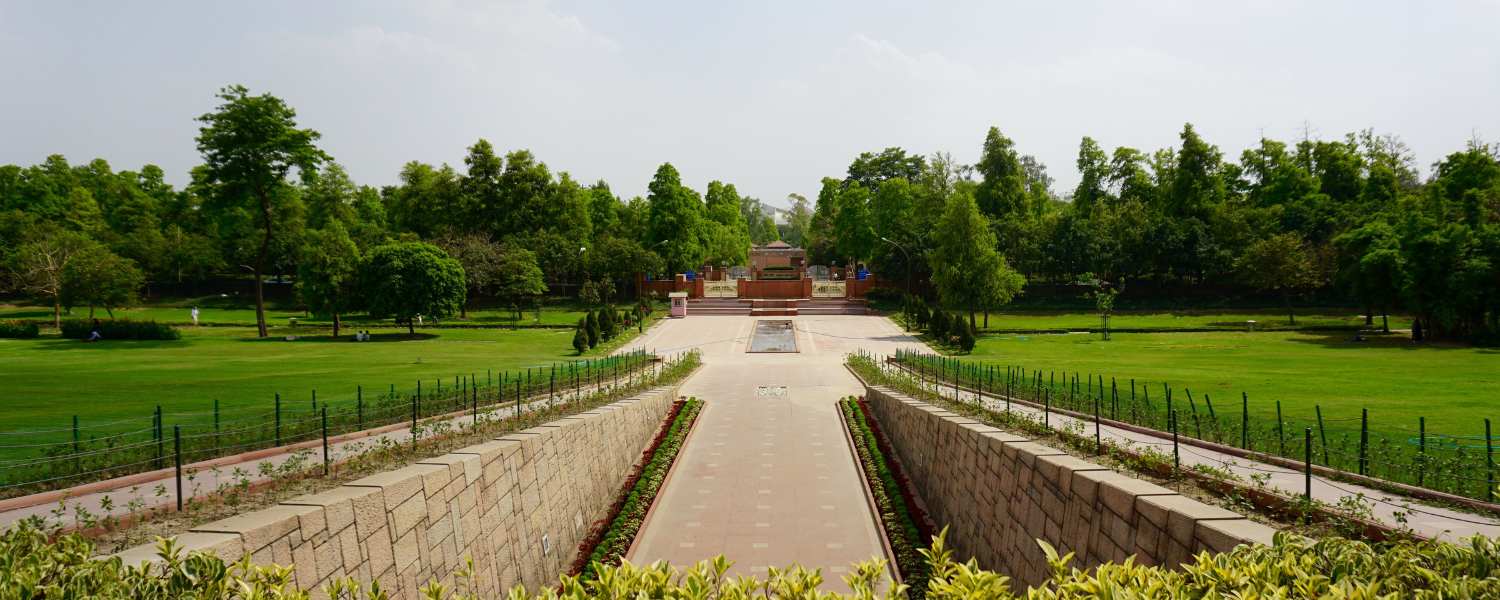
Showcasing artifacts related to Mahatma Gandhi. Adjacent to Mahatma Gandhi’s memorial, the Raj Ghat Museum houses artifacts, photographs, and documents chronicling Gandhi’s life. This history repository complements the tranquil surroundings, offering insights into the Father of the Nation’s philosophy and contributions.
a) Built By: Vanu G. Bhuta
b) Built In:1948
c) Entry fee: Free
d) Opening hours: 10 am to 5 pm. Closed on Mondays
89. Kalan Masjid
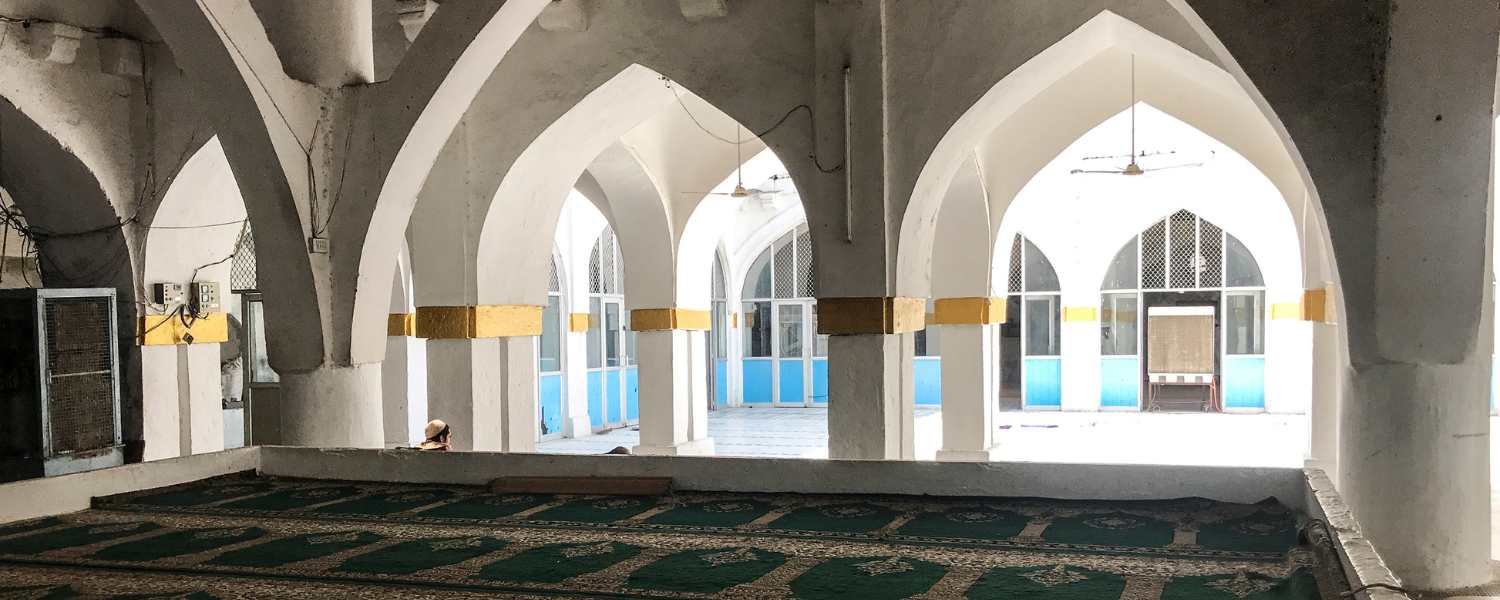
Kalan Masjid, located near Turkman Gate, is a historic mosque representing the architectural grandeur of the Lodi era. Its intricate designs and towering minarets make it a significant cultural landmark, contributing to places to visit in Delhi rich tapestry of Islamic heritage.
90. Art Heritage Gallery
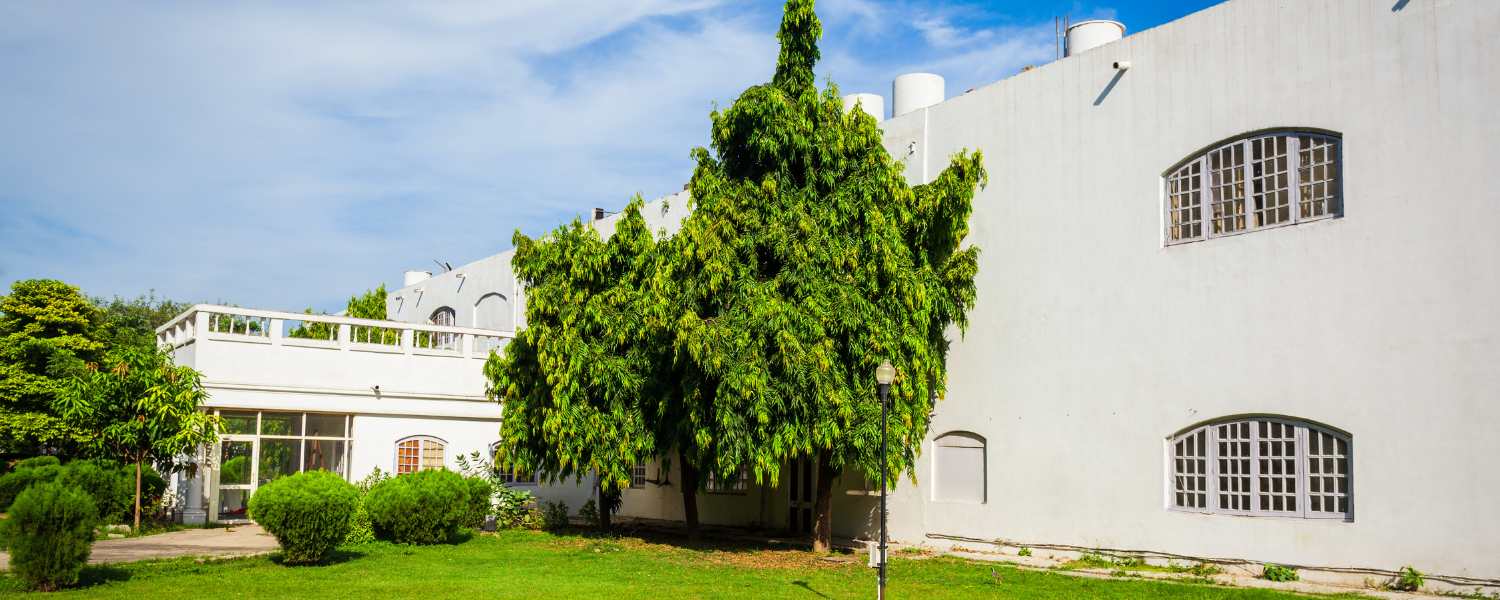
Art Heritage Gallery, nestled in Triveni Kala Sangam, is a prominent cultural space showcasing contemporary Indian art.
The gallery promotes artistic dialogue with its diverse collections and artistic occasions, providing a platform for emerging and established artists to engage with places to visit in Delhi vibrant art scene.
In the bustling tapestry of Delhi, where the ancient and the contemporary seamlessly converge, the journey through “Soulful Capital: 90 Places to Visit in Delhi” is a testament to the city’s timeless charm.
From the majestic historical monuments that echo tales of bygone eras to the vibrant markets pulsating with life, and the rich tapestry of historical places in Delhi, the city is a treasure trove for every seeker of culture, history, and urban experiences.
The diverse array of places, each with its unique narrative, collectively weaves the vibrant fabric of this soulful capital. With its kaleidoscopic hues, places to visit in Delhi is not just a city; it’s an immersive experience that engages the senses and captures the essence of India’s rich cultural heritage.
Conclusion
As we conclude this journey through the places to visit in Delhi, may this guide inspire locals and visitors to delve deeper into the city’s soul, discovering hidden gems and forging unforgettable memories.
Whether navigating the labyrinthine streets of Old Delhi, exploring the serenity of its gardens, or immersing yourself in its dynamic cultural spaces, myriad layers and become a part of its ever-evolving narrative.
Each place visited becomes a chapter in the traveler’s story, enriching the collective history of this soulful capital and making it an eternal muse for those who seek to explore, experience, and embrace the magic woven into the places to visit in Delhi.
